




Los Angeles County filed a lawsuit against Grubhub last month alleging that the company engaged in false advertising and deceptive business practices. The lawsuit specifically accuses Grubhub of using bait-and-switch tactics for pricing, which ultimately misrepresents the cost of food for consumers.
The lawsuit claims that Grubhub’s pricing practices are misleading and deceptive, leading consumers to believe they are paying one price for their food when in reality they are being charged a higher amount. This type of behavior not only harms consumers financially but also erodes trust in the company and the overall
food delivery industry.
Grubhub has faced criticism in the past for its pricing practices, with many consumers expressing frustration over unexpected fees and charges. This lawsuit by Los Angeles County signals a growing pushback against companies that engage in deceptive practices and prioritize profits over transparency and honesty.
This lawsuit shares similarities with complaints filed in Chicago and Washington D.C. where Grubhub was sued for deceptive business practices in 2021 and 2022, respectively. In D.C., Grubhub was ordered to pay $3.5 million in settlement fees, as well as $800,000 in civil penalties in December 2022. That
The lawsuit filed last month alleges that most drivers are not eligible for this health care subsidy due to Grubhub’s requirement for a minimum of 15 hours of “engaged time” each week.
same month, Uber Eats avoided a lawsuit from the city of Chicago by working with the city on a $10 million out-ofcourt settlement.
Service fees have long been part of the consumer experience while using food delivery apps. The lawsuit claims, however, that Grubhub’s alleged practice of tacking on and not disclosing a number of fees, including ones for
small orders, driver benefits, and miscellaneous services, violates California law. The lawsuit alleges that Grubhub often advertises an option to “order online for free,” but does not actually waive any fees at checkout. The fees, according to the suit, are tucked into a hidden drop-down menu rather than
continued on page 120


Restaurant Events LLC, the trade show management company which owns and operates The International Restaurant & Foodservice Show of New York, the Western Foodservice & Hospitality Expo; and the Florida Restaurant & Lodging Show has announced they are rebranding the three events to The New York Restaurant Show, The California Restaurant Show and The Florida Restaurant Show. Restaurant Events also owns the Pizza Tomorrow Summit which is the largest pizza tradeshow on the east coast and is co-located with the Florida Restaurant Show in Orlando, Florida.

restaurant associations to build upon the success and longevity of these events by creating a new brand synergy.”
pitality Alliance (https://www. thenycalliance.org/). The event will be co-located with Coffee Fest New York.
The California Restaurant Show (formerly The Western Foodservice & Hospitality Expo) will take place August 25-27, 2024, at the Los Angeles Convention Center. The trade show is sponsored by the California Restaurant Association (www.calrest.org) and will feature a Pizza Tomorrow Summit Pavilion with exhibits and three full days of US Pizza Team Competitions; and will also be colocated with Coffee Fest Los Angeles.
and will be co-located with the Pizza Tomorrow Summit, which was recently recognized as one of the fastest growing tradeshows in the country by Trade Show Executive magazine.
“We were excited to acquire the leading regional restaurant events in May and are thrilled to announce our rebranding to better align with the marketplaces we serve in New York, California, and Florida. The name changes are just one of several steps in our strategy to grow the events with a strong focus on meeting customer needs,” said Glenn Celentano, Partner & CEO of Restaurant Events LLC. “What’s old, is new again! These are actually the original names for the shows from when they were launched decades ago, and we look forward to working with our state
The official “unveiling” of the new brand names took place on Sunday, March 3, the opening day of the International Restaurant & Foodservice Show of New York (now the New York Restaurant Show). Below are the future dates:
The New York Restaurant Show (formerly The International Restaurant & Foodservice Show of New York) will take place March 23-25, 2025, at the Javits Center in New York City. The show is sponsored by the New York State Restaurant Association (www.nysra.org) and in partnership with the New York City Hos-
“The name changes are just one of several steps in our strategy to grow the events with a strong focus on meeting customer needs.”
— Glenn Celentano, Partner & CEO of Restaurant Events LLC
The Pizza Tomorrow Summit, which was launched in 2022 will once again be co-located with the Florida Restaurant Show. The event offers an extensive range of products from hundreds of vendors, a robust conference program, as well as entertaining and informative pizza competitions and demonstrations by the U.S. Pizza Team. The trade show and conference was recently recognized as one of the fastest growing trade shows in the country by Trade Show Executive magazine. The show will also feature a pavilion and U.S. Pizza Team competitions at the California Restaurant Show in Los Angeles, CA.
The Florida Restaurant Show (formerly the The Florida Restaurant & Lodging Show) will take place November 6-7, 2024, at the Orange County Convention Center in Orlando, FL. The event is sponsored by the Florida Restaurant & Lodging Association (www.frla.org)
The three restaurant trade shows and conferences offer access to the hottest menu trends, state-of-the-art design and decor, the best in business education, and hundreds of the leading vendors and purveyors dedicated to serving the restaurant & foodservice community — all under one roof. The trade show floors feature hundreds of leading vendors demonstrating and sampling the newest food products, technology and equipment for the restaurant, foodservice, specialty beverage and hospitality markets.
Attendees have access to a free education program offering more than fifty complimentary sessions, led by subject matter experts, and are included with show admission. The content, developed in partnership with the State Associations and a Conference Advisory Board, is focused on all segments of the industry from independent restaurant owners to chain operators to commercial and institutional foodservice operations. The events also offer dozens of culinary demonstrations and competitions in the Culinary Innovation Theater.
Restaurant Events, LLC is a trade show management company in the restaurant and foodservice industries. For information about exhibiting, sponsoring or attending any of the upcoming events, visit newyorkrestaurantshow.com; westernfoodexpo.com; flrestaurantshow.com; and pizzatomorrow.com.
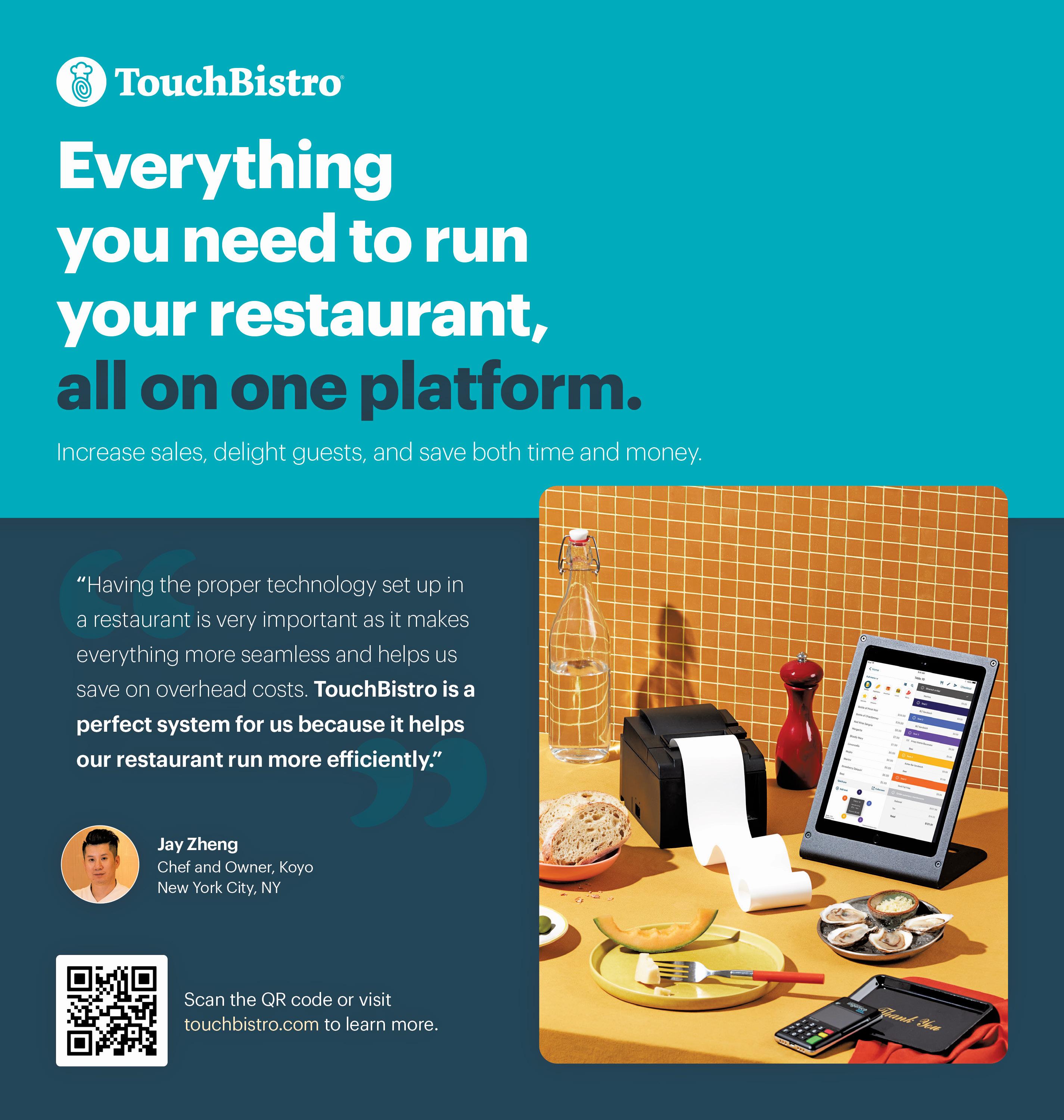
estaurants have various options when it comes to expanding their brands beyond just opening new locations. One popular choice is to create signature sauces that can be sold in stores or online. Another option for restaurants looking to expand their brands is to license their concepts to hotel groups which in most cases means new eateries in casino properties.
New York City based Major Food Group, has an even bigger appetite for expansion. The company announced last month a partnership to develop and curate dining experiences at Hard Rock Hotel & Casino properties around the globe. MFG’s support of Hard Rock will extend to proposed projects as well.
Through the strategic partnership with Hard Rock, MFG will act in an advisory role to curate new food and beverage programming at existing integrated resort locations such as Seminole Hard Rock Hotel & Casino Hollywood, Seminole Hard Rock Hotel & Casino Tampa, and Hard Rock Hotel & Casino Atlantic City. In addition, MFG will support restaurant concept creation for Hard Rock properties in development like Hard Rock Hotel & Casino Athens.
“We always strive to provide our guests with memorable dining experiences, so we could think of no better partner to take things to new levels at these properties than the team at Major Food Group,” said Jim Allen, Chairman of Hard Rock International and CEO of Seminole Gaming. “We look forward to a terrific collaboration and bringing exciting new options to our guests.”
Jeff Zalaznick, Co-Owner of Major Food Group added, “This is a truly unique opportunity to bring MFG’s deep
“This is a truly unique opportunity to bring MFG’s deep expertise and innovation together with a hotel and casino leader to provide incredible food and beverage experiences for Hard Rock guests at locations both here and abroad.” — Jeff Zalaznick
expertise and innovation together with a hotel and casino leader to provide incredible food and beverage experiences for Hard Rock guests at locations both here and abroad.”
This partnership builds upon the ongoing collaborative efforts between the two world-renowned hospitality brands following the successful CARBONE residency at Cipresso at Seminole Hard Rock Hotel & Casino Hollywood in December. The incredible dining experience was part of the New Era in Gaming for Florida celebration marking Seminole Gaming’s historic launch of Craps, Roulette and Sports Betting at six properties across the state.
Major Food Group (MFG) is one of the most celebrated, innovative, and successful companies in the history of the hospitality business. Founded a decade ago by Jeff Zalaznick, Mario Carbone, and Rich Torrisi, MFG has established a global empire that exceeds forty restaurants, private clubs, bars, and hotels, spanning seven countries, and has redefined industry standards along the way.
Among the brand’s numerous iconic concepts—which represent the pinnacle of dining and luxury in cities from New York, Miami and Las Vegas to Paris, Toronto, Hong Kong and the Middle East
—are CARBONE, The Grill, Dirty French, ZZ’s Club, Sadelle’s, Contessa, and Torrisi Bar & Restaurant. While each brand this creative force brings to life is distinct, they all reflect MFG’s refined, celebratory, and thoroughly contemporary approach to its craft.
Hard Rock International (HRI) is one of the most globally recognized companies with venues in over 70 countries spanning 309 locations that include owned/licensed or managed Hotels, Casinos, Rock Shops®, Live Performance Venues and Cafes. HRI also launched a joint venture named Hard Rock Digital in 2020, an online sportsbook, retail sportsbook and internet gaming platform.
In 2023, Hard Rock Hotels was honored by J.D. Power’s North America Hotel Guest Satisfaction Index Study as the number one Upper Upscale Hotels brand in Outstanding Guest Satisfaction for the fourth time over the last five years. Hard Rock was also honored by Forbes among the World’s Best Employers, as well as Best Employers for Women, Diversity and New Grads, Best Brands for Social Impact, Customer Service All-Star and a Top Large Employer in the Travel & Leisure, Gaming, and Entertainment Industry.
Art
continued on page 102


From fast food to high end restaurants, you’ve undoubtedly noticed a boon of plant-based protein options in the past few years. Will it last, or is plant-based just the latest in a long line of fad diets? If it’s here to stay, what do restaurants need to know before adding alternative proteins to their menu? To understand alternative proteins, we need to look at what is driving the individuals following a plantbased diet and how it’s changed over the years.
Explore the Past, Embrace the Present, Shape the Future
Plant-based diets have been around for much longer than there have been restaurants and grocery stores. Historically, it’s been out of necessity or lack of access to meat. More recently it’s often been considered an alternative diet, limited to those with religious restrictions or as an act of principle. Now, it’s become more mainstream. The increased demand for plant-based protein options has spurred innovations that have only recently become widely available.
New plant-based protein options solved a longstanding problem; people following a vegetarian or vegan diet of ten struggled to get enough protein. Beans and tofu were stereotypically considered unappealing choices for many people.
Globalization and technology have helped plant-based diets become as popular as they are today. Wide varieties of foods are now accessible to consumers thousands of miles from their origin. This has also expanded consumers’ palettes to new flavors and dishes.
Technology has further evolved plantbased options to include meat lookalikes. We haven’t invented more plants to eat, but we’ve dramatically changed how they are processed and prepared, leading to vegetarian options that are high in protein and remind us of foods we’re familiar with. The result is a booming plant-based protein industry.
There are conflicting figures regarding the number of individuals who follow a plant-based diet. Some of this ambiguity could be because many consumers keep loose definitions of vegetarian or plantbased. Traditionally, a plant-based diet was vegetarian but not vegan. And people who eat both meat and plants - the majority of people - are, by definition, omnivores. However, a growing number of people refer to themselves as “flexitarian,” which indicates they try to limit the meat they eat, or they are vegetarian some of the time. The technicalities of these definitions don’t matter to consumers - perception is reality, and a growing
number of people consider themselves part of the plant-based diet community.
That aside, Gallup polls have the percentage of Americans identifying as vegetarian sitting at between 3-5%. While Americans get two thirds of their protein from animal sources, 50% of Americans are familiar with plant-based meat substitutes and 40% have tried them.
What we can take away from the data is more consumers are becoming comfortable with foregoing meat at meals or trying alternative options. Many individuals regularly have meat-free meals, evidenced by trends like “Meatless Monday” and by the growing market. The alternative protein market is a multibillion dollar market poised to grow substantially over the next decade.
As for the price of these plant-based proteins, it’s a matter of scale. They are currently priced higher than their meat counterparts, but the more popular they become the more competitive those prices will be.
And scale could very well be possible as today’s young people grow into a larger buying power block, since the younger generations are showing more signs of eating plant-based diets at least some of the time.

While some consumers abstain from meat for religious reasons or specific allergies, there are a few main drivers causing people to experiment more with plant-based protein.
Though people used to assume a vegetarian diet was nutritionally deficient, more recently a vegetarian
diet has been touted as a healthy choice. This isn’t always the case - It’s perfectly possible to be vegetarian and subsist on a diet of sugary drinks and junk food. However, there’s some truth to those health claims.
Vegetarians tend to weigh less than their meat-eating counterparts, and their diets tend to be lower in calories and include lower levels of saturated fats and cholesterol. Some studies have suggested vegetarians have lower cancer rates and are less likely to die of certain heart diseases. They have lower risk of chronic disease and diabetes, and their diets contain more fiber, potassium, and some vitamins. These numerous health benefits are very compelling to individuals trying to improve their lifestyle.
Consumers are more informed than ever before and have access to recipes and health and nutrition tips, like the current emphasis on gut health and macronutrients. Despite the transient popularity of extreme and restrictive diets, there is a discernible shift towards moderation, reflecting an evolving mindset. All these trends complement a plant-based diet.
Some individuals disagree with the treatment of animals. People with these concerns may limit their meat intake, be vegetarian, or they could follow a vegan diet. Plant-based dishes imply they are free of meat, but not necessarily animal byproduct. It’s an important distinction to make, as the different consumers who enjoy plant-based dishes have very different requirements as to what that means to them.
Other people are concerned about
continued on page 118

Vinyl Steakhouse is NYC’s multi-sensory and inclusive restaurant that is rewriting the traditional rules of steakhouses with a heavy focus on music and the local arts through a Sip N Spin curated experience where sommeliers pair food and wine with songs based on the flavors of the food and wine and notes of the musical album and course.
The DJ Sommeliers carefully craft an experience for guests from their chefdriven menu, four in house sommeliers and the over 2,700 records that adorn the
walls at Vinyl Steakhouse.
Kevin and Sofia Flannery introduce us to the Sip N Spin experience.
What’s your background and career path that led you two to become Sommeliers and Restaurant Owners?
Kevin: My Sommelier story began in Washington, D.C., around 2006 when the corporate beverage director for Morton’s The Steakhouse went to an auction and purchased about $250,000 worth of cellar worthy wine and I was tasked with listing it and ultimately being the person


to sell it. I am a bit of an overachiever, so I asked the company if I could be their first ever Court of Master Sommelier trained manager. After securing that role, I fell in love with wine and the process and became the first ever Certified Sommelier in the company at that time.
My path toward Restaurant Ownership started long before even becoming a Sommelier. I felt the urge to conceptually create what would come to be called Vinyl Steakhouse when I was just 23 years old working in fine dining Steakhouses that were ripe with stuffi-

ness including bow ties, tuxedos, white table cloths, strict dress codes and exclusively Frank Sinatra and Dean Martin being played. However, they were also ripe with incredible beef, outstanding service standards & expectations and an intimate dark setting. I kept all three of those things and took away the stuffiness of a typical steakhouse to create Vinyl Steakhouse, a fine dining steakhouse that pairs the best in steak and seafood quality with genuine hospitality and service in an elegant yet real setting, while being casually welcomed and having no dress code and guests can come as they are to dine with us and be welcomed no matter what.
Sofia: I fell in love with wine on a fateful trip to Sonoma Valley where wine started to make sense to me. The wine making, the culture, the chemistry, the indescribable feeling of having a sip of a delicious wine on rolling hills while the sun is setting- all of this combined with being married to Kevin who is a certified Sommelier, led me down the path
continued on page 132

What does it really cost to buy and own a commercial ice machine?
The long-term answer might surprise you.
If you’re a seasoned business operator, you’ve probably owned ice machines for years without looking too closely at what you’ve spent on them over time. You may know what you paid for your current ice equipment and what purchase price to expect for your next ice machine, but that initial retail price is only the start of your spending.
The total cost of ice machine ownership is the sum of two parts—the purchase price and the upkeep. Think of commercial ice equipment like your vehicle. Once you buy it, you still need to budget for ongoing maintenance and repair expenses that will inevitably come up.
Let’s take a closer look at the total cost of ice equipment ownership.
The most you’ll spend on your ice machine at one time will be the purchase price, which ranges from $5000-$10,000 for popular models. If you buy a machine that needs a bin, that bin will most likely be sold separately. Most small and first-time business owners finance their equipment. In that case, you’ll be making monthly payments with interest for 2–3 years or longer.
Once you buy the ice machine, you’ll have to figure out who’s installing it and how much it will cost. Even if installation is free through your equipment dealer or online retailer, you could eventually incur unintended costs from

a bad installation or from choosing the wrong ice machine. Badly installed ice machines need to be reinstalled, and the wrong ice machine model needs to be replaced with the right one.
Most business owners believe that the purchase price represents 80% of ice machine ownership costs. In fact, it’s just the opposite. The purchase price is only about 20% of the total cost of ice machine ownership!
Post-purchase ice machine bills are inevitable. Manufacturers recommend a minimum of 2 professional cleanings a year, and every ice machine needs repairing eventually. The average cost of a commercial ice machine repair in 2021 was $708.41—and some repairs can cost as much as $2000!
Think your ice machine’s warranty will tide you over in the beginning? 80% of ice machine service calls made during the warranty period are not covered under warranty!
On top of maintenance and repairs,
there are other post-purchase costs. If your ice machine breaks down completely, you’ll have to buy backup ice while waiting for your service company to fix the issue. And let’s not forget the utility bills. Ice machines use a lot of water and will also contribute to your electricity consumption. The average 600lb air-cooled ice machine uses an average of 44,000 gallons of water per year!
When you need to replace an old or broken ice machine, you’ll spend that same amount again. The average commercial ice machine only lasts 7–8 years, but with the best maintenance performed at the right frequency, ice machines can last 20 years!
If you buy your own, expect a lifespan closer to those 7 or 8 years—especially if you neglect the maintenance. If you stay in business for 20 years, you can expect to buy an ice machine 2 or 3 times. If your business grows significantly and requires more ice per day, you’ll have to buy a new unit sooner than you anticipated at some point in the future.
Owning ice equipment will also cost
you something even more valuable than money: your time. Instead of spending time looking for a trustworthy service company, tracking maintenance appointments, buying backup ice, and scheduling repairs when the ice machine breaks down, you could be spending time on profit-generating areas of your business.
The classic business recommendation from finance experts states to earn back 10–30% for every capital dollar you invest. Ice isn’t something your customers pay for, and it’s not a reason they choose your business over the competition. When you invest capital in a non-value-added asset like your ice machine, your value-added assets need to yield a higher-than-average return to compensate.
You can accept that you aren’t getting your money back on your ice machine investment—but the savviest business owners find every possible way to reduce their spending while maximizing their profits. Ice machine ownership just doesn’t fit into that strategy.
You might be wondering why nobody’s talking about the real cost behind ice machines. The truth is few people in the commercial ice machine industry understand the total cost and even fewer of them are paying attention to the numbers.
Once you buy an ice machine, the only way the manufacturer, your foodservice equipment dealer, and your ice machine service company make money is the machine breaking down and ultimately dying. Ice machine manufactur-
continued on page 120
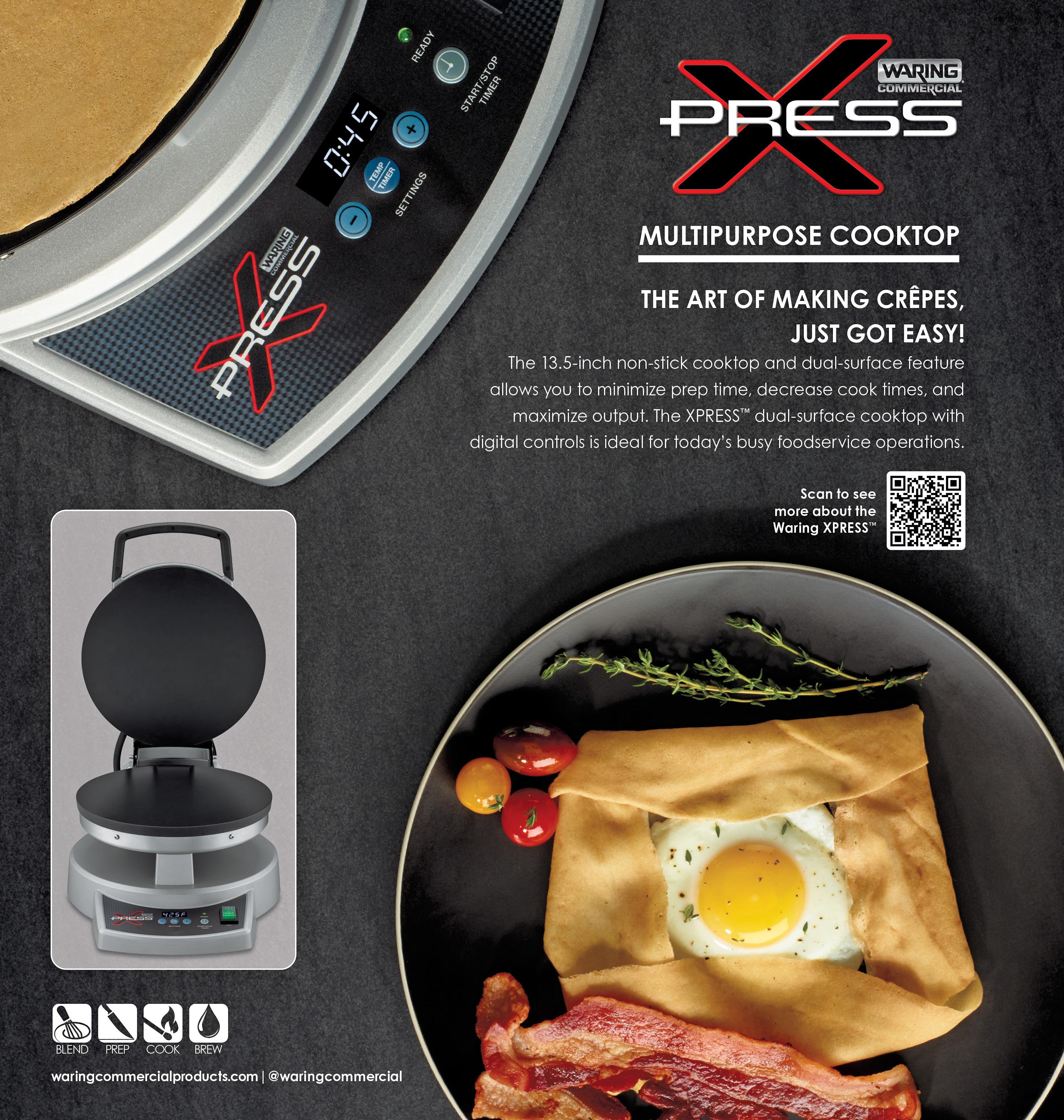
As a female leader in the commercial food service industry, Jennifer Ward, the current Chief Revenue Officer at the equipment and supply manufacturing giant Atosa, has decades of experience and wisdom under her belt. As the company sets its sights on a billion-dollar valuation with massive growth and kitchen automation and robotics development, Ward reflects on her career, Atosa’s line of kitchen automation, robotics, and the future of the company.
Ward’s decades of experience began at Cleveland Range, a food service equipment manufacturer 33 years ago. Although she was with Cleveland Range briefly, it was there that she discovered her love for the industry, thanks in large part to supportive mentorship from colleagues there. She left to pursue opportunities with E&S rep groups to gain an intimate understanding of both front of the
“I couldn’t turn my back on the incredible brick-and-mortar dealers who have supported me throughout my entire career.” — Jennifer Ward
house cooking and back of the house refrigeration, the latter being her true passion.
Ward soon thereafter joined refrigeration brand Beverage-Air, where she thrived for more than a decade. But her departure from “Bev-Air” would set her up to join Atosa which would become the brand she is most passionate about, cementing her foundation for her future career and the company’s success.
Ward’s career has consistently revolved around championing the nation’s vast network of multi-generational Food Service equipment and supply dealers, who have long served

end-user restaurants and foodservice operators. Her unwavering commitment to supporting brick-and-mortar dealers led her to Atosa, as the company shared her core beliefs. “I couldn’t turn my back on the incredible brick-and-mortar dealers who have supported me throughout my entire career,” Ward explained.
Ward has tirelessly given back to the industry and mentorship is a career tenet that has stuck with her since the beginning. At last year’s National Restaurant Association Show (NRA), Ward founded Women Industry Leaders (WIL) along with several other amazing women for their inaugural
meeting. WIL currently is a free organization that looks to support young women and women in general. “It’s about empowering, mentoring, and educating women in the food service industry, but it’s also about educating everyone,” she concluded. Her goal is to help introduce more young women to the industry and help them take advantage of fantastic career opportunities, and to give them the resources necessary to be successful long-term, including networking, mentorship, and education. “When I started, I was one of only a few women in the industry – I’m a strong woman in general, but it was still very intimidating and scary… it wasn’t easy,” Ward reflected. Her tenure at Atosa, the refrigeration leader who has an expansive product offering including cooking equipment, ice machines, kitchen automation and much more began
continued on page 142

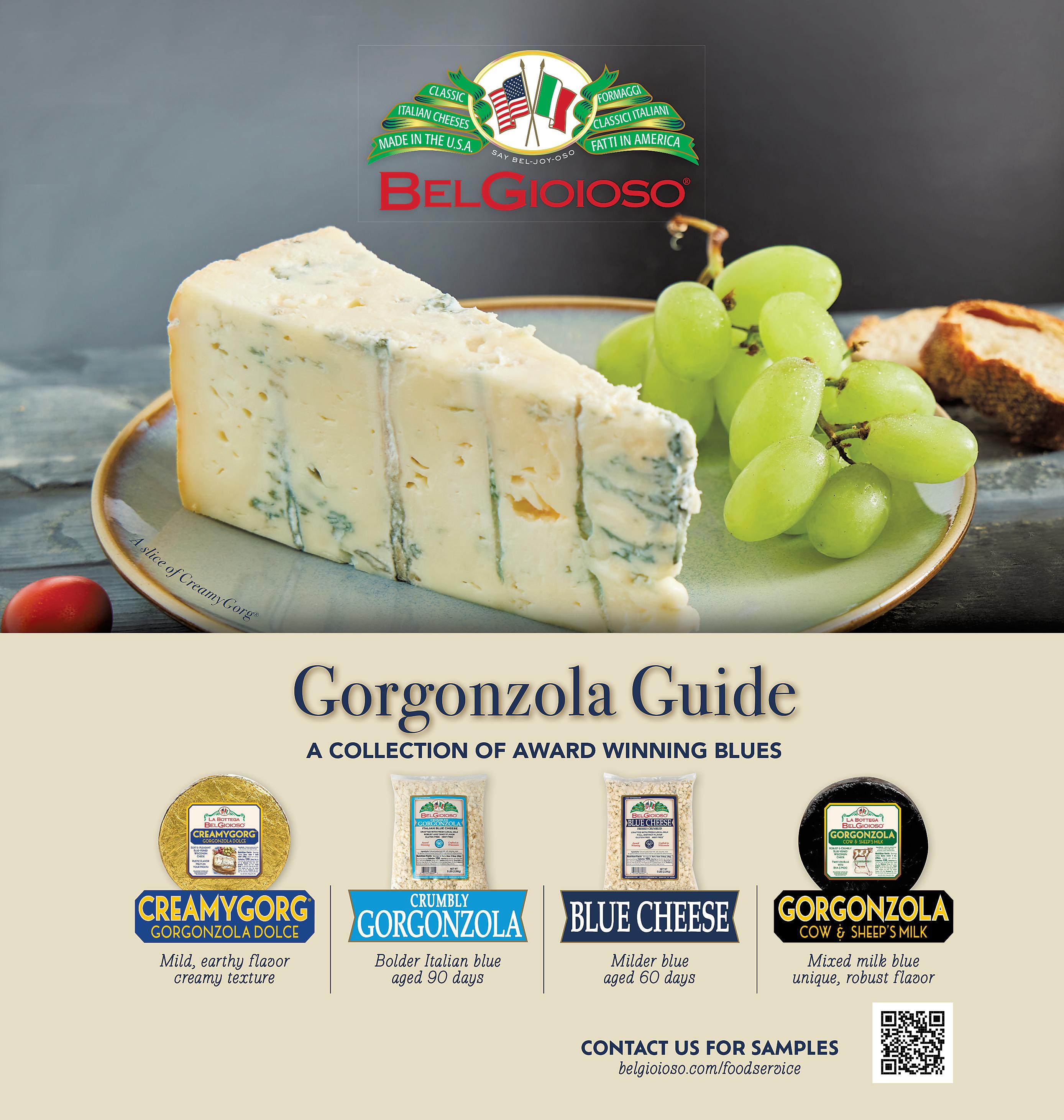
Making sure that your cook and prepware have been thoroughly cleaned and sanitized is an essential part of every commercial foodservice operation. Yet, many opportunities arise for things to go wrong, disrupting productivity and potentially jeopardizing your guest’s in-house experience.
If you know what to look for and establish routine maintenance, these common warewashing mistakes can be easily avoided. Here are the six most common errors that can compromise your washing program, and tips to solve them.
The first mistake begins at the very beginning of the warewashing process: preparing the cookware to be washed. Not pre-washing dishes enough is actually the most common mistake amongst restaurant operations, as leftover food debris can clog dish machines and cause them to malfunction, disrupting your routine. When food particles build up excessively inside the dishwashing machine, it can clog many key features, like the spray nozzles, pump screen, and drains, resulting in improper or insufficient washing, or even complete system failure. This, in turn, wastes labor and product. Dishes recontaminated by food particles lodged in the water system will need to be recleaned. Additionally, the dishwasher can sense the high soil level of improperly pre-washed dishes and will use more detergent as a result, expending dishwashing resources faster, costing you more per load.
Another common dishwash -
Not pre-washing dishes enough is actually the most common mistake amongst restaurant operations, as leftover food debris can clog dish machines and cause them to malfunction, disrupting your routine.
ing mistake occurs when dishes are improperly and haphazardly loaded into the machine. When a rack is overcrowded with cookware, water and detergent distributed from the spray nozzles cannot reach every dish, resulting in improper washing and sanitizing. Much like improper prewashing, this shielding effect wastes resources, as dirty dishes require rewashing, costing you more in labor and dishwashing supplies. Improper
loading also poses a threat to the dishwasher machinery, as smaller appliances, like cutlery or other smaller utensils, can be dislodged by spray pressure and get caught in the pump or drain. This can compromise the dishwasher, disrupting your cleaning operation until a repair team arrives. To ensure that you’ve properly loaded the dishwasher, consider the following tips: glasses, cups, bowls, or any other hollowed-out appliance

Laura Craven is the Vice President, Marketing at Imperial Dade, a North American distribution company headquartered in Jersey City, NJ. Her responsibilities include marketing communications, brand and reputation management, experiential marketing events, and media relations. Laura has been with the company for over 19 years and has contributed to the organization’s growth and brand awareness. A LEED AP, Laura consults on sustainability initiatives and as a GBAC Trained Technician she assists customers develop cleaning programs.
should be placed upside down to prevent water from collecting in their depressions. Plates and other flatware should be arranged neatly in the dish racks on their sides, to ensure proper rinsing and equal water distribution. Provide each dish ample space to prevent shielding by limiting the number of dishes per slot to one.

Calibrating your machine’s pressure setting is an essential part of ensuring that your cookware is being thoroughly cleaned with every wash; improper pressure setting can reduce machine effectiveness and may not satisfy health regulations. In general, it is good practice for your machine to be set within the 15 to 25 PSI range; too low, and your dishwares may not be properly cleaned, requiring a re-wash. Too high, and your dishwares may develop water spots and require extended drying times. Even though your service technician should check the pressure gauges every time they maintain your machine, you should check the pressure readings af-
continued on page 138

Understanding your employees’ rights is paramount to protecting your business. From discrimination to wrongful termination, employment practice claims can carry a heavy price tag when businesses fail to have the right risk management procedures and insurance coverage in place.
It’s impossible to prevent all lawsuits. However, you can take mitigating steps to reduce your business’ risk and high cost associated with employment-related lawsuits through the following best practices:
1) Create policies and procedures. The first step and most important step is to create and implement concrete policies and procedures.
Make sure that there are specific ways and means to address common onthe-job issues that could lead to a lawsuit. For instance, policies addressing hiring, promotions, evaluations, changes in status, training, harassment, and termination should all be considered. It is not about eliminating all employee questions, but instead about making sure that the employer and employee expectations meet reality. The best way to institute formal policies and procedures is to work with a seasoned employment law attorney to ensure that you’ve covered all your bases as
an employer.
• For many employees, the employer/employee relationship is an at-will one, meaning it can be terminated with or without cause by either the employee or their employer. The employee handbook will become the closest thing that the employer and employee have to a contract, which is why it is so vital. An employee hand -
book is the best way to identify and outline the rights and policies.
• Make sure the handbook is a living, breathing document that is updated, reviewed and revised with counsel at least annually, as each year there is new case law, new legal issues that may not have ripe case laws and new considerations that should be included in the employee handbook. It is important to have each employee sign the handbook to show they are aware of and agree to the policies and procedures inside.


Robert Fiorito serves as Vice President with HUB International Northeast, a leading global insurance brokerage, where he specializes in providing insurance services to the restaurant industry. As a 25+ year veteran and former restaurateur himself, Robert has worked with a wide array of restaurant and food service businesses, ranging from fast-food chains to upscale, “white tablecloth” dining establishments. Robert can be reached at 212-3382324 or by email at robert.fiorito@ hubinternational.com.
the question to ask is: do you actually have the necessary policies and procedures in place to ensure defensibility?” You’ll have to prove yourself each time you get insurance by providing information about past claims and what remedial actions were taken.
2) Document it. Keep a written log of disciplinary and absentee issues, complaints and anything that falls under HR’s jurisdiction.
• Insurance companies follow claims and litigation trends so they ask a lot of questions in their underwriting process. Documented policies and procedures will enable you to examine exclusions or risks specific to your business and their impact/defense as it relates to employee liability. Working with an experienced broker will ensure all liabilities unique to your business are considered.
• When you’re getting employment practice insurance or renewing it,
• This documentation will serve as the first line of defense should an employee discrimination claim be filed against you, as you’ll have written proof of what happened with a disgruntled employee along the way.
• If you have to defend an employee termination, for example, based on their absenteeism, you’re going to have to build a case and documentation is going to be key. You’ll need to be able to say: the employee was 50 minutes late, 20 times and provide the dates and specifics.
3) Understand third-party risks. Look at your risks from a third party standpoint. Consider the legal ramifications of your vendors, clients, customers, potential employees, and more being a potential liability. Make sure whoever is interfacing with third
continued on page 128

In the two weeks since Beyonce’s song “Texas Hold ‘Em” debuted and quickly hit the number one spot on the Billboard 100 there has been a lot of talk about this song. Is it country, is it not? Is it today’s country? Is it new country? Old country? Let’s go with girl from Houston singing about her home state of Texas and there’s dancing, tornados and whiskey…yes, it is country, okay? Even if you don’t agree with that you can acknowledge this – history was made as she was the first Black woman to top the 100 chart with a country song. And that’s something new.
It is also a perfect beat to bartend by; a bouncy metronome marking out the time it should take to reach a bottle, glassware, garnish or sink. If you have the right bar set up.
So many American bars do not. That is a huge silent problem for bartenders young and old who are punishing their bodies on every shift, straining, reaching and stretching or heading twelve steps to the other side of the bar for an ingredient. It is also an issue for guests, even if they can’t articulate exactly what could be better.
Nico de Soto, Cocktail Program Consultant for Experimental Cocktail Club, has no problem articulating what could be better with today’s bars. When asked what he would change he says, “First of all the height is too low. Most of the bars are too low. Then it would be the space because everything isn’t functional – I have to take five steps or so to reach something. In the ideal bar, everything is within your reach.
Sire Negri, a veteran bartender whom you’ll find behind bars
on the beaches of South Walton, Florida, has reached a point in his career where he has worked at all sorts of bars. From the ones where you have to duck under the bar top to get out at the end of your shift, to a brand-new bar with wells in front, a three-tiered bottle rack right next to that, then a dump sink. He looks back at the first bar he worked behind fondly as he recounts how it made every night so much easier when it came to making drinks and keeping customers happy. He shares, “Bartenders shouldn’t have to move more than three feet in any direction. I loved that bar because everything was right there, and a trash can and glasses were on the other side.”
He stresses the importance of having everything within a close radius to avoid the strain, especially in a serious cocktail program, and he advises, “If I am ever considering going to work somewhere else I always ask – and I think everyone should ask this on their interview – ‘hey, can I peek behind your bar?’”
That peek offers Negri an opportunity to evaluate equipment placement, moving parts like dishwasher doors, ladders and the bartenders’ aisle – the space between equipment and the back bar – to determine how much turning, twisting, shimmying, lifting and bending he’ll have to do nightly. He admits to making this a priority because he’s not in his 20s anymore, and strongly advises that everyone ask the same questions when sitting down with a potential new manager, as he points out that age doesn’t matter because it’s going to wear on you whether you feel it now or later, “Think about where is this drink production going to go and how is it going to work, and will I be more tired than I should be because I have to make crazy strange movements all shift?”

Francine Cohen is an award-winning journalist covering the business of the f&b/hospitality industry, and a proud native Washingtonian (DC). In addition to her work as a journalist she keeps busy fundraising for Citymeals on Wheels, Les Dames d’Escoffier, NY Women’s Culinary Alliance, and the USBG Foundation and serves as chief storyteller and brand steward for clients in the food and beverage sector by providing them with strategic marketing and business growth guidance. She has never met a cheese or beverage she does not like, and lives with her husband in New York; leaving him behind to visit New Orleans every summer. (Except 2020-21. Darn pandemic.) You can reach her at francinecohen@mindspring.com
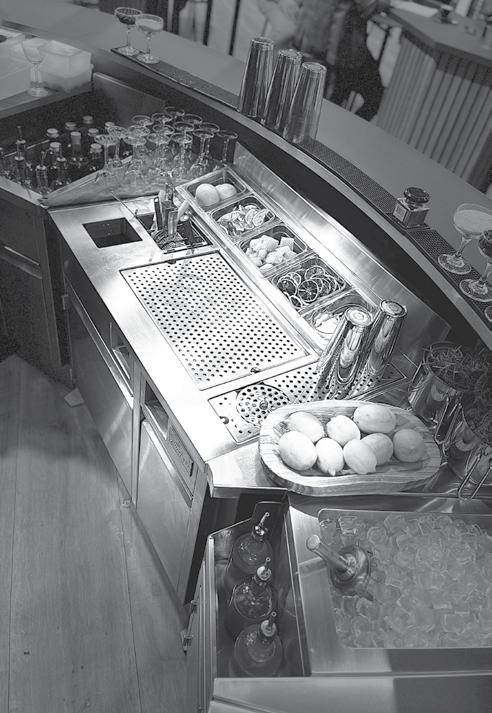
Bar design specialist Tobin Ellis, the founder of Studio Barmagic, agrees. He adds, “When you get a new job you want to see how the bar is laid out. You need to know what I have to deal with every night?” He knows the stretching, walking too far for something, and contortion issue have been problems for even longer that the last 21 years he has been designing bars. He points out that when he began working on bar design and then, nine years ago partnered with Perlick to create equipment with his name on it, the Tobin Ellis Signa-
ture Series by Perlick – bar designs were pretty antiquated. He shares, “All the patents for underbar equipment came from the 1950s. This was the first time since the 1950s that any equipment manufacturers thought about redesigning things and considering that maybe there’s a better way. I knew there was.”
He continues, “When I designed the original bartender’s cockpit, I had been seeing all the frustrations of friends and our tribe as they struggled to be as fast and great behind bar as they could be; the equipment was holding them back.”
Daniel Grajewski, the Senior Director of Wine & Beverage Jose Andres Group, was determined to break the cycle when he opened Bazar in New York in 2023, and he is thrilled they brought Behind Bars from Oslo on to install the company’s Tayer series bar. It’s a design based on a hexagon, and rather than having bottles at knee level where bartenders have to lean over, the bottles are easily within reach. The shape of the bar itself is rectangular, but according to Grajewski, each piece on the top is perforated and can be a flat surface. He explains, “We were really paying attention to ergonomics. When I explain it to people, I often reference European style bars; there they are always using the bar top for service, so they don’t have to start reaching. So
continued on page 124

Finding the right technology for your restaurant or bar can be a game-changer when it comes to protecting your leading source of income - the cocktail and bar business. Pay & Pour technology not only streamlines the ordering and payment process but also eliminates the stress caused by increasing minimum wage and a shrinking labor pool.
With this innovative solution, you can reduce labor costs by automating the pouring and payment process, ensuring accuracy and efficiency. By embracing this technology, you can focus on delivering exceptional customer experiences and maximizing your profitability without compromising on quality.
As the craft beer market flourishes and cocktail creativity is embraced by dining patrons, food service operations are looking for new ways to provide quality experiences for customers while simultaneously increasing revenue and reducing waste. Over 530 businesses across the United States, including hotels, resorts, and grocery stores, have turned to the up-and-coming powerhouse, PourMyBeer, to access its state-of-the-art self-serve beer and cocktail technology. Their recent industry report highlights the reach that the company has made over the last few years and its edge in today’s ever-evolving beverage
“I was out with a bunch of friends and couldn’t get a drink [due to slow service], and it just hit me: we can pump our own gas, why can’t we pour our own drinks?” — Josh Goodman
industry.
“Like many businesses, ours came out of a place of discomfort,” said Josh Goodman, the founder and CEO of PourMyBeer. “I was out with a bunch of friends and couldn’t get a drink [due to slow service], and it just hit me: we can pump our own gas, why can’t we pour our own drinks?”
 Josh Goodman, Founder & CEO, PourMyBeer
Josh Goodman, Founder & CEO, PourMyBeer
Goodman came up with the idea for self-serve drinks back in 2009, and since then, the company has grown exponentially, despite his initial lack of entrepreneurial knowledge. “Like most new businesses, we had a lot of expensive lessons, but our motto is that we learn from those mistakes,” he said, explaining the ups-and-downs of the company’s early days. After a few partners fell through, Goodman partnered with a business out of Austria that created the first prototypes.
By 2015, PourMyBeer officially kicked off. The company sold about 30 projects throughout the first year of business, and since then, it has only continued growing, reaching both small businesses and large marketplaces, such as Whole Foods and Dave and Busters.
The self-serve beverage taps work with customers and employees to make the beverage dispensing experience quick and easy. They are customizable to all types of food service operations, and operators can choose how many taps they want to have installed.
“We have our installations down to around 40 minutes per self-pour tap when we get onsite,” Goodman said. “Our team
prides itself on setting every customer up for success through education and project management, which can take about 3 months from the time a contract is secured.”
The majority of PourMyBeer’s customers utilize their Point of Sales integrations. Upon arrival, customers can open a tab and connect it to an RFID card or have a QR code texted to them, giving them access to pour any beverage from the self-pour system. Each tap typically has between two and three beverage options, along with information about the beverage itself. “We also have a payment solution for live events and stadiums called “Pay & Pour,” where guests authorize their credit card using the card or their phone, and they can begin pouring,” Goodman explained.
If a customer can’t decide what to purchase, it’s not a problem, nor is it a cost efficiency issue for the business. The taps associated with the screen above it allow guests to see the amount of ounces they’re pouring and what they’re being charged, as they pour. “This empowers the user to sample as much or as little as they want,” Goodman said. “They’re getting charged for the samples, but it’s an incremental amount.”
The complex technology behind
continued on page 140
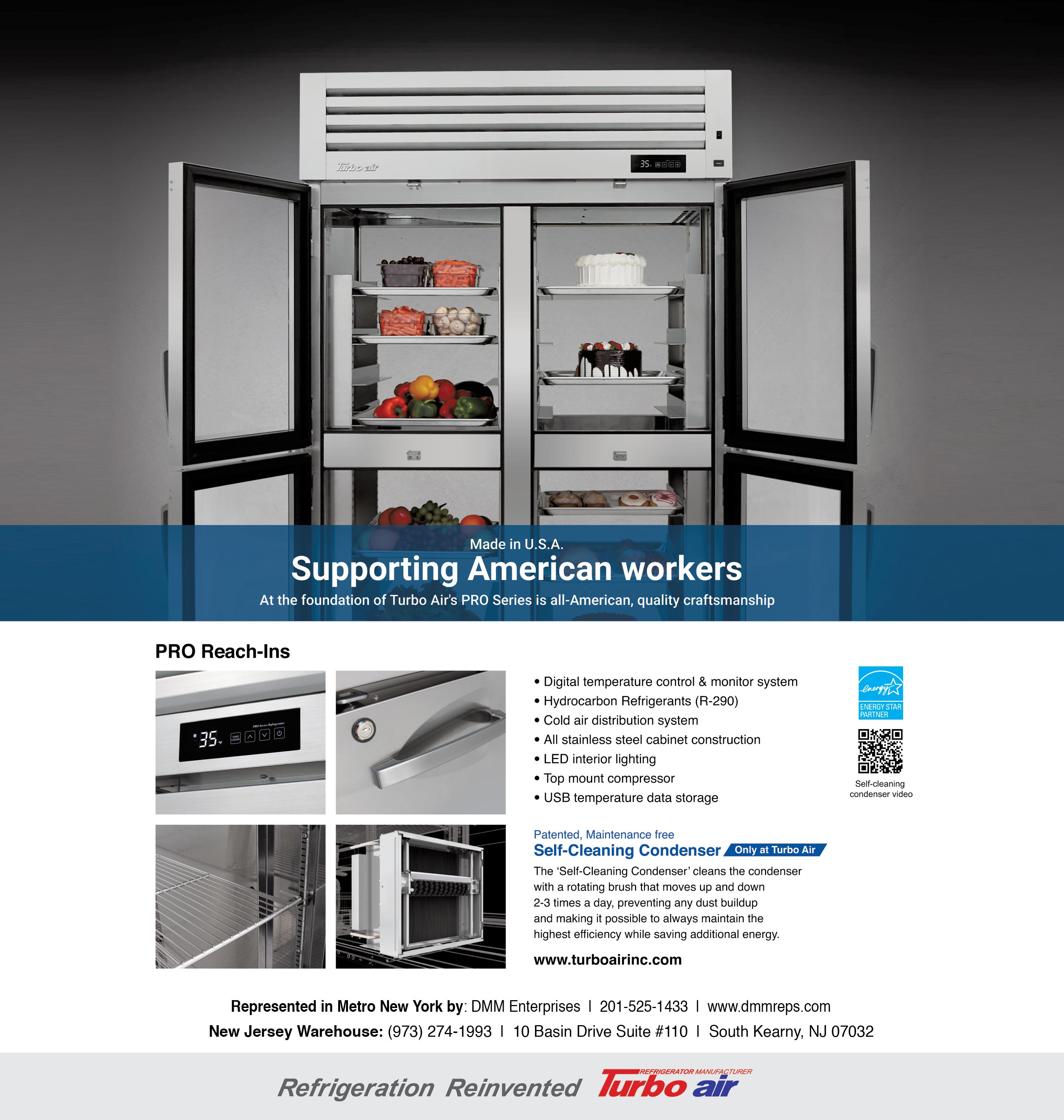
Do you remember the anxiety in the restaurant industry when the $15 minimum wage was looming? There was so much fear about how it might impact, and even destroy, businesses. Fast forward to today, with the advent of COVID-19 and the ongoing labor shortage in the United States, the landscape has shifted. Restaurants are now offering wages higher than $15 per hour to stay competitive. In places like Los Angeles, a proposed $22 minimum wage adds another layer of complexity. So, how can a restaurant not only survive but thrive in these challenging conditions? Join me as we explore effective strategies for navigating wage increases in the restaurant industry.
Embracing higher restaurant wages: A necessary shift
Before we delve into solutions, it’s important to acknowledge that, despite the challenges, the self-correction of higher wages was long overdue in the restaurant industry. While this correction may pose a negative impact on establishments running on slim profit margins, there are ways to adapt and thrive.
The proactive plan for restaurant success
Step 1: Establish a budget
The foundation of success begins with a budget, a comprehensive review of the trailing 12 months. By creating a template that factors in sales, costs and monthly expenses, restaurateurs can predict their financial outlook for the coming year. This sets the stage for de-

veloping a proactive plan.
Step 2: Adapt to dynamic labor costs
Understanding that labor costs are not static is crucial. Monthly variations, seasonal fluctuations and unexpected factors can all impact labor expenses. A rigid adherence to industry standards is no longer feasible. Restaurateurs need to adapt to the ever-changing landscape of labor costs.
Step 3: Schedule on budget
With a budget in place, the next step is to implement a scheduling system
aligned with financial targets. The goal is to use allocated hours efficiently and avoid the common practice of bringing in staff based on assumptions about business volume. I teach restaurant owners how to do this with a systems I call the Restaurant Payroll Guardian. It helps them break away from this outdated approach (available to my coaching members).
Step 4: Hold managers accountable
Restaurateurs must ensure that managers align their scheduling decisions with the established budget. The intro-

duction of a labor discrepancy finder allows for real-time monitoring, holding managers accountable for any deviations from the budget.
Step 5: Track labor
Beyond tracking dollars spent on labor, it’s crucial to monitor hours worked. This provides insights into whether sales were met with optimal staffing levels or if adjustments are needed to enhance efficiency.
Step 6: Understand labor efficiencies
The final step involves delving into labor efficiencies. Utilizing tools like the labor efficiency finder allows restaurateurs to calculate dollars per labor hour worked. This metric provides valuable insights into the productivity of staff, helping identify areas for improvement and cost savings.
Successfully navigating government and market-imposed wage increases requires a proactive approach. By embracing change, establishing a budget, adapting to dynamic labor costs, scheduling on budget, holding managers accountable, tracking labor, and understanding labor efficiencies, restaurateurs can not only survive but thrive in the evolving landscape of the restaurant industry.

Apositive dining experience is more than the food served. Rather, it is a combination of customer service, ambiance, and personalized interactions that create lasting impressions and unforgettable memories for diners. When restaurants prioritize these elements and consistently deliver on them, they create spaces where diners feel welcomed, valued, and eager to return.
Customer service is the backbone of any dining establishment, as it’s the first point of contact and sets the tone for the entire experience. Prompt and courteous service can elevate an average meal, while poor service can tarnish even the best culinary creations. Attentiveness, anticipating customer’s needs and genuine hospitality are hallmarks of excellent service, and servers who go the extra mile leave a lasting impression, fostering loyalty and positive word-of-mouth.
To enhance customer service, restaurants must embrace a culture of continuous improvement through open communications with their consumers. Actively seeking feedback from diners, whether through comment cards, online reviews, or direct communication, provides valuable insights for refinement. Responding promptly to concerns, addressing areas for improvement, and evolving based on customer preferences demonstrate a commitment to excellence and ensure that the dining experience continues to exceed expectations.
The importance of customer personalization is also highly valued in our current era of automation and digital
communication. Diners crave authenticity and connection, and restaurants that prioritize personalized experiences stand out in a crowded market. From remembering a guest’s name to recommending menu items based on their preferences, personalized interactions demonstrate a genuine interest in the diner’s satisfaction.
An increased awareness of dietary preferences and restrictions, and accommodating diverse needs is a perfect way to convey a customer’s value. Whether it’s catering to vegetarian, vegan, glutenfree, or other dietary requirements, establishments that offer inclusive menus and knowledgeable staff create a welcoming environment for all diners. Clear labeling, alternative options, and willingness to modify dishes demonstrate a commitment to inclusivity and ensure that every guest can enjoy their dining experience to the fullest. For example, Senza Gluten in Greenwich Village,
NYC saw a lack of gluten-free establishments and worked to create a menu full of things that those who are gluten-free or have celiac disease would miss, such as lasagne, bread baskets, and tiramisu. They have also hosted numerous collaborations with local groups including the Celiac Disease Center of Columbia University and the NYC Celiac Disease Meetup Group.
However, an establishment’s personalization efforts do not have to be confined to one on one interactions in the restaurant. Restaurants play a vital role in the communities they serve, and through engaging with local initiatives, supporting sustainable practices, and giving back to the community these establishments foster goodwill and enhance their restaurant’s reputation. Whether it’s sourcing ingredients from local farmers, participating in charity events, or implementing eco-friendly initiatives, socially responsible estab-

R Couri Hay is the travel editor and society columnist for Social Life Magazine and the Editorial Director for Park Magazine. Couri began his career at Andy Warhol’s Interview and he wrote for Town & Country and People. Couri also appears on CNN, PBS, FOX, and VH1 commenting on Hollywood. He lives in NYC and Southampton and is the CEO of his own PR firm.
lishments resonate with conscientious diners and contribute to a positive dining culture.
The ambiance of a restaurant is also imperative for a positive dining experience. The ambiance is made up of the décor, lighting, music, and overall atmosphere. The right ambiance can enhance the flavors of the food and elevate the mood, while a mismatched or uninspiring setting can be detrimental to a diner’s experience. Whether it’s a bistro with jazz playing in the background or a vibrant café buzzing with energy, each setting creates a unique sensory experience. Attention to detail, such as comfortable seating, tasteful décor, and appropriate lighting, contributes to a sense of comfort and immersion, allowing diners to escape into the culinary journey unfolding before them. When restaurants carefully curate their ambiance to align with their concept and target audience, they allow for a more immersive and unforgettable experience. For example, Journey NYC introduces theatrical gastronomy to its diners, blending video installations, fine dining, fashion tech, and theater.



In recent years, the popularity of meal prepping has given rise to various meal prep services, catering to individuals seeking convenience without compromising on quality or nutrition. Companies like HelloFresh and Blue Apron offer meal kits with pre-portioned ingredients and recipes, simplifying the meal prep process for busy individuals or those with limited cooking experience. Additionally, Cuisine Solutions offers sous-vide cooking products that streamline meal preparation. Utilizing the sous-vide method, Cuisine Solutions’ products ensure tender, flavorful dishes with minimal effort required. Whether it’s fully cooked meals or individual proteins, these products provide a convenient solution for those businesses looking to simplify their meal prep routine.
Meal prepping begins with careful planning: selecting recipes, considering nutritional needs, and creating a meticulous shopping list. Many meal preppers also opt for batch-cookfriendly recipes, such as casseroles, stir-fries, or one-pan meals.
Once the ingredients are secured, the cooking process commences. Some individuals dedicate a specific day to meal prep, setting aside time to cook all their meals for the entire week. However, others integrate meal prep into their daily cooking routine, preparing extra portions during their regular meal preparation sessions. But regardless of the approach, the end goal remains the same: to have a stockpile of prepped meals ready to enjoy throughout the week.
After cooking, the meals are portioned into individual containers and stored in the refrigerator or freezer, as proper storage is crucial to main -
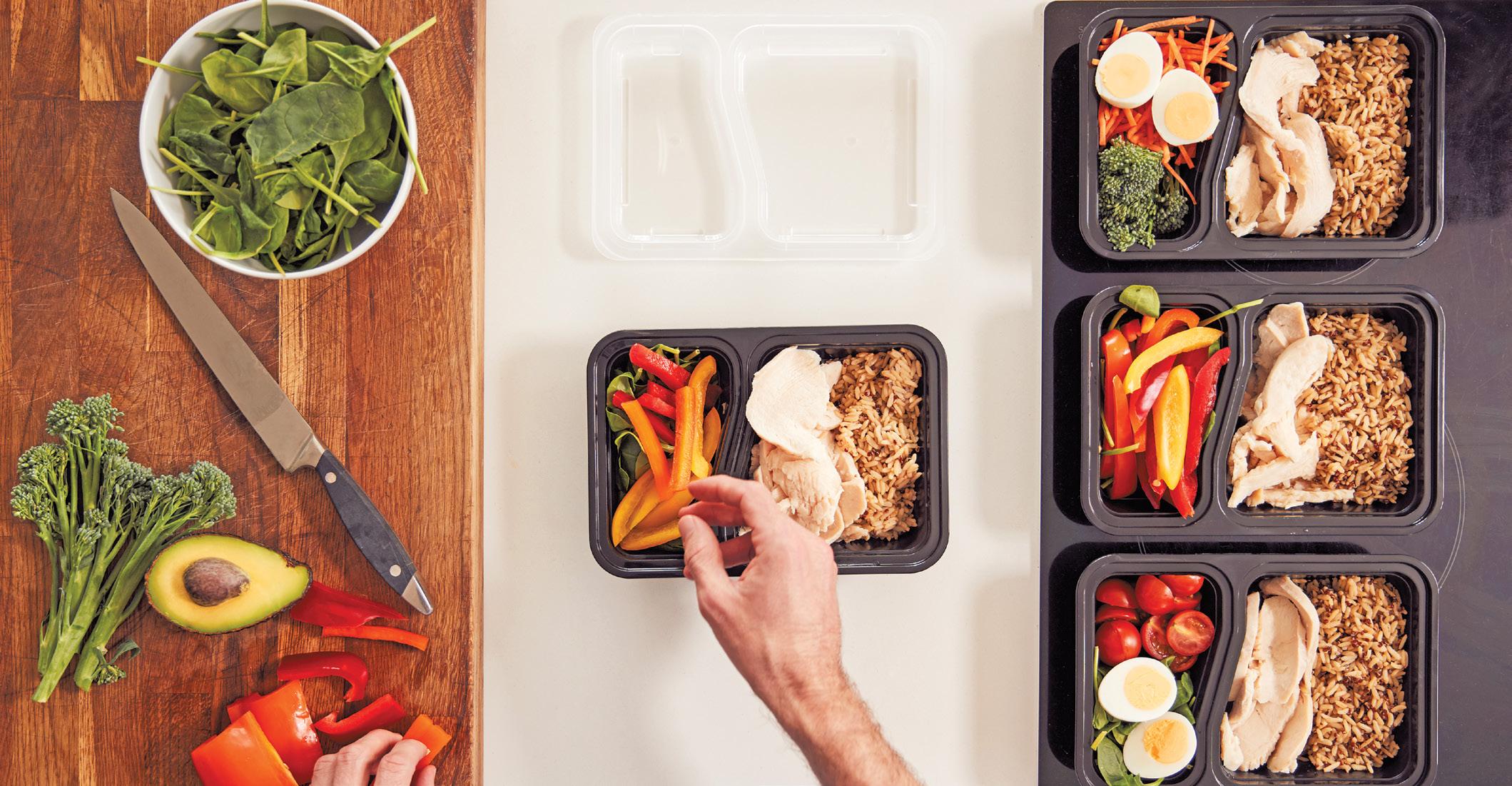
taining freshness and maximizing the shelf life of the meals. Throughout the week, prepped meals can be easily reheated and enjoyed, providing a convenient and stress-free eating experience.
Meal prepping offers more benefits than simply convenience, as it saves time for leisure. Meal prepping eliminates the need to cook from scratch every day, saving significant time on meal preparation and cleanup. With prepped meals readily available, individuals can enjoy more free time
for other activities or relaxation. Meal prepping is also cost-effective, as buying ingredients in bulk and cooking in larger quantities is more economical than dining out or purchasing prepackaged convenience foods. The method of cooking also reduces food waste by utilizing ingredients efficiently.
Meal prepping also promotes healthier eating choices, as planning meals allows individuals to control portion sizes and select nutritious and fulfilling ingredients. With prepped
Whether it’s fully cooked meals or individual proteins, these products provide a convenient solution for those businesses looking to simplify their meal prep routine.
meals, there is less temptation to opt for unhealthy processed food or snacks. Moreover, meal prepping fosters consistency in eating habits, making it easier to adhere to dietary goals or restrictions. Whether aiming to lose weight, build muscle, or maintain a balanced diet, having prepped meals ensures that nutritious options are always available.
Meal prepping is more than just a culinary trend; it’s a lifestyle choice embraced by individuals seeking convenience, health, and efficiency. With its systematic approach to meal preparation and a myriad of benefits, meal prepping has become a cornerstone of modern-day nutrition.
Whether done independently or with the assistance of meal prep services, the practice offers a pathway to simplified mealtime solutions and a healthier, more balanced lifestyle.

In an interview with CNN, the celebrity Filipino-American vegan chef and restaurateur, Reina Montenegro, surprised audiences by revealing her past as a passionate meat enthusiast. As a fellow Filipino-American who relishes the traditional pork, chicken, and beef dishes of our native country, I found myself irresistibly drawn to Chef Reina’s culinary transformation.
This article uncovers the remarkable story of how Chef Reina is not only reinventing classic Filipino dishes into delectable vegan versions, but also achiev-
ing her mission of introducing vegan Filipino comfort food to a wider audience. With Total Food Service’s March issue featuring influential women in the industry, Chef Reina’s success serves as an inspiring story.
Her journey, from her bustling brickand-mortar shop to her exciting collaboration with Mama Go’s at San Francisco International Airport, showcases her unwavering passion, creative flair, and culinary mastery.
Join me in my conversation with Chef Reina about her passion and innovation to deliver a memorable vegan Filipino culinary experience.

You describe yourself as a self-taught chef. Tell us about
your self-education process.
The core of the Filipino household revolves around food – it’s not just food but our life, passion, and a language of its own. I was fortunate to grow up surrounded by exceptional cooks, like my Lola (grandma) and my father. Discovering my love for cooking happened at the age of 9 when I began baking. Living on an isolated island in a tumultuous household provided me with an escape into my own world. In this realm, I felt untouchable, creative, and most importantly, true to myself.
Cooking became my personal escape, whether I was navigating through tough times or simply seeking comfort for my mind. I embarked on a self-taught culinary journey at a young age, getting in-
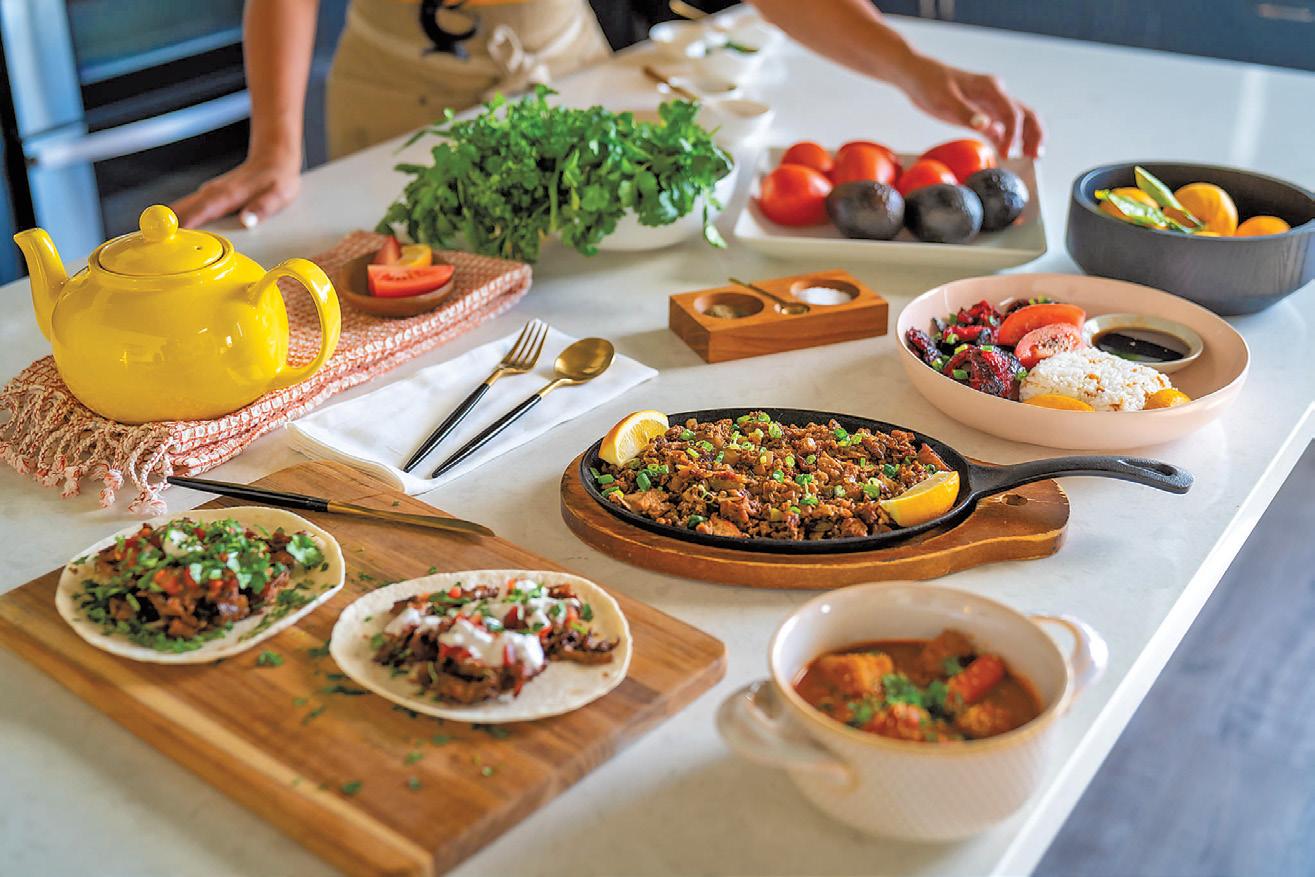

Cherry Dumaual is a seasoned contributing writer for Total Food Service, bringing years of experience in culinary communications to her role. As the former Partnerships Director at The Monday Campaigns/Meatless Monday, she was responsible for spearheading the PR and partnership development for Monday initiatives, including Meatless Monday. During her tenure, she successfully forged partnerships with renowned organizations, such as C-CAP (Careers for Culinary Arts Program), the American Institute of Cancer Research, and New Jersey Healthy Kids Initiative. Prior to joining TMC, Cherry held the position of Senior Vice President at leading PR agencies, where she worked with major food and healthcare clients. Her passion for learning and cooking international cuisines has led her and her husband to explore local food markets and restaurants in over 50 countries. This firsthand experience has allowed her to gain a deep understanding of different cultures and cuisines, which she brings to her work in the food industry.
formation from books, videos, and, most significantly, through trial and error. Over the years, I’ve encountered numerous challenges, each serving as a stepping stone in my culinary evolution.
The transition to a vegan lifestyle introduced an entirely new set of obstacles. At that time, information on plant-based alternatives was scarce. This challenge fueled my commitment to mastering the art of transforming plants into realistic meat alternatives. My motivation wasn’t to impress others but rather a personal endeavor to ensure I wouldn’t miss out on the flavors that defined my childhood and essentially became a lifeline for me.
I understand that you first worked as a personal chef and caterer, which led to opening a restaurant serving traditional Filipino food. Then you decided to change the concept to be vegan and opened three Filipino vegan restaurants. What factors led to you becoming a strictly vegan chef?
continued on page 130

Arc Cardinal is proud to announce the expansion of the exclusive distribution rights of Abert in North America. This expansion includes buffetware, table accessories, and flatware.
The Abert brand thrives on innovative designs, the highest quality raw materials, and an unwavering commitment to quality in every detail. These guiding principles perfectly align with Arc Cardinal’s mission and lay the groundwork for a powerful partnership. All Abert products are meticulously crafted in Italy, with a sole focus on enhancing the overall hospitality experience.
“We have created a strong partnership with Abert in the buffetware category over the last year,” said Arc Cardinal President Alexandre Bollengier. “We are excited to extend the offering to table accessories and flatware as we continue to grow the brand. We are confident that these new additions will further elevate the dining experience and solidify our position as a leading provider of exceptional tabletop, buffetware, and accessory solutions.”
The product extension includes eleven flatware patterns, five steak knives, seven table lamps, one charger tray, three induction chafing units, seven ta-
ble accessories, six serving utensils, and seven stainless steel trays.
The new flatware patterns are crafted from top-quality 18/10 stainless steel and seamlessly complement Arc Cardinal’s flatware portfolio.
Discover the innovative and trendy patterns that are not only a symbol of exceptional quality, but also a testament to excellence.
The selection of steak knives includes a diverse range of materials, ranging from POM and Pakkawood to ABS and stainless steel. These versatile knives are suitable for a variety of establishments, whether they have a classic, sleek, or in-
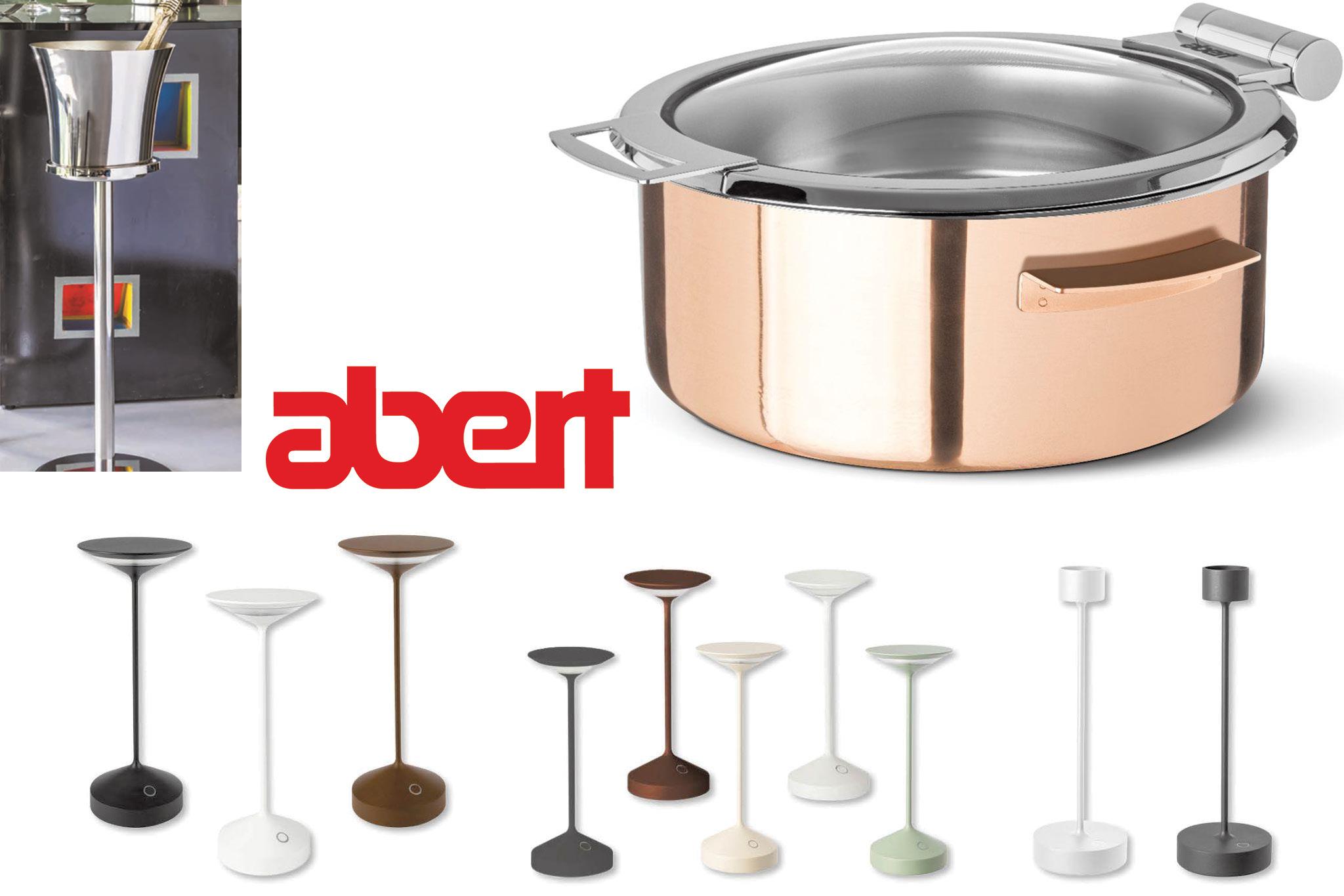
dustrial aesthetic.
Additional new products include an extended range of lighting options. Introducing Tempo Mini in a variety of vibrant colors and Saturno, a sophisticated table lamp collection with a sleek design. These new additions join our popular Tempo collection, which was launched last fall in three stunning colors: copper, black, and white. These lighting solutions create a captivating ambiance in any space.
This launch also includes new accessories for wine, bar, and champagne service. Including snack dishes, ice buckets and more!
Lastly, the buffetware category is expanding with the introduction of three induction chafing dishes along with a wide range of serving accessories and stainless steel serving platters.
“Abert’s remarkable portfolio showcases a stunning collection of contemporary designs tailor-made for the foodservice and hospitality industries,” expressed Fabrizio Leonardi, Sales-Operations North America for Abert. “Following Arc Cardinal’s successful entry into the buffetware market last year, it only made perfect sense to reassess and expand their portfolio to include flatware and other table accessories from Abert. As a prominent player in the hospitality industry, we eagerly anticipate the exponential growth of Abert in this thriving market.”
To learn more about Arc Cardinal and the Abert brand, please reach out to your local Arc Cardinal tabletop consultant or visit www.arccardinal.com and follow on social media @arccardinal.
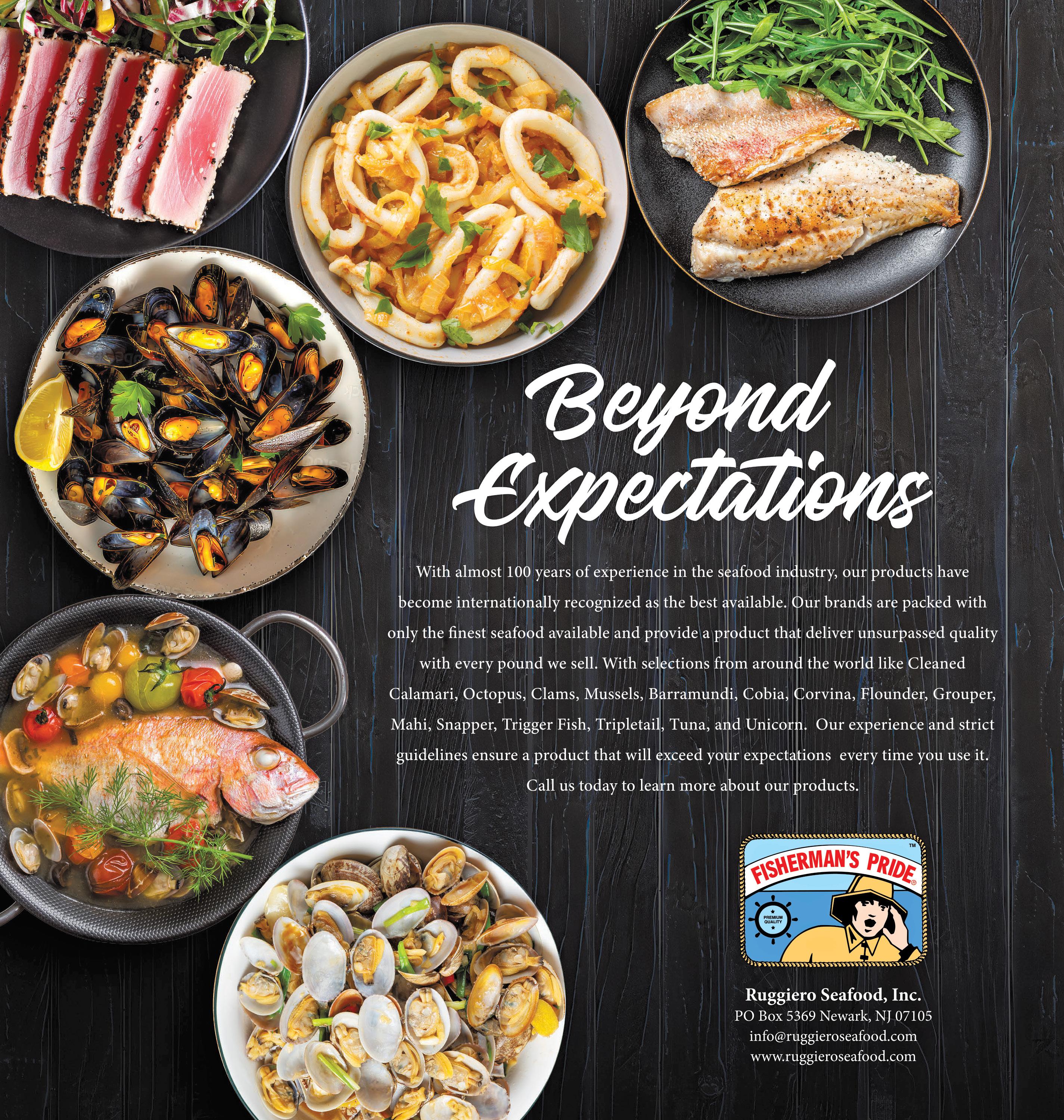
With so many packaged snack choices on the market, it can be difficult to decide which option will bring the most traction to a foodservice operation.
At the same time, increasing minimum wages across the nation has had a significant impact on staff counts in healthcare and school/university dining establishments. As a result, it has become essential to prioritize efficiency and convenience in the foodservice industry.
This has led to the rise of grab and go options, with both cafeteria grab-ngo and vending machines, which offer quick and easily accessible snacks led
“Would you rather see your grandparent or older relative enjoying a snack from their childhood, or a liquid supplement that just ends up sitting?” — Roger Olmstead
by baked goods. To ensure customer satisfaction and meet the demands of a smaller staff, it is crucial that these products are of the highest quality. This includes using premium ingredients, maintaining freshness, and providing a diverse range of options to cater to different dietary needs. By prioritizing the quality of these baked goods, establishments can continue to provide convenient and enjoyable
snack options.
For generations, McKee Foods Corporation, the parent organization of Little Debbie® snacks and Fieldstone® Bakery, has provided its foodservice customers and their guests with the combination of satisfaction and success. Based in Collegedale, Tennessee, the family-owned business and its brands have dominated supermarket end caps and vending machines

with their classic, colorful packaging. And now, even after years of success throughout all 50 states, McKee Foods is continuing to grow as it finds its place in the healthcare realm.
McKee Foods didn’t begin working with foodservice operations until 2007, said Roger Olmstead, National Sales Manager Foodservice at McKee Foods. Before that, the privately held company mainly focused on supplying vending machines and retail stores.
“Healthcare locations came to us because they knew we had products that were individually wrapped and economical,” Olmstead said. “And Little Debbie was a brand everyone trusted. Who doesn’t remember growing up with [them]?”
One of the reasons why McKee Foods has seen such an increase in success since its beginnings in 1934 is due to its unique products. Little Debbie offers the well-known Cosmic® Brownies and the Zebra® Cakes, along with the Christmas Tree Cakes® during the holiday season.
“There’s just not a comparable product on the market,” said Olmstead.
In addition to Little Debbie, McKee Foodservice also offers the Fieldstone Bakery and Sunbelt Bakery® brands
continued on page 134


Maisie Ganzler joined Bon Appétit Management Company in 1994 and has since been instrumental in shaping the company’s overall strategic direction.
Ganzler oversees Bon Appétit’s culinary development and purchasing efforts; she also leads Bon Appétit’s marketing and communications initiatives. Additionally, Ganzler was also co-founder and president of the Bon Appétit Management Company Foundation, whose mission is to educate people about how their food choices affect the global environment and local economies.
In 1999, Ganzler helped develop Bon Appétit’s Farm to Fork program, a groundbreaking companywide initiative to buy locally. Since the program’s inception, Bon Appétit chefs around the country have spent tens of millions of dollars on food grown by small farms within 150 miles of their kitchens, creating positive changes in countless local food economies. Ganzler has led the teams that launched a number of Bon Appétit’s equally progressive sustainable initiatives. In 2003, Maisie created Bon Appétit’s Circle of Responsibility pro -
continued on page 38

gram to educate chefs and café guests on how their food choices impact their environment, community and personal wellbeing. Ganzler also initiated Bon Appétit’s progressive Eat Local Challenge in 2005, in which Bon Appétit challenged its chefs to serve meals for a full day consisting entirely of locally sourced food. The Eat Local Challenge is now an annual event that chefs and café guests alike look forward to every year.
companywide and phasing out pork raised with gestation crates in 2012 (completed in 2016).
Ganzler also conceptualized Low Carbon Diet Day, in which all Bon Appétit cafés are transformed into “low carbon learning venues” for the day. The first Low Car bon Diet Day in 2008 marked the beginning of Bon Appétit’s customer education campaign around the climate impact of food choice, and the launch of the Low Carbon Diet Calculator, an interactive Web-based tool where consumers can assess their own “foodprints.” In late 2015 Ganzler oversaw the company’s shift from a diet to the ongoing Low Carbon Lifestyle, as well as the launch of the Food Standards Dashboard, an internal software tool to increase transparency and accountability for all our initiatives.



















In addition to developing sustainable initiatives for cafés nationwide, Ganzler also takes a leadership role in setting food procurement policies for Bon Appétit as a whole. She worked alongside the Environmental Defense Fund in 2002 to issue a far-reaching company policy on the use of antibiotics in farm animals: Bon Appétit now buys only turkey and chicken raised without the routine use of nontherapeutic antibiotics in their feed and water and serves only natural beef burgers. Also, after learning about inhumane battery-cage operations in 2005, Ganzler drove the policy changes behind Bon Appétit’s decision to buy only Certified Humane and cagefree shell eggs. These moves were followed by commitments to switching to Certified Humane ground beef







For the past several years, Ganzler has been focused on overseeing the company’s efforts to fight food waste (including introducing the Imperfectly Delicious Produce program in 2014) and on the issue of farmworkers’ rights. After a trip to Immokalee Florida in 2009 to meet with the Coalition of Immokalee Workers (CIW) and to see firsthand the difficult working conditions of tomato pickers in that region, Ganzler and CEO Fedele Bauccio collaborated with the CIW to usher in a sweeping Code of Conduct for how our Florida tomato suppliers treat their workers. Maisie realized the need to explore what Bon Appétit’s role could be in facilitating fair labor practices throughout their entire supply chain, and so created the Bon Appétit Fellows program. Ganzler manages the Fellows’ work in the area of labor. They have met with farmers around the country to assess overall sustainability, including their labor practices in agricultural operations that supply Bon Appétit kitchens. Under Ganzler’s oversight, the Fellows worked with United Farm Workers (with help from Oxfam America) to compile the Inventory of Farmworker Rights and Protections in the United States, a comprehensive report about current laws and practices. Ganzler was also instrumental in bringing to life TEDxFruitvale, a special conference focused on farmworkers, which she co-organized and hosted in 2011.
From 2010 to 2013 Maisie served on the board of Food Alliance, North America’s most comprehensive thirdparty certification for the production, processing, and distribution of sustainable food. She is currently on the boards of the Equitable Food Initiative, an integrated labor standards project; the Resnick Program for Food
continued on page 40
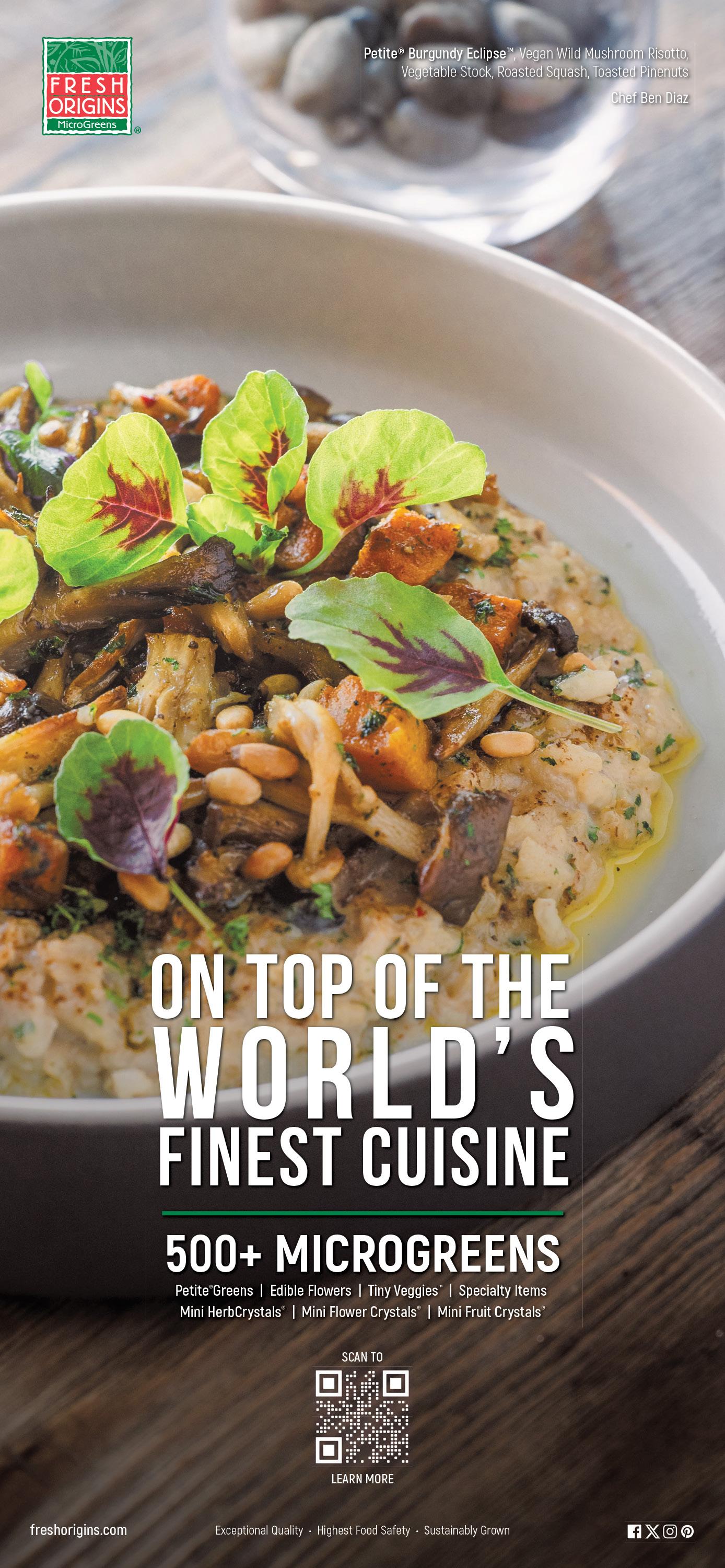

Law and Policy at UCLA School of Law; Food System 6 Accelerator; Food What?; and Juma Ventures. She was named a Silicon Valley Woman of Influence in 2012. A graduate of Cornell University’s School of Hotel Administration, Maisie previously worked on behalf of a number of national food brands and ran a hospitality training company.
Let’s start with your new book, You Can’t Market Manure at Lunchtime. What inspired it?
The inspiration actually came from a friend who proposed that we write a book together. She was on the advocacy side and thought that it would be an interesting partnership between somebody who’s spent their life advocating and implementing on the corporate side. She had put together a table of contents and it was very scientfic. I looked at it and I said, no one wants to read that book. But what they do want to read is a how-to guide of how to actually take this science and create a brand based upon it. It was like lightning struck me and I had this vision. She said, great, go forward, write that book.
How did it all come together?
It started about two years ago. It took me a year to write the proposal. I had never written a proposal for a book before. And with no one waiting for it on the other end and a full-time job, it took me about a year to do. I then was lucky enough to get an introduction to an editor at the Harvard Business Review Press, sold the book and given six months to write it. And with a deadline like that, bam, bam, bam, it came out.
As my editor said to me, that’s the proof that you’ve got a book in you and not an article. A lot of people have an article in them and then they painfully try to stretch it into a book.
Talk about how you got to the point at which somebody knew there was a book in you.
I’m from Santa Cruz, California. I grew up with parents that really valued travel. We lived overseas when I was young. We lived in Kathmandu
and I decided I wanted to be a hotel manager when I was nine and I don’t really remember why. We never stayed anywhere fancy, I’ll tell you that. I got my first job in a restaurant at 14 and first job in a hotel at 16. Hospitality is the only industry I’ve ever worked in. I had kind of rebelled against my parents who were in the social services by going into business. But it turns out that those values that your parents instill in you come with you no matter what industry you go into. When the opportunity to start working in a really values-based corporate environ -
ment focused on sustainability came about, that just lit me up. I was lucky enough to have a CEO that wanted to go fast and far and to really re-center the brand of the company on sustainability. Together we’ve been able to create something really special at Bon Appetit Management Company over the last 30 years.
How did you get to Bon Appetit?
After graduating from the Cornell School of Hotel Administration, I went to work for the Taco Bell Corporation, which was a pretty differ-
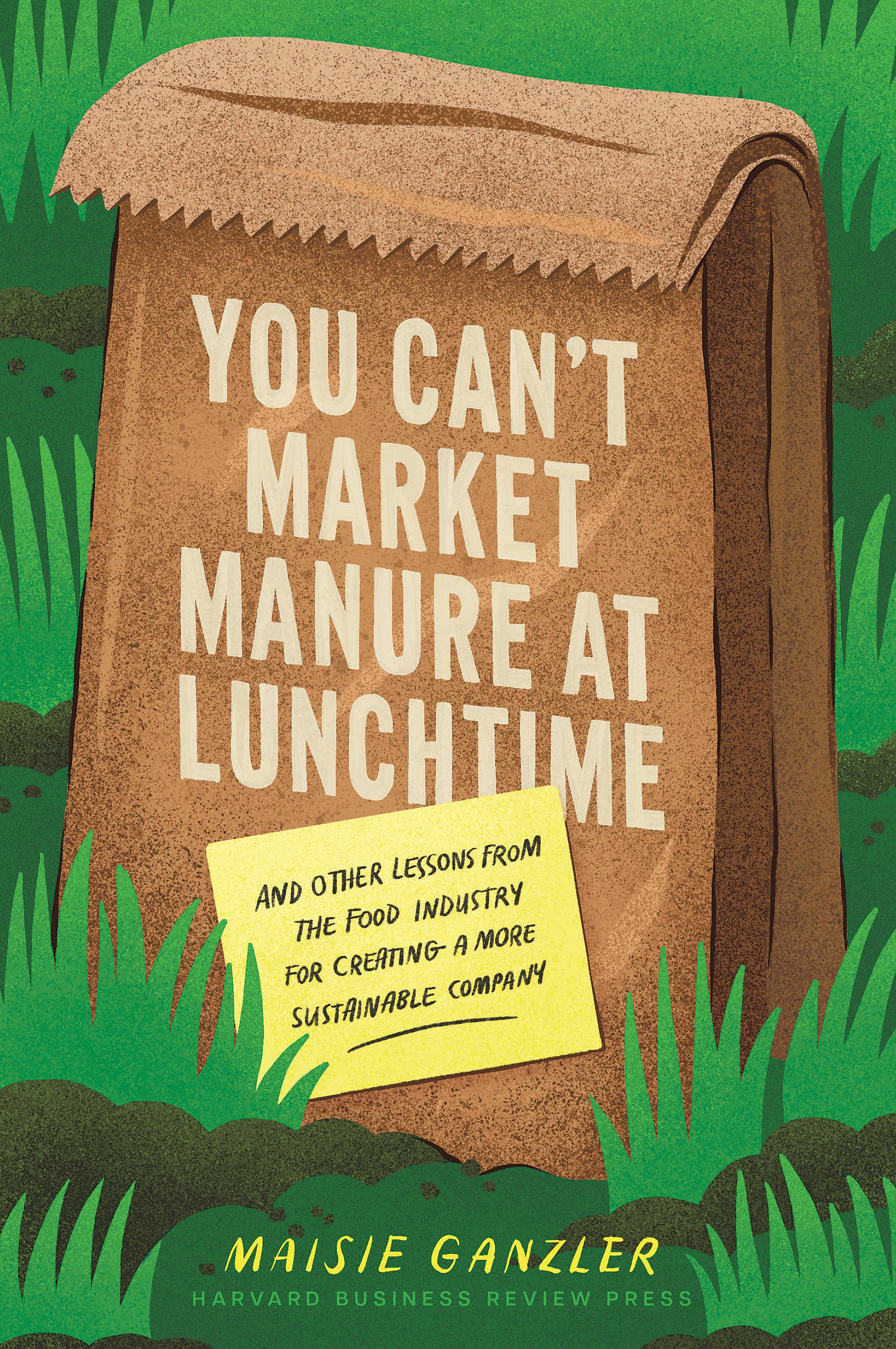
ent path. They were really focused on self-directed work teams and doing really interesting things with organizational structure. That captured my imagination but didn’t really pan out. Then somebody showed me an article in Restaurants and Institutions Magazine, which gave me a warm spot in my heart for trade press. There was a story called ‘Piping Hot, A Baker’s Dozen of Hot Companies to Watch.’ Bon Appetit was one of those companies. I read about the commitment to scratch cooking with a goal of really reinventing of the industry. I thought, I want to go work for that company.
How did Bon Appetit become part of the Compass family?
The company was founded in 1987. I joined in 1994 and we were acquired in 2002 by Compass. They have done a fantastic job with letting us own all the pieces that touch the customer. They’ve made our lives easy by consolidating back office systems, and putting in a lot of discipline around purchasing and IT, that is run centrally through Compass.
When it comes to our brand, the food we deliver, our marketing, how we talk about ourselves, they’re totally hands-off. Our business has become quite capital intensive. Without a company the size of Compass behind us, we would not have been able to grow and maybe not even survive, quite honestly.
Is that the capital needed to go in and to build kitchens or to add to staffing?
Mainly for renovations and investment in locations. I saw that one of your questions later on was, are we in the people industry or the real estate industry? We’re very much in the people industry. We don’t own any real estate. We never see a location and think that would be a great place to lease. However, one of the marketplaces that we serve in particular is education food service, they really need our capital to build new cafes, to build new student centers and things like that. So that’s amortized over the
continued on page 42

length of a contract. There’s an investment we make up front.
Can you share the target marketplaces you serve?
We serve three verticals, private colleges and universities, corporate headquarters that are mainly high-tech and bio tech and some retail. We also serve specialty venues, which are museums and a couple ballparks and arenas in our hometown: the San Francisco Giants at Oracle Park and the Golden State Warriors at Chase Center. We don’t differentiate those lines of business. We’re the only company that runs all three together, which means that a district manager could have two colleges, a corporation, a specialty venue, all under his or her purview. We also don’t have different standards between the three. We see them all as cross-pollinating. The college student of today is absolutely the LinkedIn employee of tomorrow. Right? And those are the people that have money that are going to those cultural institutions. We see the trends moving between the sectors and it’s kind of like we can look at the colleges and know what’s coming next for corporate.
What do you see for the future of corporate dining given the growth of hybrid and remote work?
Well, it’s really a paradox because in one-way, cor-
porate dining has become even more important. Our clients tell us they need the perk more than ever to bring people into the office. We need the place for people to have the casual collisions. We need the culture building of breaking bread together. Yet we have the financial reality that people aren’t there every day. We’re feeding fewer people. And I think that we’re still ping-ponging. We have clients that had said, open everything up five days a week, all the stations, go for it. And then they see the numbers and they go, oh, close things. And then they say, oh, no, no, no. Somebody came on Tuesday and what they wanted wasn’t there. You’ve got to open it up again. We haven’t yet found that equilibrium. Every company sees it differently and is willing to invest in different ways. But as we see in the tech sector, where there’s been a lot of layoffs, that hasn’t actually resulted in less dining services yet because they still want people who are there to be served properly. I don’t think it’s shaken out yet, but it’s been this realization that actually feels good about how important food is to corporate culture.
You began building a brand at Bon Appetit that
continued on page 44
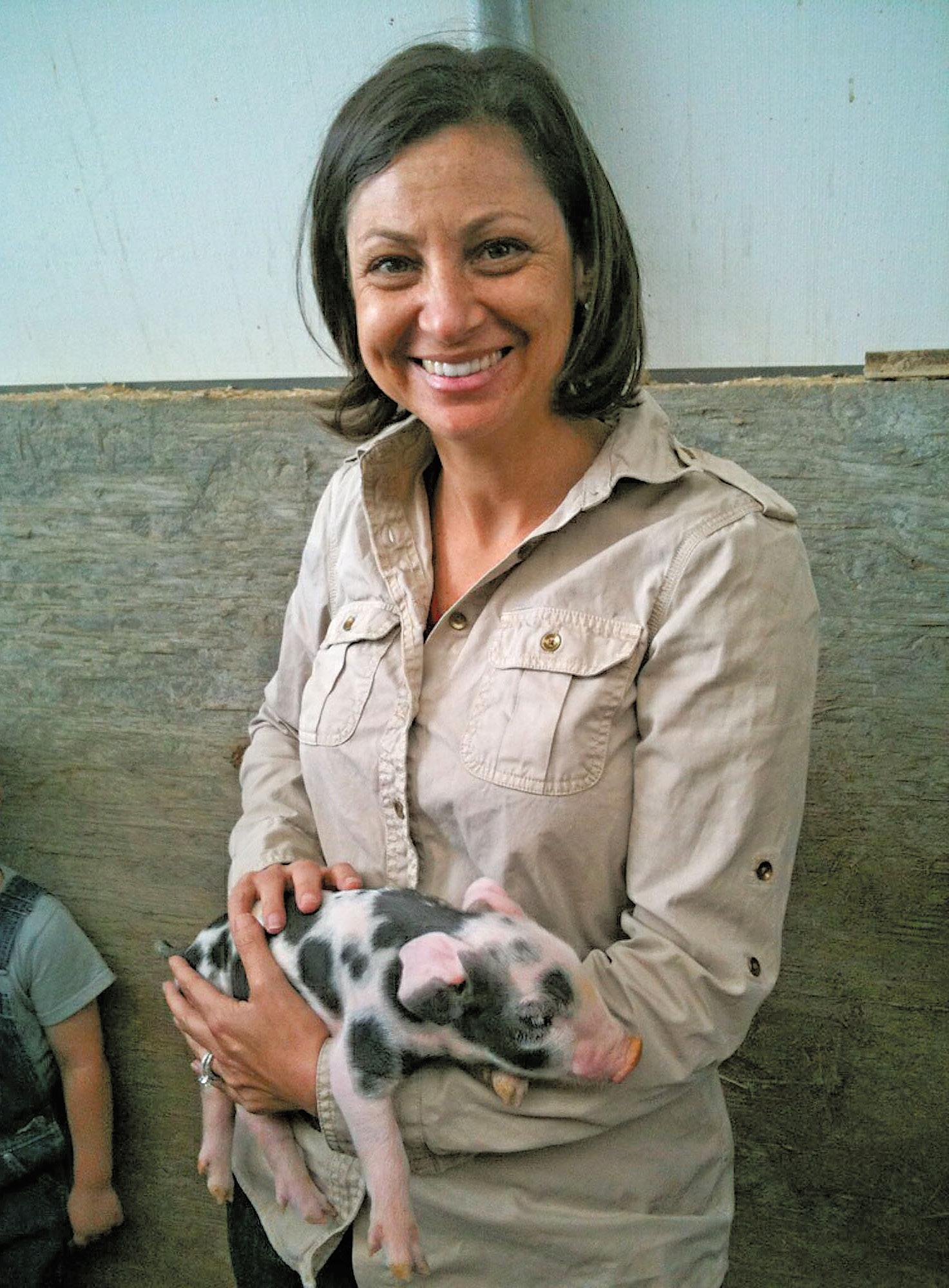
Ganzler’s approach has included close relationships with the nation’s boutique producers including Pure Country Pork
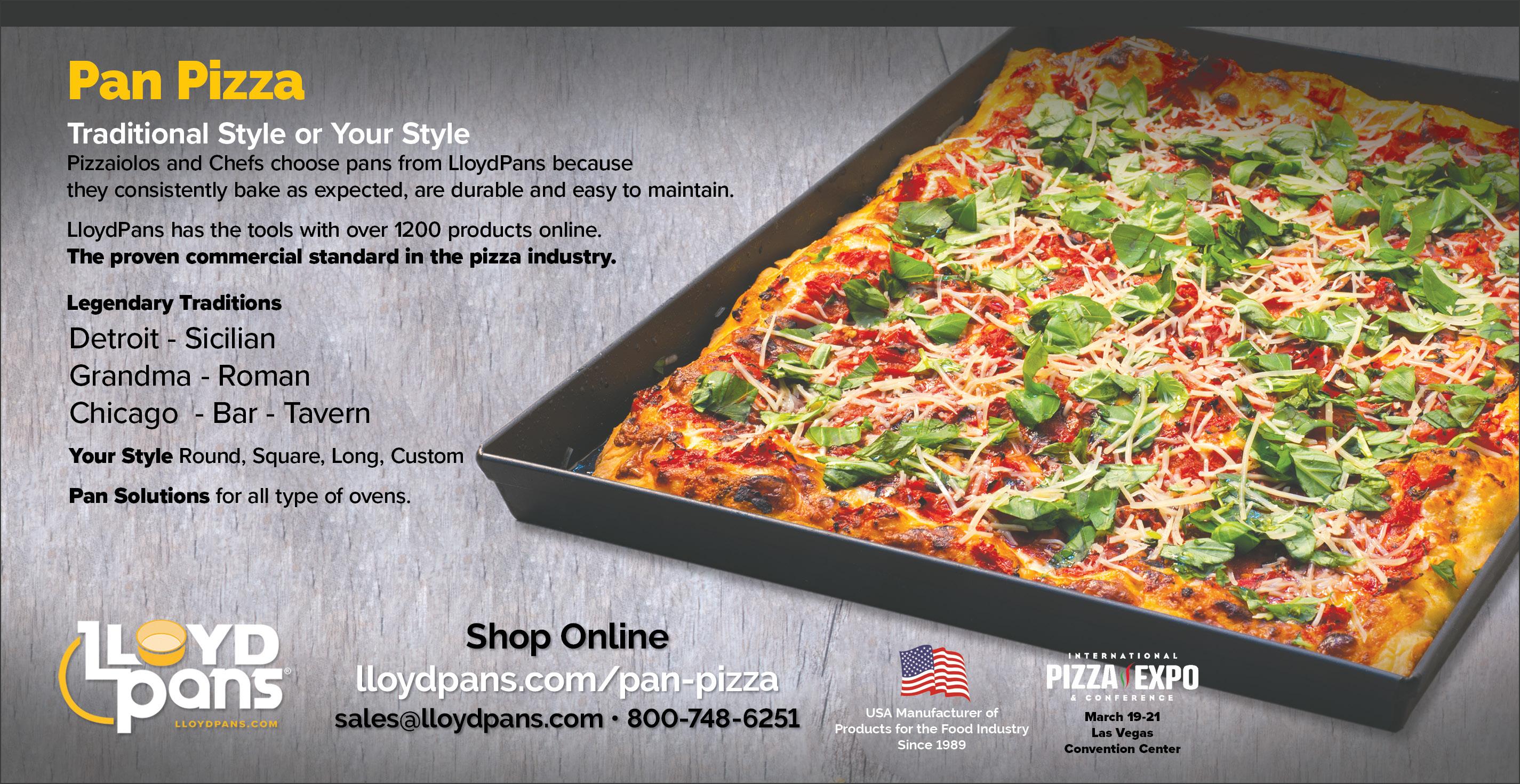
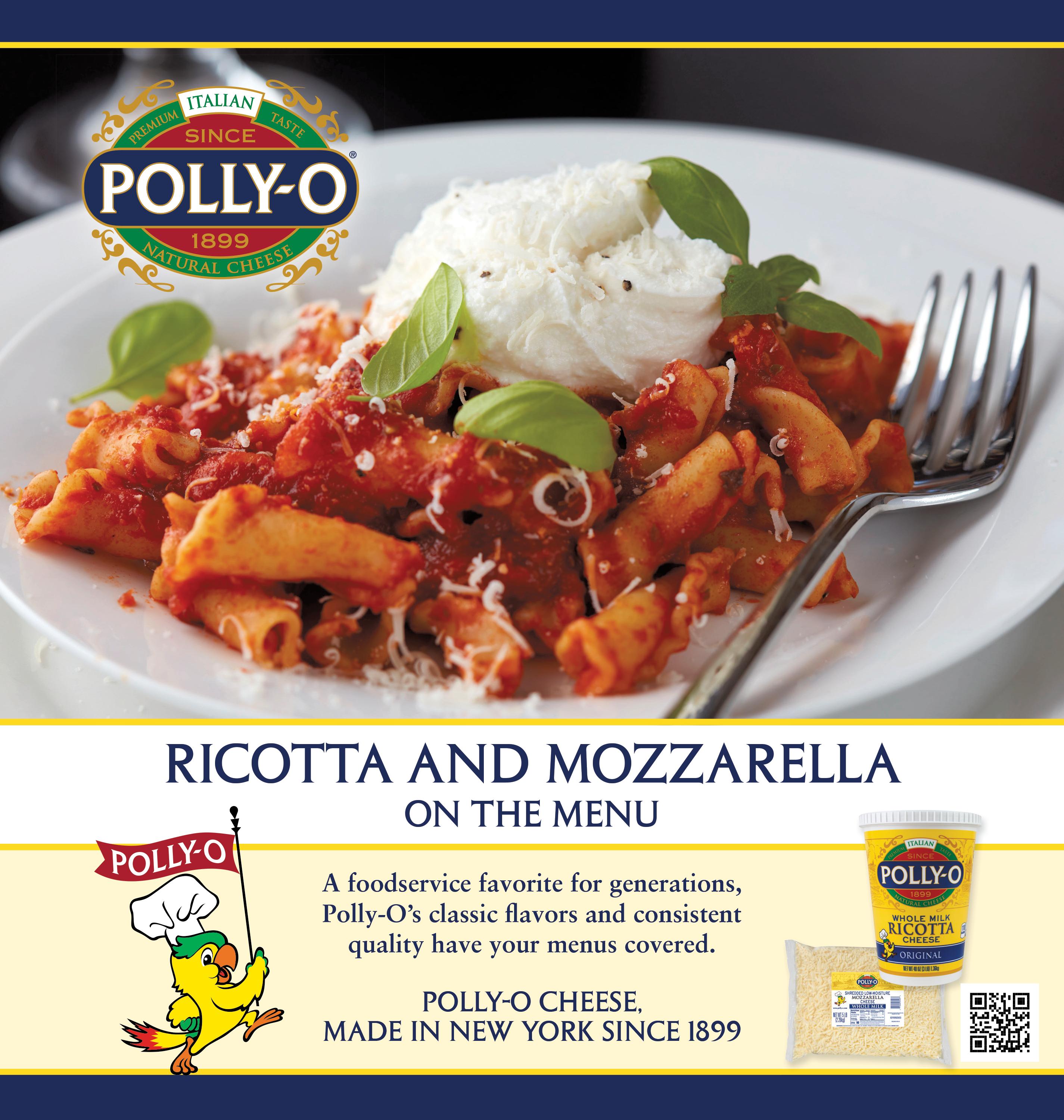
focused on sustainability long before it became a focus of the industry?
First and foremost, we have to start with the fact that it’s food that people are going to eat and that should be a wonderful, sensual, delicious experience. I say to my team all the time, healthy foods are only healthy if somebody actually eats it. If not, it’s food waste. We have to start with good tasting, craveable food. Now, there’s an interesting question. Now I’m wondering about the impact of drugs like Ozempic that actually threaten the cravings we have. I’m very glad that I don’t work for Frito-Lay right now. But we fundamentally have to start with good tasting food. A lot of the stuff that we talk about from a sustainability and wellness perspective is about enhancing flavor and the eating experience.
With that in mind our take on plant forward or plant based is never about the things that you’re losing. It’s always about culinary techniques that make vegetables unctuous with
caramelization We are always thinking about how roasting and braising with the right types of herbs and local foods that enable a deep dive into the dining experience. Oh and by the way, that’s better for you and the planet. But you can’t lead with that. Nobody wants to do the right thing to their own detriment. They might on a survey, they might claim that, but they don’t really want to do that. That said, the other thing that I think is unique that’s emerged in the last few years is different than past generations, is that food has become identity. ‘I am vegan or I am keto or have celiac issues,’ becomes part of who you are.
We understand as a company that food is that important to you and that we have to be respectful of that, honor it, and give you pathways to feel seen through the menu.
As you look at such a diversity of dining patrons, how do you approach your culinary R&D?
Every chef has a clean sheet of pa -

per to start their menu with every week. They have a budget and they have a particular audience to cater to. They dictate what goes on the menu.
We don’t have any of the traditional cycles of menus. There are no corporate recipes. What my team does is educate, inspire, and provide feedback. That feedback is not subjective. We don’t look at menus and say, oh, that looked good this week or I would have liked to have seen this.
We have actual data that we share through our menu management system to show trends with plant-forward items. This is how much animal protein you purchased this week. Here’s how much produce you purchased this week. Here’s what the goal should be. Get there however you want to get there. I don’t care if you’re doing masala or caponata. Your masala is going to be different depending where in the country you are. Some are going to be spicier. That’s between you and your customers. We at corporate have nothing to do with that. It’s really about hiring really skilled culinarians and then giving them training, freedom and feedback.
Sounds like a great place to work and grow?
It is. We have a really long tenure if you make it past the first year. It’s a hard job because you’re expected to cook Indian, Italian, barbecue, Thai and Mexican and change the menu every day. In some ways, it’s much easier to work in a chain restaurant or for a food service company that says, here’s the cycle and here’s how to do it. If you’re a great fit, you stay forever. We see people starting as chefs, moving to general managers, to district managers, to RVPs. I haven’t done the math, but I would say at least half of our regional vice presidents are trained chefs. Our CEO, says that the chefs are the rock stars. He’s right but I also truly believe that our GMs make it all happen. We certainly are a chefdriven company, and there is so much opportunity to move up.
How does that impact the type of broadliner and local distributor
relationships you need to succeed? We operate two different supply chains. We run the more traditional, where we have a relationship with SYSCO’S and PFG’s. We are very clear that there are certain products that need to come from those broadliners. You better be buying your salt, your sugar, your pasta, your French fries, your American cheese, your cheddar from them. That creates fiscal responsibility. There are contracts in place for that. Then we have a set of local ‘fresh houses.’ So every market will have a fresh meat house, a fresh seafood house, a produce house, and a specialty house. The next layer is what we call farm-to-fork. That’s our local purchasing from farmers and producers that are owner-operated within 150 miles of the cafe and under $5 million in revenue. For us farm-to-fork trumps all. If you can get those three things together, then that is your number one go-to. It is produce across the country, meat in some pockets, and then coffee and baked goods in others. We also have a carve-out for BIPOCowned businesses as well that are small. We actually administer those local farm-to-fork relationships from our corporate headquarters. We take the enrollment forms and make sure that they have insurance, that sort of thing. Then we turn that relationship over to our local chefs. The real value in the program comes from hearing a chef in Portland, OR, talking to somebody from Omega Pears about, how are you going to use those pears? I’m going to use them as hand fruit. Okay, I’ll let them ripen a little bit. I’m going to poach them. Okay, let me take them off the tree today instead. In fact, study the analytics that come from our farm-to-fork scores. We always want to know why within one sub-geography, why are some farm-to-fork scores higher than others, if technically they have access to all the same vendors? And it really comes down to that relationship. That relationship between the chef and the farmer.
continued on page 46

What does the profile look like of chefs that succeed on your system?
I’d say it’s mixed between whether they have formal training coming from a culinary school or having worked their way up. Both are great paths. The community college culinary schools, I think, are a fantastic way to get a really affordable education. Culinary school can be quite expensive. Restaurant chefs do really well with us. We have a lot of people who have had their own restaurants, that they’re entrepreneurial. They had a vision. They’ve been the captain of their ship, but the lifestyle is too hard. What makes our opportunity attractive is for instance if you work with us on the corporate side it’s basically a five-day-a-week job without many dinners. On the education side, there’s more meal periods, but the people who do well on education love the students, love being part of that community. They become athletic boosters. There’s nothing like a university environment. Those chefs have to work hard. Com -
mencement time is a huge push, but it’s seeing people that they’ve loved for four years graduate. They want to meet their families. I’d say we do well with hotel chefs also. Not so much from other food service companies. That’s not a great path to us.
Where will the next generation of chefs and management come from at Bon Appetit?
In the last decade, there was this explosion of the celebrity chef. A lot of people went into culinary. My boyfriend went to Johnson & Wales in the ‘80s, and he said it was like him, people getting out of the military and ex-cons, right? Going into being a chef at that time was not a glamorous thing. It changed, right? But then people realized the reality of cooking. I think that there’s still a lot
of people who truly love food and that it’s been made okay to be a chef. There used to be certain cultures that didn’t want their kids to be in the kitchen because they had worked so hard to get out of the kitchen. Now there is cachet. Now it is seen as a viable ca -
reer. And then we offer a balance of lifestyle, a steady paycheck, good benefits, that sort of thing. I think we do have a pipeline. Now, of course, we’re having the same labor issues that ev-
continued on page 48



erybody’s having, primarily in the hourly workforce. But I think we still are an employer of choice.
What role does immigration play in finding that next generation?
Even more than in our direct ranks, it’s more about our supply chain. The crisis is more acute, with our vendors and we need a balanced, sane immigration policy to keep our supply chain healthy,
How is our industry doing in terms of opportunity for women cracking the glass ceiling?
I think we are making progress. We certainly see more female chefs. We have a nice distribution at the district manager level. I think that there is less of a vision in people’s mind about what a CEO looks like than there used to be. I think that we’re still in a phase where the old guard hasn’t retired yet. And so there just hasn’t been the movement yet in our industry, but I think it will happen. I’m more optimistic
about the glass ceiling being cracked than whatever the corollary would be about racial diversity. One thing that has really helped in terms of the glass ceiling in the food world in particular was the Me Too movement. I think that a lot of women self-selected to leave the industry because of the kitchen environment. Now that type of behavior is clearly not okay. With that more women stay longer and therefore can move up.
Let’s look back with sustainability to see what the path looks like moving forward.
We were the first company to make commitments around sustainability, first to recognize the issues and make commitments.
The initial sustainable agenda included local purchasing, sustainable seafood, and the use of antibiotics in meat production. Those were kind of the first three that kicked us off. Then we added animal welfare. We were the first to recognize the issues and
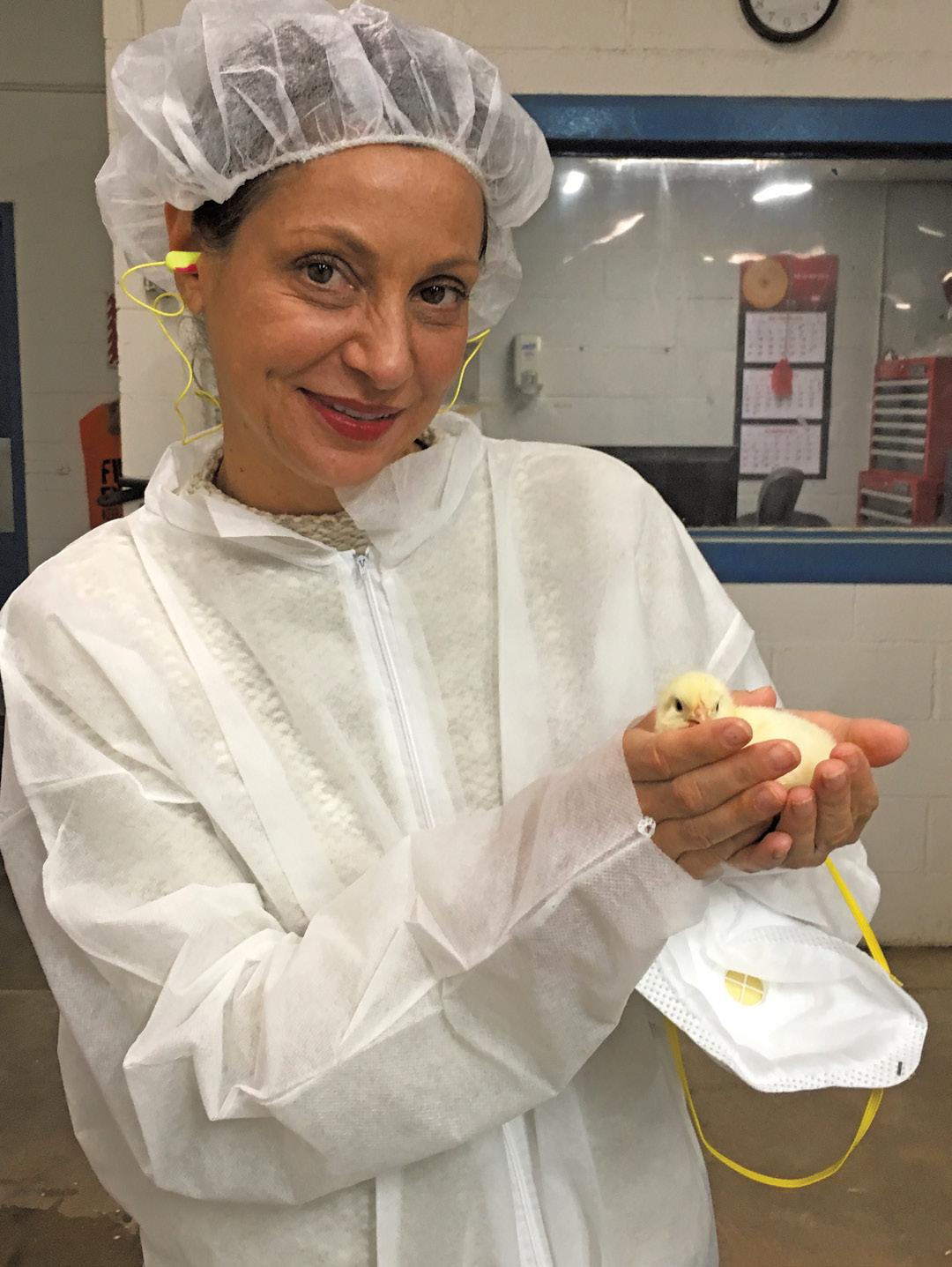
make commitments. We’re still in a place where we’re the only company that has actually lived up to all of our commitments. The key is that we have always been completely transparent. For example, we were the first to make a commitment to cage-free eggs. We started with shell eggs in 2005 and met that commitment. Then we expanded to liquid eggs but there was a huge avian flu outbreak and so we didn’t fulfil the commitment. We ‘owned it’ and put out a press release saying we didn’t make the commitment and by the way we made it six months later.
Nobody does that!
Right. And that’s one of the things that I talk about in my book, it is about transparency being the antidote to greenwashing. And when I mean transparency, I mean at a level that you’re probably uncomfortable with. So the place where we’re at right now is around where our point of differentiation really is, is around the proof and the data. Make a claim about whatever
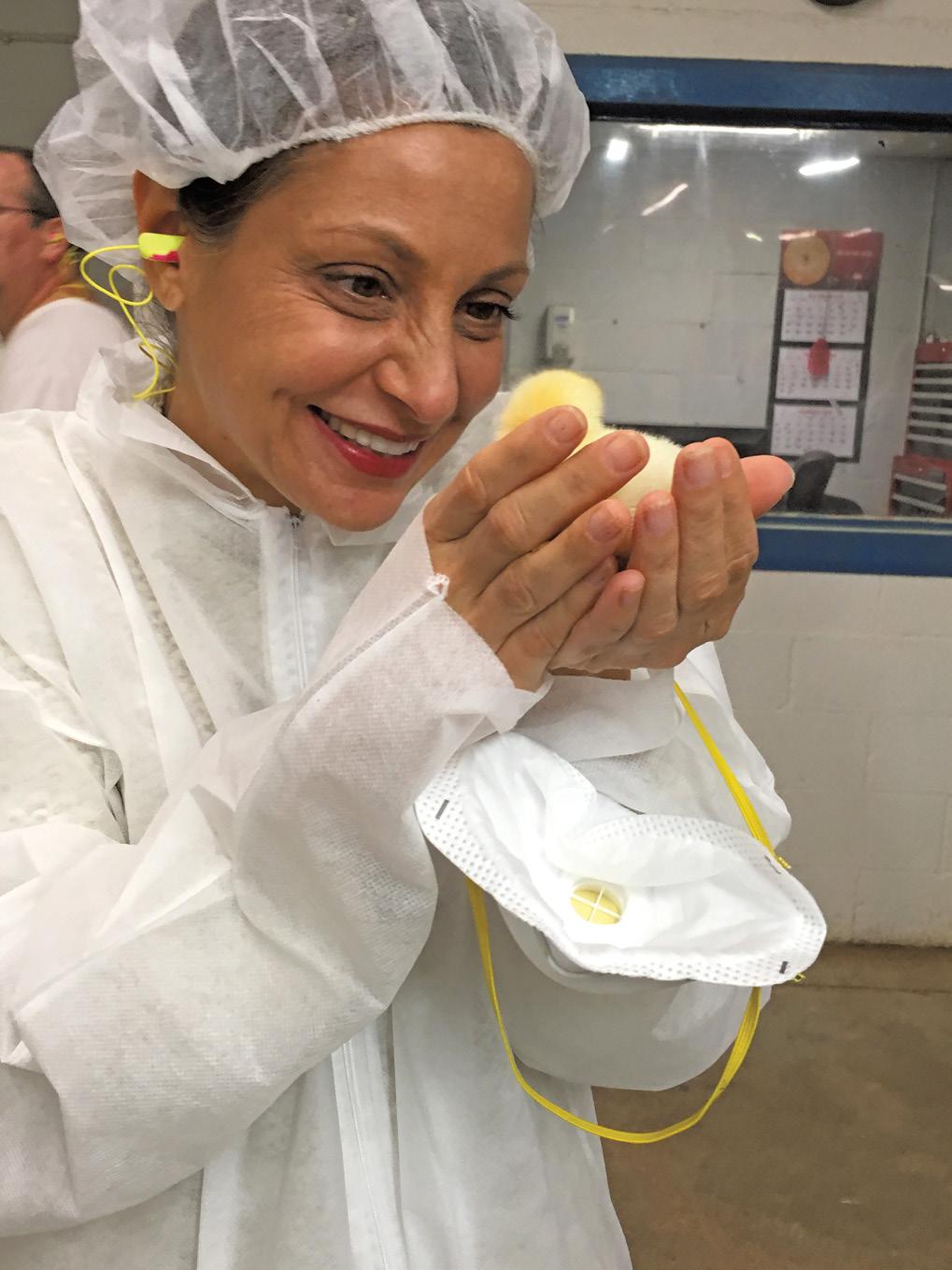
you want to make a claim about. Can you prove it? Well, we can. And sometimes our numbers don’t look perfect. And we’re going to tell you anyway.
How do you use technology to track those commitments?
We built something called the Food Standards Dashboard. Every time a chef logs into the menu management system, they get a dashboard of how well in the last period they met our standards. They can print that and share that with their client. You want to know if we’re living the dream? There it is. I challenge anyone else to give that information. And as more of our clients are making sustainability commitments, mainly around carbon, they need that data.
Talk a little bit about some of the fun stories that are in the book including trips to pig farms?
The title of the book, You Can’t Market Manure at Lunchtime, comes from a time that Fedele [Bauccio], my CEO, my boss, had been on something called the Pew Commission for Industrial Farm Animal Production. He had toured the country talking to people related to CAFOs, Concentrated Animal Feeding Operations, factory farms. He had gotten really hung up on these manure lagoons. He was badmouthing this big pork supplier, telling people they do terrible things and they don’t treat people right. Well, it happened to be our pork supplier. Their VP of Sustainability flew to Palo Alto and said, why are you badmouthing us? You know, basically, shut up. And Fedele said, you’re doing all these terrible things. And I’m cheering him on. You know, this is great. I work for the right company. And he’s like, we got to get rid of these manure lagoons. And I thought, that’s fantastic. But how do I tell a story about that? You can’t market manure at lunchtime. Telling stories like that about our now former pork supplier enable a for-profit B2B business to create differentiation. It’s all about storytelling to our customers and making real change, setting realistic goals, measuring properly and living up to those claims every day.
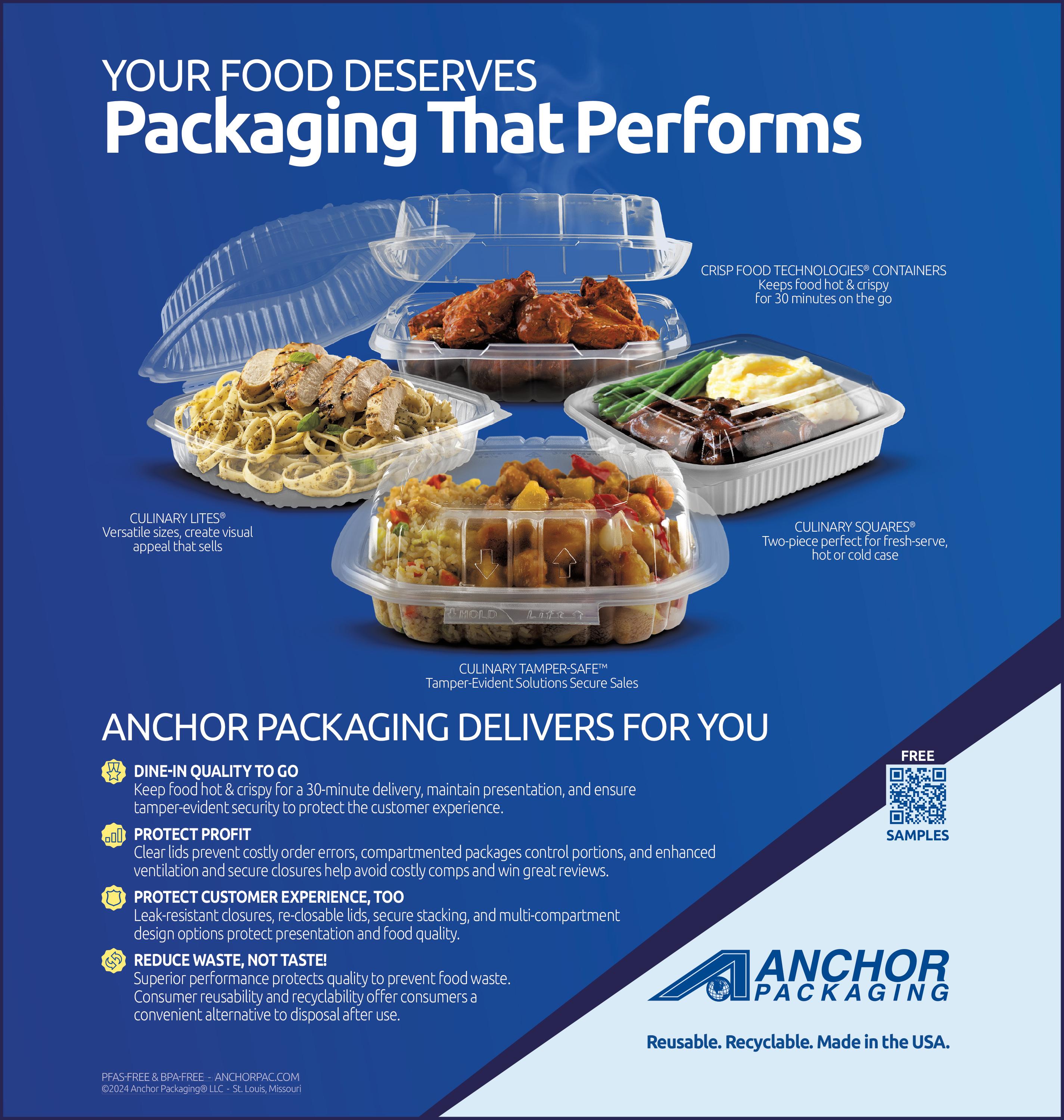

Women have long been a driving force in the restaurant food service industry, yet their contributions have not always been fully recognized or celebrated. It is crucial to embrace the impact that women have had, and continue to have, in our industry for a number of reasons.
First and foremost, women make up a significant portion of the workforce in the restaurant food service industry. According to the U.S. Bureau of Labor Statistics, women account for nearly half of all employees in the industry. This means that women play a vital role in the day-to-day operations of restaurants, from cooking and serving food to managing staff and running the business.
Despite facing challenges such as discrimination and unequal pay, women bring a unique perspective and innovative ideas to the industry. It is crucial for us to address these issues and create a more inclusive and equitable workplace to ensure the continued success of women in the industry.
Women in the restaurant and foodservice industry are making significant impacts in various aspects, from kitch-
en operations to menu development and management. What struck us as we complied our Top Women 2024 is how they are influencing the industry in a wide diversity of areas including restaurant design, equipment sales, and food distribution.
The progress made by women in the industry through their leadership and success is more evident than ever before. By sharing their inspiring stories, we can all be reminded that with hard work and determination, any goal is achievable. Women in the foodservice industry are leading the way in innovation and driving positive change in the industry in every segment.
Our goal in recognizing these unique talents with our “annual” list is to focus on the importance of women in the restaurant and foodservice industry, their contributions, and the challenges they face and have overcome. The current landscape has enabled women to follow paths in the industry that weren’t available in the past. Women bring a different perspective to the industry. Doors have opened to create a path that can quickly lead to equity and management participation and success for women in the industry.
Embracing the impact of women in the restaurant food service industry is important for promoting gender equality and diversity in the workplace. By recognizing and celebrating the achievements of women in our industry, we can inspire future generations of women to pursue careers in restaurants and food service and break down barriers that may have previously held them back. These women have found the recipe for success!
Leslie Klashman Fred Klashman Publishers, Total Food ServiceMadelyn Alfano is the CEO and owner of Maria’s Italian Kitchen, a successful restaurant group based in Los Angeles, CA. With over 380 employees, Madelyn has led the company through significant growth and transformation, expanding from a single location grocery/deli to an 8-location multimillion dollar business. She has been instrumental in spear-
heading acquisitions, fostering organic growth, and building a strong brand presence in the casual dining, catering, and central commissary sectors. In addition to her role at Maria’s Italian Kitchen, Madelyn is a respected leader in the restaurant industry. She served as Chair of the Statewide California Restaurant Association in 2020, advocating for policies to support restaurant owners and employees during the challenges of the COVID-19 pandemic. She is also actively involved in YPO, where she cochairs the Food and Beverage Network, and has previously chaired the NAWBOLA foundation, representing women-owned businesses in Los Angeles County. continued on page 52


from page 50
 Alyssa Auerbach
Vice President of Member Services, Strata GPO
Alyssa Auerbach
Vice President of Member Services, Strata GPO
Inspired by the future and fueled by curiosity and coffee, Alyssa is a transformative leader, mentor, and innovator. She outrivals in disruption, driving change by embracing the unknown. Alyssa led the rebranding of Excell & Nissco, ushering in a new era of growth as Strata Group Purchasing Organization. Alyssa cofounded a Young Industry Leaders program, aimed to create a future that encourages the generations of tomorrow to join the dynamic FE&S industry. Alyssa is also at the forefront of the non-profit organization Cooking Up Better Lives, which aims to provide foodservice products to community-based entities in need. Alyssa encourages others to reach their highest potential, empowering all to make a difference and conquer the world.

that, she held the position of Senior Vice President of Food and Licensed Stores at Starbucks, where she oversaw the company’s food offerings. Barone also spent 10 years as a management consultant at Bain & Company, focusing on retail, consumer, and technology business strategy, marketing, organization, and operations. Barone’s impressive career began in investment banking before she pursued her education at Harvard University, where she earned a BA in Applied Mathematics and an MBA.
Christine Barone, the President of Dutch Bros Coffee, is a seasoned leader in the foodservice industry with over a decade of experience. At Dutch Bros, she is responsible for leading operations as the brand works towards its ambitious goal of opening 4,000 shops in the next 10 to 15 years. Before joining Dutch Bros, Barone served as the CEO of True Food Kitchen, a rapidly growing hospitality brand with 42 restaurants across the United States. Prior to


Susie Baumann of Bali Hai in San Diego is a true pioneer in the restaurant industry, with 50 years of experience under her belt. Located on Shelter Island, her restaurant offers a chic Polynesian paradise for diners to enjoy. Originally opened in 1954 by her father, Susie took over the business in 1970 and has since been a driving force in the San Diego dining scene. Not content with just running her restaurant, Susie has also been actively involved with the California Restaurant Association at both the state and local levels. Her dedication to the industry has helped shape the policies and practices that govern restaurants in California, as well as in the San Diego area. With her passion for food and hospitality, Susie Baumann has left a lasting impact on the restaurant industry in San Diego. Her commitment to excellence and innovation has made Bali Hai a beloved destination for locals and tourists alike.
Melissa Ben-IshayFounder and CEO, Baked by Melissa,
Melissa Ben-Ishay is the founder and CEO of Baked by Melissa, a New York City-based brand known for its signature bite-size cupcakes and treats. With a passion for baking and a belief that people should be able to enjoy a variety of flavors without guilt, she turned her love for baking into a successful business. In 2017, Melissa released her first cookbook, Cakes by Melissa, showcasing her creative and delicious recipes. Baked by Melissa is a female-founded company that prioritizes empowering women to achieve success, both within the company and in their personal lives. Through partnerships with organizations like Girls Inc., Every Mother Counts, and Dress for Success, the company works to make a positive impact in communities and support women everywhere. Melissa’s journey from being fired from her job to creating a thriving business serves as an inspiration to others to pursue their passions and turn their dreams into reality.
sie brings a fresh perspective to Winged Foot Golf Club’s dining experience.

Chrissie Bennett is the Executive Chef at Winged Foot Golf Club. In 2012, where she started as a chef garde manger and worked her way up to the Interim Executive Chef position. Hailing from the Bronx, NY, with roots in Freetown Clarendon, Jamaica, Chrissie is the first female to take on the prestigious role of Executive Chef at Winged Foot Golf Club. With a passion for both traditional Club classics and modern culinary innovation, Chef Chris-

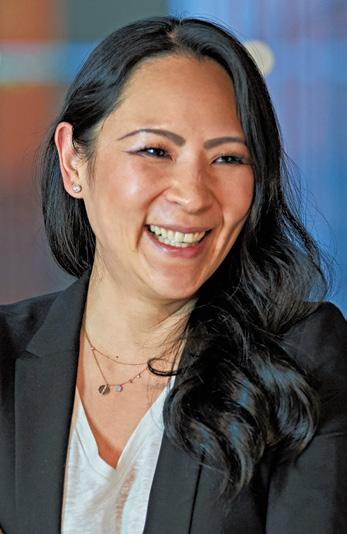
Alice Cheng, the founder and CEO of Culinary Agents, has a strong background in technology and business. With 13 years of experience at IBM, she learned how to apply technology to solve business problems effectively. Cheng has taken on leadership roles and mentored individuals across various industries, giving back as an advisor for food-related organizations including Food X. She also serves as a fellow with the Culinary Institute of America, further showcasing her dedication to the culinary world. Chang’s expertise in technology and business, combined with her passion for mentorship and giving back, make her a valuable asset to the culinary community. Her leadership and commitment to helping others succeed set her apart as a respected figure in the industry.
Kelly Costanza is a seasoned professional in the field of human resources, currently serving as the Chief People Officer at CAVA Group, Inc. With a wealth of experience spanning various reputable companies, Kelly brings a unique perspec-
continued on page 54


from page 52

tive and expertise to her role. Having previously held senior leadership positions at Ollie’s Bargain Outlet Holdings, rue21, EDMC, and American Eagle Outfitters, Kelly has a proven track record of driving strategic initiatives and fostering a positive work culture. Her background in talent management and human resources has equipped her with the skills needed to effectively lead CAVA’s people operations. The University of Pittsburgh graduate, is responsible for overseeing CAVA’s human resources functions, including recruitment, training, and employee relations. Her leadership style is characterized by a strong focus on employee development and engagement, ensuring that the company’s most valuable asset – its people – are supported and empowered to succeed.
dinner at the White House for 400 VIP guests in honor of Indian Prime Minister Narendra Modi. Known for his strict vegetarian diet, Chef Curtis was tasked with creating a menu that not only showcased the best of American cuisine but also incorporated Indian elements and flavors.

Nina Curtis, a former competitive bodybuilder turned vegan chef, culinary wellness consultant, lecturer, and activist for a plant-based lifestyle, found her passion for plant-based cooking after realizing her body no longer wanted animal protein. Her journey led her to earn various certifications and train in prestigious culinary institutions, ultimately landing her as the director and executive chef with Adventist Health. Nina’s mission is to provide delicious, whole-food, plantbased, and sustainable dishes to support the health and well-being of others. When asked about advice for young women in the food and beverage industry, Nina emphasizes the importance of aligning positions with future goals. She hopes to be remembered as a woman who helped others achieve their dreams and shares her love for figs and tacos as her favorite foods. In 2023, she was invited by the Biden administration to handle a gala

One of America’s most versatile, experienced and educated, culinary professionals, Diane Henderiks is on a mission to teach new levels of cooking and eating well – simplified and fun. With credentials as a Registered Dietitian, caterer, corporate chef, and Les Dames d’Escoffier International member, she provides a wealth of knowledge to help the home cook take ordinary ingredients to new culinary heights. Diane is a go-to expert for the media and has been featured in Shape Magazine and The New York Times. She is creator and host of Fresh to Frozen and Back streaming on Roku & Amazon Firetv. The owner of Diane Catering, she and her team create turnkey, unforgettable experiences for clients. With a heart for nonprofits such as Autism Speaks, Boomer Esiason Foundation and Jon Bon Jovi’s nonprofit Community Restaurant, JBJ Soul Kitchen, Diane loves giving back.

Owner, Il Sole, and President, NYS Latino Restaurant, Bar & Lounge Association
Sandra Jaquez made the bold decision in 2003 to leave her job on Wall Street to pursue her passion for food and open a restaurant in her native neighborhood of Inwood, NY. In a neighborhood largely
dominated by Dominican cuisine, Sandra chose to introduce Italian cuisine. By bringing a new and diverse culinary experience to the neighborhood, she is helping to enrich the cultural tapestry of Inwood and provide residents with a taste of something different. She also serves as president of the NYS Latino Restaurant, Bar & Lounge Association. The non-profit organization founded for the purpose of helping Hispanic and minority businesses succeed in commerce and industry, particularly, that of the food and beverage industry. NYSRBLA is one of the largest business organizations of its kind with over 350 restaurant members to date, ranging from individual Latino businessmen/women to gourmet larger restaurants, to Tri-State lounges and bars.
Vice President, Key Accounts, Welbilt
care, hotels, corporate cafeterias, airports, military bases, sporting venues, and the list goes on!” She encourages the next generation to consider a career in this amazing industry!

Rachel has spent her 25 years in foodservice on the equipment side of our industry. She has worked for manufacturing conglomerates such as ITW, Ali Group and Welbilt. After spending years in operations, more than half her career has been in sales. Rachel is Vice President of Key Accounts supporting the channels which include foodservice consultants, dealers, distributors, manufacturer representatives, and the end-customer. In 1999 when Rachel joined the industry by happenstance, she was unaware of its size and quickly learned, “Our industry is not only restaurants, but schools, health-
Claudia Lezcano is the Chief Executive Officer of Fuku. The fast casual restaurant chain specializes in fried chicken sandwiches. With over 25 years of marketing experience for major brands such as Church’s Texas Chicken, Burger King, and various sports teams, Lezcano brings a wealth of knowledge and expertise to her new role. She brings a strong understanding of the QSR and restaurant industry to the David Chang enterprise as well as a focus on operational excellence and delivering exceptional customer experiences. Her unique blend of marketing and operations experience makes her well-suited to lead Fuku towards continued success and expansion.
Founder and Principal, Loi Brand
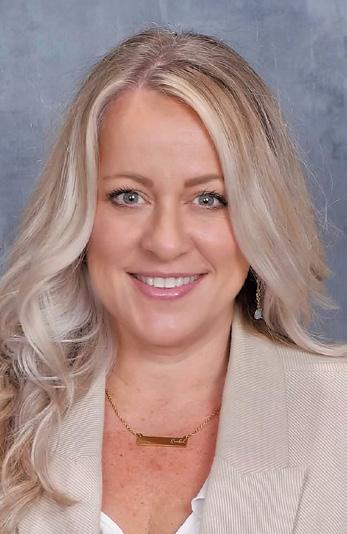
Maria Loi is an internationally respected authority on wellness and the Mediterranean diet, a celebrated chef, a successful businesswoman, and a steadfast supporter of philanthropic causes around the world. Her mission in life is simple: subscrib-
continued on page 56

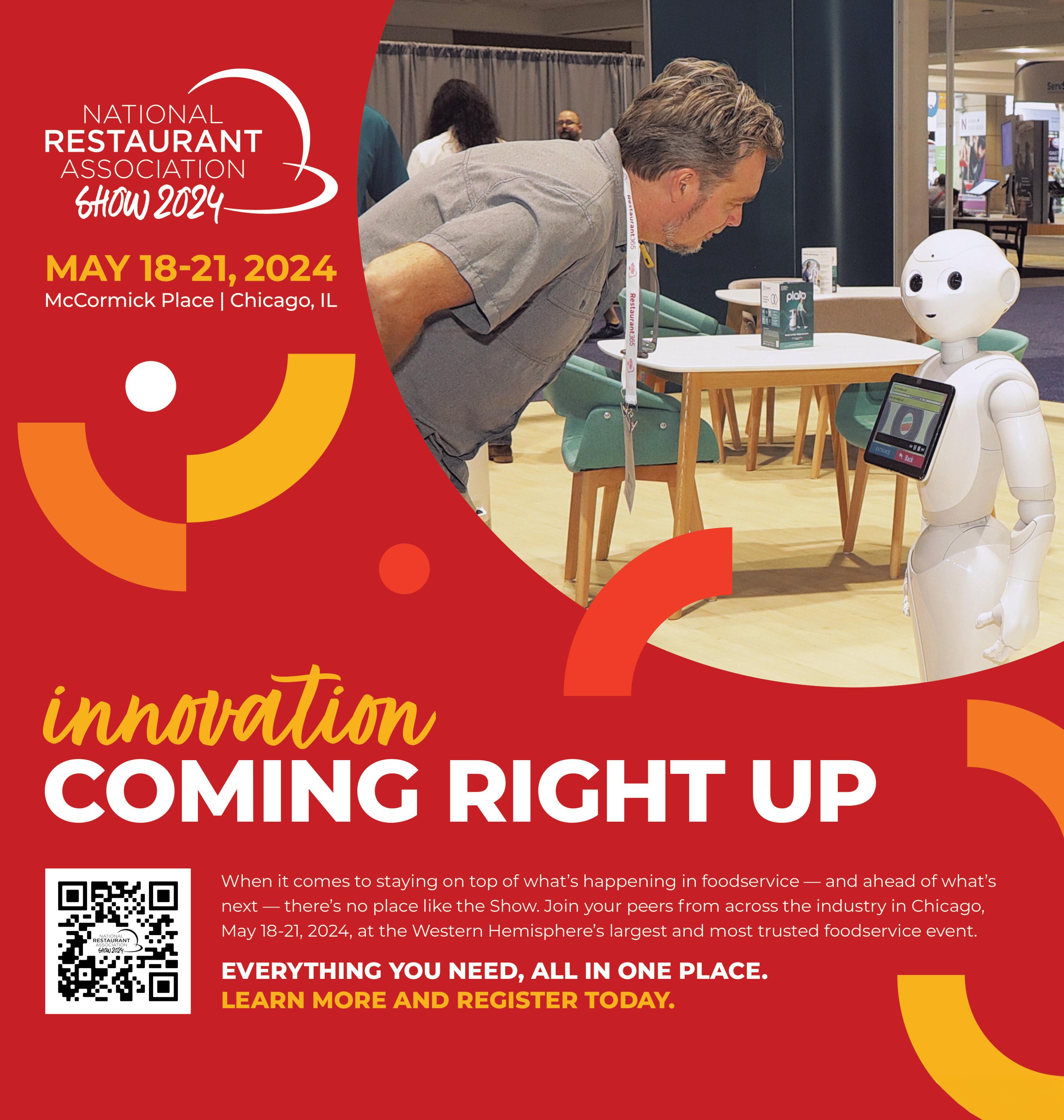
ing to THE LOI motto – Tasty, Healthy, Easy – Live On It – Chef Loi wants to change the world one healthy bite at a time. She is the founder of Loi Food Products, the namesake of Loi Estiatorio in Manhattan, and the author of over 36 cookbooks. Loi is the host of international Telly Award winning series, The Life of Loi on PBS, and just won Best Chef in a Series from the 15th annual Taste Awards. The series aims to build an inspirational and educational movement around the Mediterranean diet and lifestyle – from ancient to modern, food to culture and everything in between. Season two of The Life of Loi premieres April 27, 2024.
Senior VP of Business Development, Delfield

Marcy Mathews, with over 20 years in the foodservice industry, is a versatile leader at Delfield, celebrated for her innovative strategies in fostering a positive organizational culture and her reputation as a proficient problem solver. She has championed initiatives aimed at boosting morale, cultivating trust, and ensuring alignment across all levels of the company. Marcy’s dedication extends to nurturing female talent, previously co-leading the Women’s Leadership Network at Welbilt. She serves on the board of directors for Women Industry Leaders (WIL), advocating for a supportive environment for women in the foodservice equipment and supplies industry. Marcy gracefully embraces her roles within her family, finding fulfillment in the harmonious balance she strikes between her professional achievements and her personal life.
Senior Director of Responsible Business and National Programs , Elior NA.
from page 54

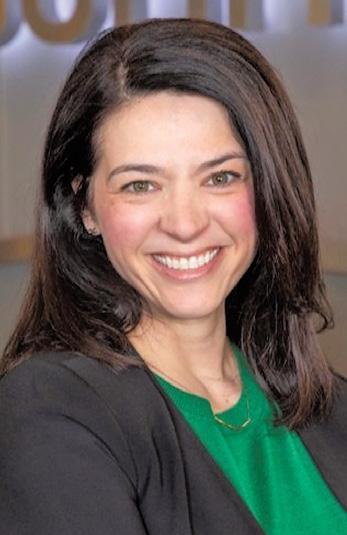
Kelly Myers is the Senior Director of Responsible Business and National Programs at Elior North America (ENA), where she is the voice and driving force for sustainability and marketing initiatives. Starting as a college student intern, Kelly is continuing her now 25+ year career in the food service industry by shaping and leading ENA’s social and environmental strategies. She has led the creation of their Social & Environmental Responsibility platform, Doing Good; she has worked to establish governance and set data-driven direction for both sustainability and organizational DE&I strategy; and she has crafted branding and marketing direction for multiple business lines and programs. Kelly has been active in Women in Hospitality, Travel & Leisure member programming and has served as a board member for ENA on the Multicultural Foodservice and Hospitality Alliance. She brings collaboration, forward movement, and her signature sense of humor to every interaction.
nered a devoted following and has published two New York Times bestselling cookbooks, Smitten Kitchen and Smitten Kitchen Every Day. Her engaging presentations and rigorously tested recipes have made her a sought-after speaker for events and conferences. Her latest book, Smitten Kitchen Keepers, features 100 tried-and-true recipes that are sure to be hits with home cooks of all skill levels. From slow-roasted chicken on schmaltzy croutons to chocolate peanut butter cup cookies, Perelman’s recipes are both delicious and approachable. In addition to her success as a cookbook author, Deb Perelman is also known for her warm and witty writing style, which shines through in her blog and public appearances. Audiences are drawn to her relatable personality and passion for cooking, making her a favorite among food enthusiasts and home cooks alike.
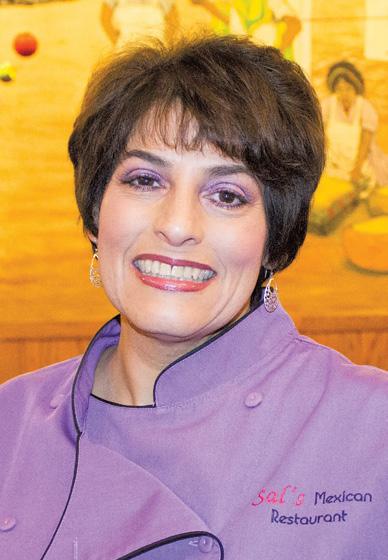
their contributions to the restaurant industry, Lorraine and Karl have received numerous accolades, including the California Faces of Diversity award and the California Restaurant Association Restaurateur of the Year title.


Deb Perelman is a talented chef, bestselling cookbook author, and the creative mind behind the popular food blog, Smitten Kitchen. With her unique and humorous approach to cooking, Perelman has gar-
Lorraine Salazar and her brother Karl are third-generation partners of Sal’s Mexican Restaurants, a Valley tradition since 1942, founded by their father, Sal. Lorraine gained hands-on experience in the business from a young age, working alongside her family in the kitchen. Despite her passion for the culinary arts, she initially pursued plans to attend law school. However, her father’s illness and passing led her back to the family business, where she now plays a key role in its management. Lorraine’s dedication to Mexican cuisine has led her to travel Mexico learning from local chefs, expanding her skills and culinary knowledge. She has trained with renowned chefs such as Rick Bayless, Diane Kennedy, and Patricia Quintana, incorporating their techniques into Sal’s menu offerings. In recognition of
Cara Schlarb had the opportunity to begin her career at a small, family-owned food service dealership in Colorado as a part-time warehouse employee. She then spent the next 20 years learning the business while serving in a variety of roles. Cara was ultimately appointed General Manager of the business she helped grow into a $75M, multisales channel dealership. That experience instilled valuable lessons in team culture, service, and dedication to business excellence. Utilizing these values, she now serves as Vice President of Vendor Programs at PRIDE Centric Resources, striving to leverage her skills and industry knowledge to encourage others to meet their personal and professional goals.

Born and raised in Mexico City, Barbara Sibley is an anthropologist, collecting traditional, rare, and ancient Mexican recipes, continued on page 58

following the traditions of the Mayoras, the women leaders of Mexican kitchens. Her extensive experience led her to open La Palapa Cocina Mexicana in NYC in 2000. As a truly authentic Mexican restaurant, La Palapa has been awarded the “Disctinctivo” by the Sabores Autenticos de Mexico Foundation. In 2022 she was named Operator of the Year by the Industry Excellence Awards at the Food and Restaurant Expo and La Palapa was Gender Equity Restaurant of the Year by One Fair Wage and Robert F. Kennedy Human Rights. Sibley coauthored the cookbook, Antojitos: Festive and Flavorful Mexican Small Plates, and is a featured contributor to many other bestselling cookbooks. During the pandemic she served over 90,000 meals to hospital workers, nursing homes, and soup kitchens. Barbara is currently the President of Les Dames D’Escoffier New York Chapter.
Executive Director, Careers through Culinary Arts Program (C-CAP)
Tanya Steel is the Executive Director for Careers through Culinary Arts Program (C-CAP); the Award Director for the Julia Child Award; and the author of three acclaimed books. She conceived of Canada’s Kid Food Nation, as well as the Healthy Lunchtime Challenge & Kids’ “State Dinner” with First Lady Michelle Obama, an annual event held at the White House for five years, where she gave four speeches. She’s the former Executive Director of IACP; Editorial Director of Epicurious, Gourmet Live, and Gourmet.com; NYU Adjunct Professor; and an editor at Bon Appetit and Food & Wine. She wrote for The New York Times for four years. Inducted into the Digital Hall of Fame, she has won Webbys, ASMEs, James Beards, and an Emmy. She has appeared on
from page 56
dozens of television shows, including the Today Show, The Early Show, Hell’s Kitchen, Master Chef. She raises awareness for Frontotemporal Degeneration, which took her husband and is a founding member of Cure MAPT FTD.

Starting her career in manufacturing working for both Sweetheart Cup Company and then Johnson Wax, Susanne developed a strong foundation in the industry with the robust training programs these companies both offered. Pursued by distribution, Susanne spent the next 10 years as Vice President of Sales with EBP Supply Solutions. Following EBP’s acquisition by Imperial Dade in 2021, Susanne became a Sales Manager for the Franklin, MA, branch location. She is a Council Member of ISSA’s Hygieia Network allowing the opportunity to share her insights and experience expanding programs to benefit the next generation of women entering the industry. In addition to the Council, Susanne is on the Recruitment Committee working to enhance the onboarding and engagement of new and existing members. She is a mentor to many young women in the industry.
 Rachael Weaver
Chief Business Development Officer, SEFA, LLC
Rachael Weaver
Chief Business Development Officer, SEFA, LLC
As the Chief Business Development Officer at SEFA LLC, Rachael leads the strategic direction and execution of new business opportunities for North America’s fastest-growing Foodservice

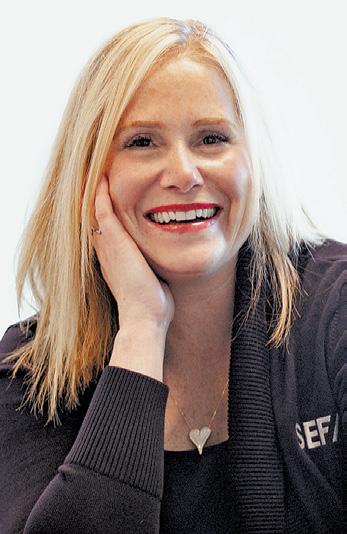
Equipment and Supplies buying group. With over 18 years of experience in the Foodservice E&S industry, she has found success by nurturing and growing long-term partnerships with suppliers, distributors, and customers globally.
Rachael is driven by the opportunity to deliver solutions and create value within the food service E&S market and, in doing so, prioritizes a culture of collaboration, innovation, and customer satisfaction. Rachael believes part of her legacy is to foster the growth of rising women in the industry and, in furtherance of her passion, became a founding member of the Women Foodservice Equipment Group and Women in Leadership (WIL) Group. Rachael strives to drive growth for SEFA LLC and its partners, meaningfully contribute to the advancement and sustainability of the Foodservice E&S industry, and ensure women are with her at the forefront of such growth and innovation.
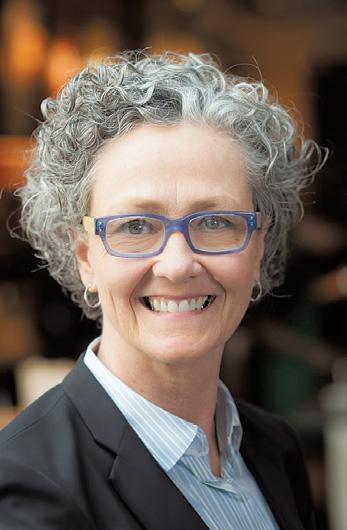
Rossann Williams recently joined Sweetgreen as the Chief Operating Officer responsible for operations, real estate and development, and supply chain. She most recently spent 18 years at Starbucks, where she was EVP and president of North America retail. Williams brings a wealth of knowledge and expertise to her role overseeing Sweetgreen’s 1000 plus store portfolio. During
her time at Starbucks, Williams oversaw a market of approximately 16,000 stores and played a key role in driving sustainable growth and profitability for the company. She is credited with improving same-store sales, successfully opening thousands of new stores, and navigating the company through the challenges of the pandemic. Williams’ experience in senior operations roles across North America including stints with both Blockbuster Video and Toys“R”Us as well as her leadership roles at other Fortune 500 brands.
Barbara Younger serves as the Director of Food & Beverage at Cure in New York City’s state-of-the-art . healthcare innovation campus where leading life science, digital health, and tech-enabled companies from around the world come together to uncover cuttingedge solutions for those in need. Cure provides laboratories, engineering and computing space, and other supportive services to help today’s thought-leaders build a better tomorrow. She was the guiding force behind the opening of Cure’s NaCl Café that offers a tempting variety of readily available plant-forward dishes.




Concerned about the impact of the pandemic on independent farmers and chefs, culinary maven Ruth Reichl talks to innovators across the country working to repair America’s broken food system and build a more sustainable future.
Ruth Reichl—trailblazing NY Times food critic, groundbreaking Gourmet Magazine editor, best-selling memoirist, and for decades one of the most influential figures shaping American food culture—grows concerned about the fate of small farmers, ranchers, and chefs as they wrestle with both immediate and systemic challenges as the pandemic takes hold.
Reichl reaches across political and social divides to discover innovators who are risking it all to survive
on the front lines. As one person leads her to the next, she follows the unfolding stories o ranchers in Kansas and Georgia, farmers in Nebraska, Ohio, and the Bronx, a New England fisherman, and maverick chefs on both coasts. As she witnesses them navigate intractable circumstances, Reichl shares pieces of her own life, and in doing so, begins to take stock of the path she has traveled and the ideals she left behind. Through her eyes, we get to know the humanity and struggle behind the food we eat. As Reichl says: “How we grow and make our food shows us our values – as a nation and as human beings.”




a smoked cinnamon bonbon and a milk chocolate, grapefruit, and coconut petit fours.
Matt Sartwell, Managing Partner, Kitchen Arts & Letters Bookstore in New York City shares his book reviews...
Whip by Frank Haasnoot
This strikingly designed and photographed book features the pastry work of one of the Netherlands leading patissiers, the winner of numerous competitions.
Frank Haasnoot offers everything from his version of classics such as madeleines and marble cake to
There’s a cluster of playfully flavored buches, some elegant frozen desserts, and even a chapter devoted to glazed treats
This is a handsome self-published book clearly intended for professional use, with well-designed recipe pages. Somewhat bafflingly, there are seven chapter openings printed in black ink on very dark brown paper which are a struggle to read. Fortunately, the chef’s notes for the individual recipes are much more accessible and to the point, with insightful commentary on flavor.
continued on page 62


From the Michelin-starred Chicago restaurant comes a handsome book emphasizing highly seasonal and beautifully plated food.
The restaurant’s chef, Lee Wolen, worked at places as varied as Le Manoir aux Quat Saisons under Raymond Blanc, elBulli under Ferran Adria, and at Eleven Madison Park in NYC. His recipes may not always flaunt groundbreaking techniques, but Wolen composes intricate and thoughtful dishes which sometimes take unfamiliar approaches.
For instance:
• Turnips braised in a caramel infused with aromatics, apple, and tamari;
• Dry-aged beef tartare
• Braised short ribs which are grilled before serving
• Brined, rolled pork neck, cooked for 18 hours sous vide
This is a book in which a chef speaks
directly to other restaurant professionals. Dishes are composed of multiple components, some of which depend on other components which must be separately prepared. It’s very much a professional cookbook, confidently and assuredly presenting what happens at the restaurant.
Editor’s Note About Podcasts- Listen and subscribe wherever you get your podcasts, including on Apple Podcasts, iHeart, Spotify, Stitcher, Google Podcasts, Audible & more.
If you’re a fan of smart and lively conversations about food, home cooking, and culture, this is the place. They interview the most interesting characters in the world of food, media, and cookbooks and release episodes several times a month. The program is hosted by TASTE editors Aliza Abarbanel and Matt Rodbard, and is sometimes recorded live at Rizzoli Bookstore in New York City. Visit TASTE online: tastecooking.com

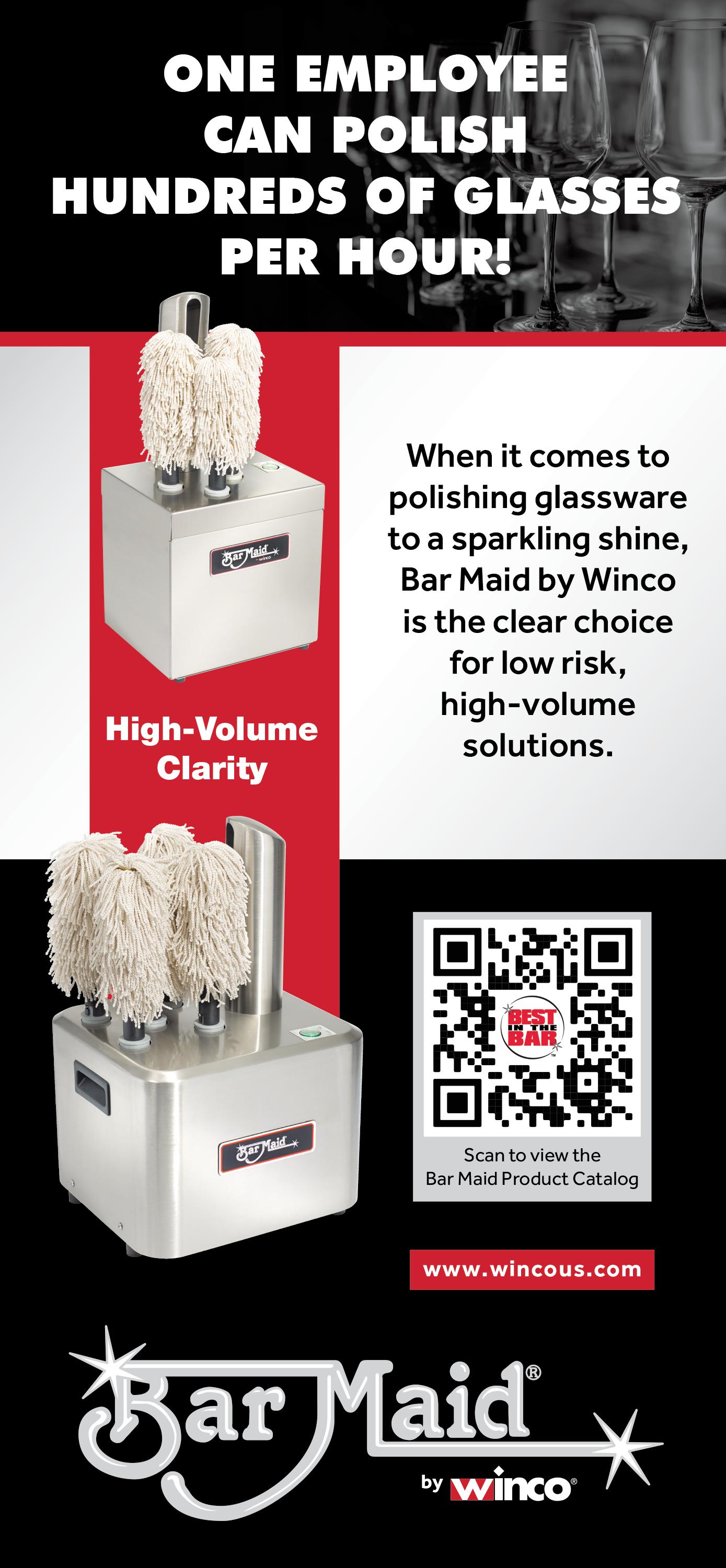
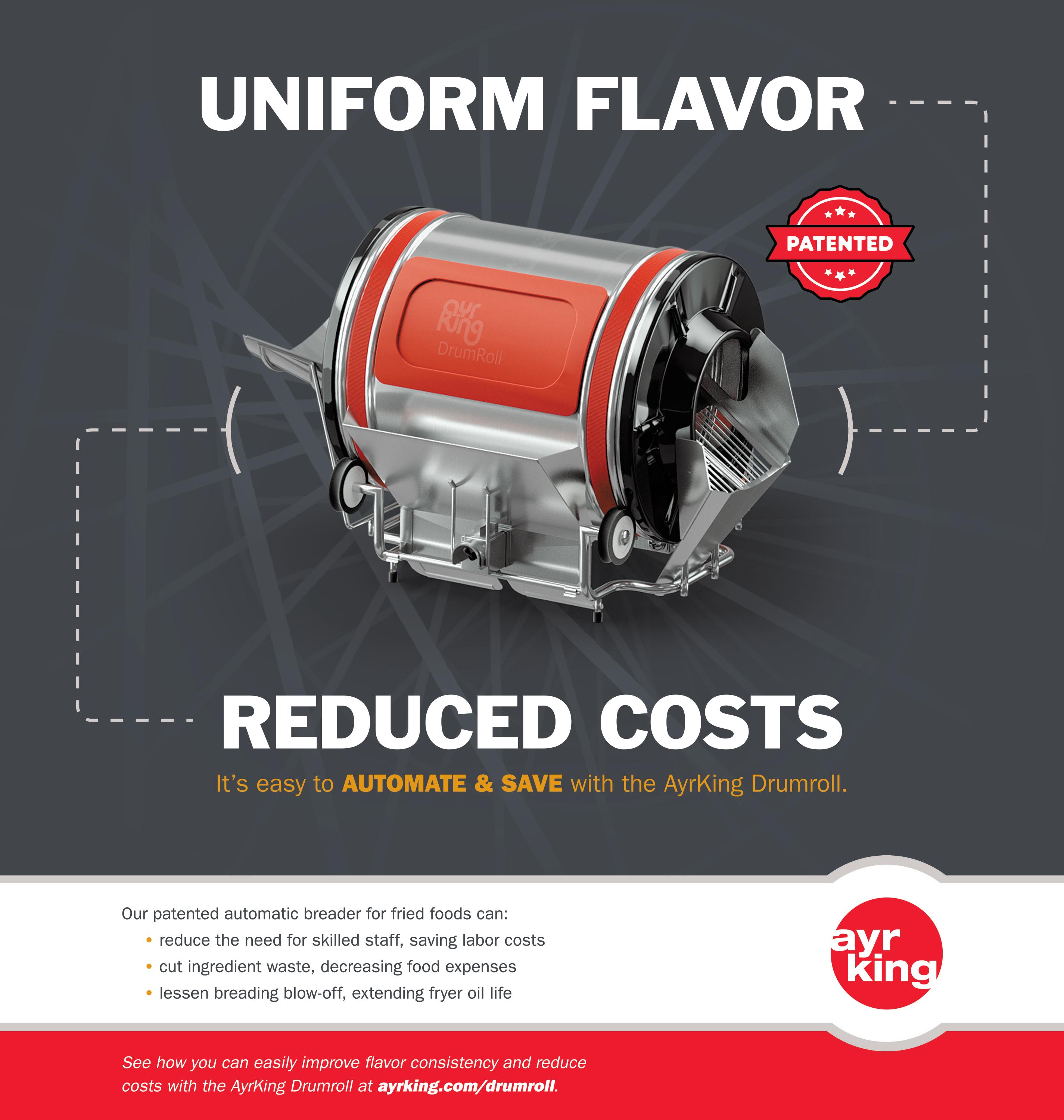
March has arrived! Right on the precipice of spring, we’re teased by still cool weather, with the promise of life renewed - the trees begin to bud, the air feels fresher, and the excited anticipation of greenery and warmth pervades.
Within all of this springtime fervor, changes are happening elsewhere – in particular, the seasonal produce available at farmers markets, grocery stores, and distributors…the winter roots are fading into the background, and the early spring stars are making their first appearances…and who been one of the biggest stars on the culinary scene in recent years than cauliflower?!


Multiple millennia ago, the humble Brassica oleracea, the ancient wild mustard plant, grew across the Mediterranean and parts of Europe. Over time, humans selectively bred this plant for different qualities – some for more leaves, some for more stems, some for more buds, some for more flowers, or a combination of any of the above…
Over time and through natural selective breeding and fortunate mutations, a whole group of delectable cruciferous vegetables came about –mustard greens, collard greens, and kale (bred for more leaves), kohlrabi (bred for more stems), cabbage and brussels sprouts (bred for more buds), cauliflower (bred for more flowers), and broccoli (bred for a combination of flowers and stems).
It is believed that cauliflower, as
it is known today, first originated in Cyprus somewhere between the 12th and 14th centuries; however, in his book Natural History (1st century AD), Pliny the Elder refers to a flowering variety of cabbage, known as cyma, as the tastiest of all the cabbages.
From Cyprus, modern day cauliflower spread to Italy in the late 15th century, and from there all over Europe and the world. It is worth noting that wild variants of the Brassica genus existed in other parts of the world that evolved and were domesticated over time – in particular in Asia.
Though cauliflower has been around and part of the world’s general vegetable repertoire for hundreds of years, in the days of yore and yesteryear, it was mostly served plain and boiled, often left on the plate instead of consumed.
It wasn’t until recent years where suddenly it seemed like cauliflower was EVERYWHERE. From cauliflower
steaks, to cauliflower pizza crusts, to cauliflower rice, it seemed nothing was spared from the infiltration of the world’s most unassuming vegetable.
But, before we get into the astonishing versatility of the incredible edible cauliflower, let’s talk about the different kinds and why this vegetable was born for stardom.
Of course, there’s the unassuming, traditional cauliflower variety, with its pristine white florets, but are you familiar with the gorgeous array of colors and unique shapes this delightful vegetable comes in?
There’s the vivid purple cauliflower, which has the same phytochemicals that make red cabbage and red onions purple. There’s also the bright orange cauliflower, which boasts a healthy dose of beta-carotene, much like in carrots, that allows for its dazzling hue.
And then there’s green cauliflower, and it’s very unique cousin, Roma -
Chef Maria Loi is an entrepreneur, Greek food ambassador and healthy lifestyle guru. The author of more than 36 cookbooks, she is also the host of critically acclaimed award winning series The Life of Loi on PBS, available to stream on Amazon Prime, Apple TV, PBS Passport, Roku, and Plex. The Life of Loi aims to build an inspirational, educational movement around the Mediterranean diet and lifestyle, and recently won the Telly Award for Best Online Series – Food & Beverage, as well as the TASTE Award for Best Chef in a Series for Chef Loi. Her Loi Food Products, a specialty brand built on traditional ingredients from Greece, includes frozen pies, pastas, botanical herbs, refrigerated dips, holiday cookies, and olive oil sold on QVC, at Whole Foods Markets, and in other stores. The namesake of Loi Estiatorio in the heart of Midtown Manhattan, she also has the Loi Specialty Shop at The Plaza Hotel. Connect with her on LinkedIn, follow her on Instagram and Facebook, and learn more about her food philosophy at loiestiatorio.com/chef-loi/.
nesco. While both green cauliflower and Romanesco share coloring thanks to additional chlorophyl, Romanesco has a naturally occurring fractal pattern, lending them their trademark distinction and appeal. Each head of Romanesco is made up of smaller buds that build over and over each other, resulting in Romanesco’s recognizable peaks, which is also why this flower never blooms. A mutation in their genetics causes the plant to keep repeating its budded pattern without fully blooming, thereby creating its shape.
continued on page 66

from page 64
While purple cauliflower is the healthiest of the varieties available due to the additional antioxidants that provide for its gorgeous violet hue, all types of cauliflower are incredibly good for you!
Cauliflower of all kinds are an excellent source of vitamins and minerals, including vitamin C, folate, and vitamin K, while orange cauliflower has the added bonus of being chockful of vitamin A as well. It’s also full of antioxidants, which are beneficial for reducing inflammation and protecting against several chronic diseases, as well as slowing down the aging process on a cellular level.
Cauliflower is also full of fiber, high in water content, and low in calories, which is a great combination to aid in weight loss while maintaining feelings of fullness and a healthy digestive system.
But remember, before changing or adding anything to your diet, always ask your doctor.
Though I love it now, as a child I despised cauliflower. Much of the time, my mother would prepare it by simply steaming or boiling it, sometimes with lemon, sometimes without – and I would refuse to eat it.
But, when my Yiayia (grandmother in Greek) made her kounoupidi kokkinisto (red cauliflower), I would gobble it up! She cut up onions, carrots, and celery (sometimes adding garlic too), and sauteed them until they wilted, then added a healthy dose of tomato paste, and allowed them to caramelize. She’d add some water, season it properly, bring it to a boil, and then turn off the heat. Once the heat was off, she would add the cauliflower florets and allow them to steep in the tomato-y sauce until they were tender-crisp and had absorbed the delicious flavor of her perfectly balanced sauce. She would finish it with a squeeze of lem -


on and serve it with some Feta cheese and fresh bread. Though I loved the slight crunch her kounoupidi kokkinisto had, what I really waited for was when it got softer (the longer it steeped) and I could almost spread it on a piece of bread, along with the sauce, top it with Feta, and make a little sandwich out of it! It was sweet, and unctuous – like being hugged on

the inside.
My Papou (grandfather in Greek) always told us to eat our cauliflower, but never forced us. He said, “it’s very good for you, but if you don’t like it, don’t eat it… but one day, when you’re older, you’ll love it – mark my words.” He also told us that his young appearance was thanks to cauliflower –which he was right about, as always!
In 2024, it’s virtually impossible to find a menu without cauliflower on it. We’re now in the second decade of the reign of cauliflower, and it’s not hard to understand why.
Cauliflower is unbelievably versatile, if for no other reason than its ability to shapeshift and take on the flavors of whatever it’s prepared with; it also adjusts accordingly to how it’s prepared – it is, perhaps, the ultimate culinary chameleon. Beyond its flexibility, cauliflower is also an highly cost-effective ingredient to have on-hand and on menus.
We’re all familiar by now with cauliflower steaks, but it never ceases to amaze that this beautiful vegetable has such a wonderful mouthfeel, that it can replace meat for a meal without skipping a beat.
Try seasoning or marinating an entire head of cauliflower, and then roasting it or smoking it – the diverse textures will blow your mind, and depending on what you use to flavor it, will amend the surface textures in conjunction. Think about a marinade with more sugars involved, like a barbecue glaze or Korean style gojuchang marinade – even simply using tomato paste – the sticky caramelization of the surface will be astounding, while the florets will gradually get softer, until you hit the core, which will then be
continued on page 130

The training of chefs is essential to the ongoing consistency and success of a management company’s culinary portfolio for several reasons. Trained chefs have the skills and knowledge to consistently deliver high-quality dishes that meet the company’s standards. They are able to execute recipes with precision, ensuring that each dish is prepared correctly and tastes delicious every time.
With that as the focus, Delaware North has raised the bar for the Foodservice industry with the creation of an innovative training program. The Buffalo, NY company has launched its Culinary & Hospitality Excellence for Future Success (CHEFS) program, a training program designed to develop talent, elevate standards, and cultivate a culture of mentorship within
the organization.
The program embraces the goal that properly trained chefs are able to adapt to changing culinary trends and customer preferences. By staying up-to-date with the latest techniques and ingredients, they can create innovative and exciting dishes that keep customers coming back for more. This ability to evolve and innovate is crucial for a management company to stay competitive in the constantly changing food industry.
Furthermore, trained chefs understand the importance of food safety and sanitation, which is critical for maintaining the company’s reputation and preventing foodborne illnesses. They follow proper hygiene practices and ensure that all food is prepared and stored safely, reducing the risk of contamination and
“We wanted to put together a program that really leaned on our subject matter experts, our chefs, to really mentor those who are up and coming.” — Lou
ensuring the health and safety of customers.
For over a century, Delaware North has been an institution in the world of travel and hospitality, with a presence in the United States, Britain, Europe, and Australia. With a diverse portfolio spanning airports, casinos, and a restaurant arm that includes venues in Disney, New York, and Los Angeles, Delaware North has remained at the forefront of culinary and event innovation.
Lou Piuggi, the Vice President
 Piuggi
Piuggi
of Culinary at Delaware North, is a graduate of the Culinary Institute of America (CIA) and has been working in food service for over 40 years. With experience working in restaurants throughout NYC and with some of the premier chefs in the country during the heyday of food service, he described Delaware North as a company that truly cares about their people; this is particularly evident in the CHEFS program. “I think that’s one reason that this CHEFS program is so important,” he said. “It’s about our people.”
The program was started with the intention of doing something meaningful with training and development. “We wanted to put together a program that really leaned on our subject matter experts, our chefs, to really mentor those who are up and coming,” he said. The program is based on learning through mentorship—associates work with chefs at Delaware North to learn real-world, technical skills on the job. Piuggi stressed that this program is about training people on all levels; it isn’t only about training associates, but training current chefs to become better mentors, teachers, and communicators, and giving them the opportunity to hone their skills while influencing the next generation.
A big focus of the program is training associates to be able to learn and
continued on page 128

In today’s fast-paced world, convenience is king. Consumers are constantly seeking ways to save time without compromising on quality, especially when it comes to their meals, and who can blame them. Just because your are short on time does not mean you still can’t enjoy a flavor-packed meal. This demand presents a significant opportunity for convenience stores to step up their game and become go-to destinations for dinner solutions. By incorporating ventless kitchen equipment such as AutoFry and MultiChef, convenience stores can revolutionize their dinner menus and attract a new wave of customers seeking delicious, hassle-free meals on the go.
The Rise of Convenience Dining Convenience stores have long been synonymous with quick snacks and grab-and-go items like roller dogs and microwaveable burritos. However, as consumer preferences evolve, so too must the offerings of these establishments. Dinner is a prime opportunity for convenience stores to expand their culinary offerings and tap into a market hungry for convenient dining solutions. With the right equipment and menu offerings, convenience store owners and operators can position themselves as convenient dinner destinations for busy individuals and families alike.
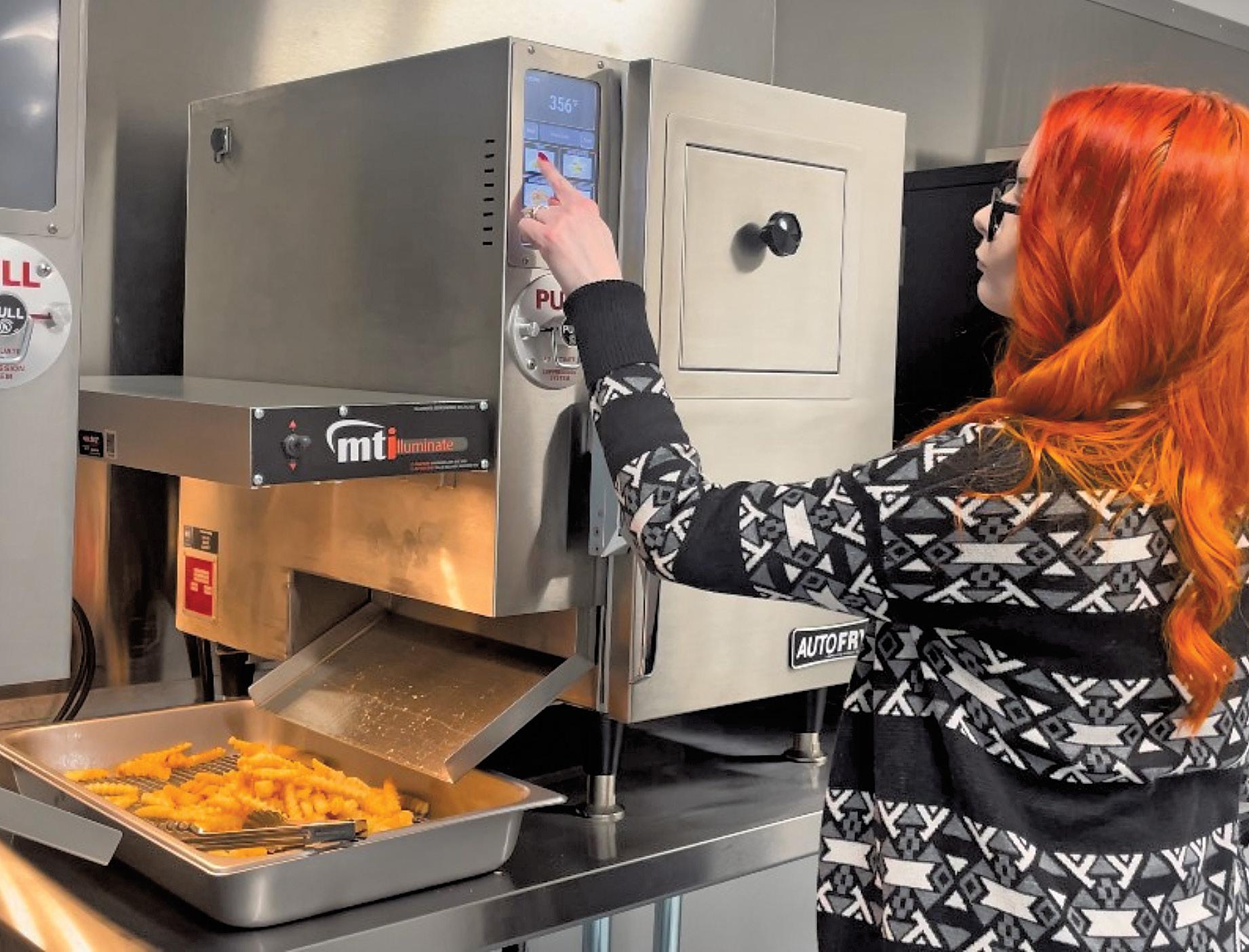
Traditional kitchen setups can be space-intensive and require costly overhead ventilation systems. This is where ventless kitchen equipment like AutoFry and MultiChef come into play. These innovative appliances are designed to operate without the need for external ventilation, making them ideal for compact spaces like convenience store kitchens. By investing in ventless equipment, convenience stores can unlock a world of culinary possibilities without the hassle and expense of
traditional kitchen setups.
With ventless kitchen equipment in place, convenience stores can expand their dinner menus to include a diverse array of offerings. From crispy fried chicken and fries to gourmet sandwiches and cheesy pizzas, the possibilities are endless. By leveraging the versatility of AutoFry and MultiChef, convenience
continued on page 127

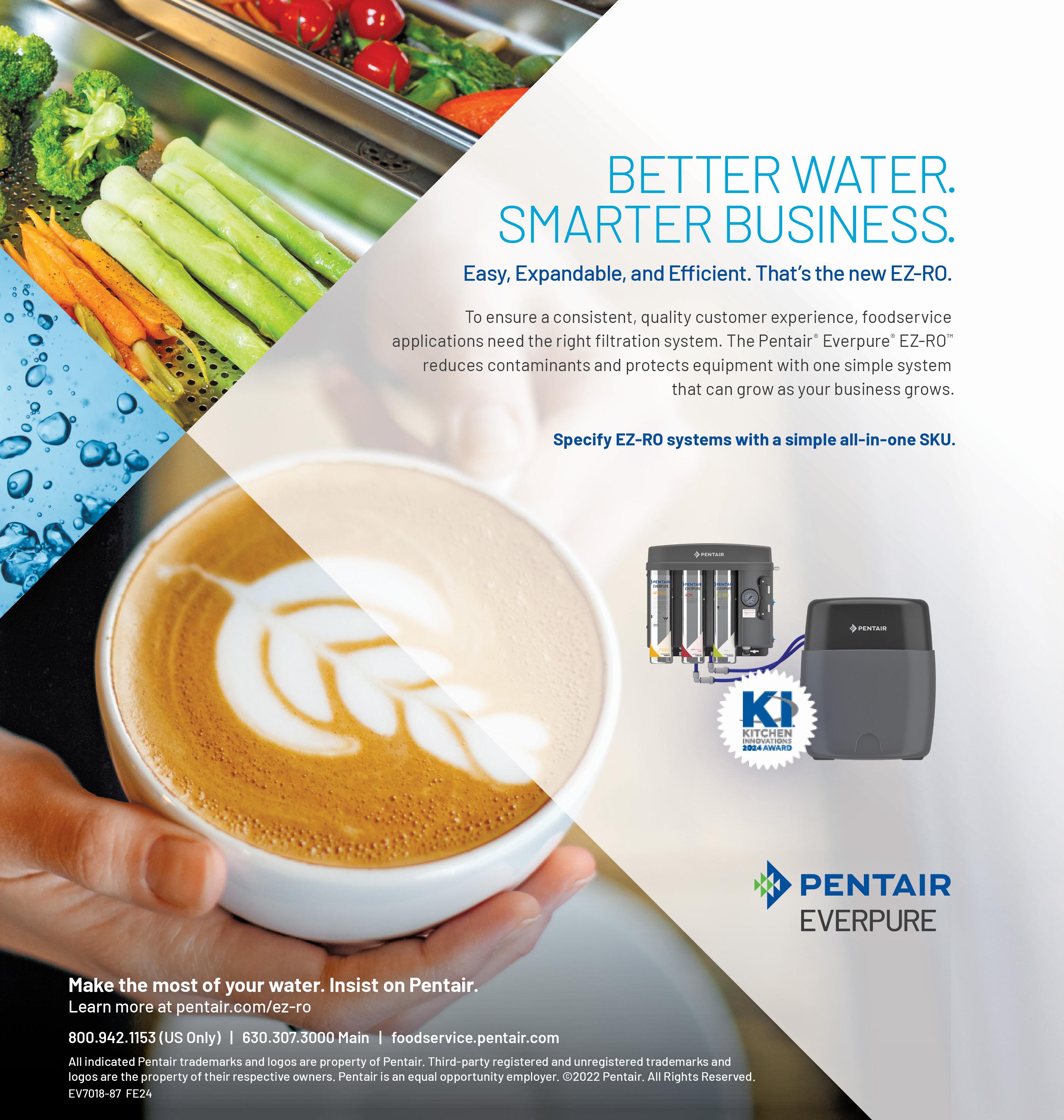


In the competitive world of pizzerias, it is crucial for establishments to continually seek new and innovative toppings to keep customers’ palates challenged with new flavor profiles. By offering unique and diverse options, pizzerias can not only attract new customers but also retain their existing ones. Introducing fresh ingredients and inventive combinations not only adds excitement to the menu but also provides an opportunity for customers to explore different flavor experiences. Culinary innovation sets pizzerias apart from their competitors and ensures customer satisfaction and loyalty.
Many pizzerias and foodservice operators have found that solution with Mike’s Hot Honey. When Mike Kurtz first started making hot honey in 2004, he was a senior in college making batches in his apartment kitchen for personal use and to give out to family and friends. Now the country’s leading brand of hot honey, Mike’s has come a long way from that college apartment kitchen.
After moving to New York City and trying his hand working in the music business, Kurtz’s passion for making pizza led to an opportunity to apprentice at Paulie Gee’s pizzeria in Brooklyn. While working at the restaurant at night in addition to his day job, Kurtz brought
in a bottle of his hot honey to try on the pizza. It quickly became a hit, and he was asked to start making it for the restaurant. Soon customers began asking to buy bottles and Kurtz started bottling Mike’s Hot Honey, making bottles available for sale from the bar.
Moving into larger scale production, however, was another game entirely. “Scaling up was probably the most difficult part of the process of growing the company,” Kurtz said. “There wasn’t a product out there like this at the time, so there was no bottling line that was already equipped to make our product.” He quickly realized the need for someone experienced in honey production and packing. “A lot of packers wouldn’t work with us because of the
risk of cross-contaminating their honey with our chili peppers,” he said.
These days, Mike’s Hot Honey is available in grocery stores and at restaurants around the country. “At this point the brand awareness is pretty large; we’ve distributed across the country and people recognize the brand, so when they see it on menus they want to try that item,” Kurtz said.
Mike’s Hot Honey is a very simple addition to the kitchen and is usually used as a post-oven topping. This makes it easy to add to pizzeria menus and works well in a wide range of restaurant concepts. Today, the most successful pizza operators are expanding and adapting their menus to adjust to changing tastes.
“Pizza is a pretty resilient part of food service. It’s universally loved, travels well, can be shared, and is fairly inexpensive,” Kurtz said. “More recently, we’ve seen a renewed focus on quality and on simplifying menus. There’s been an uptick in New York-style slice shops outside of New York that pay real attention to detail and attention to the quality of their crust. You do yourself a favor when you reduce items and focus on a few high quality ingredients. Mike’s Hot Honey can add a dynamic new flavor to almost any menu item with just a simple drizzle.”
Although Mike’s Hot Honey started out as a pizza topping, it can be used to elevate a wide range of dishes, from fried chicken to salads to cocktails to desserts. They even have a signature ice cream flavor at Cold Stone. “There’s a value in people seeing a quality, recognized brand like ours on a menu. This brings attention to restaurants who use our product and call us out by name. Restaurants are consistently seeing incremental growth when adding our product to their menus.”

Mike’s Hot Honey is available through most major distributors. Interested buyers can also email wholesale@ mikeshothoney.com for samples and more information, or go to mikeshothoney.com to learn more.

The selection of the right olive oil is of utmost importance for a restaurant or food service establishment aiming to create consistent signature dishes that entice the dining public to return on a regular basis. Olive oil plays a critical role in enhancing the flavors of various culinary creations, adding depth, richness, and complexity to dishes.
The right olive oil can elevate a simple salad dressing, a pasta sauce, or even a marinade to extraordinary levels, captivating the taste buds of customers and leaving a lasting impression. Moreover, olive oil is not just a flavor enhancer but also a health-conscious choice, known for its numerous health benefits. Thus, by carefully choosing high-quality olive oil, restaurants and food services can ensure that their dishes are not only delicious but also nutritious, appealing to health-conscious diners who seek a balanced and satisfying dining experience.
From extra-virgin olive oil in salad dressings to vegetable oil in baked goods, oil is truly a key ingredient across an operators’ menu. For a product so versatile, it’s crucial that food service operations opt for the highest quality product. “Despite the changes in diets and trends, oil remains,” said Ben Caffrey, COO of Chicagoland-based Columbus Vegetable Oils. The company has been in business for 90 years, and today, it provides both retail and food service operations with over 200 cooking oil options, among other products, to best suit customers’ preferences.
“Food service is in our DNA,” said Caffrey, whose great-grandfather and grandfather began Columbus in the 1930s, just before World War II. There
was an olive oil shortage in Chicago, so they found a source, brought it back into the city, and began their business first as an oil packaging company, Columbus Packaging Company. The rest is history: they began selling to food service operations and distributors, servicing meatpackers, butchers, and dairy companies throughout the city, eventually becoming Columbus Vegetable Oils.
Since making their mark on the Chicago area, Columbus grew throughout the Midwest for four generations. Now, they’ve got a production facility in Reno, Nevada and are growing out west, working primarily with food service but also in the retail sphere, using both Sysco and US Foods as distributors. “We maintain ourselves and hold ourselves at an incredibly high standard,” said Caffrey. This standard is what has set them apart, allowing them to maintain

“We’re about consistency across the board. If anybody wanted to walk through our facility, they’d see the quality just by walking in the door.” — Ben Caffrey
strong relationships with distributors and operators.
The company uses Columbus Vegetable Oils as its corporate name and under that iconic umbrella are a variety of brands, including Butcher Boy, Sorrento Olive Oil, Mike Brand, and Nature’s Secret. Their product line is extensive, ranging from coconut to sunflower, to soybean and corn oils. They also offer a custom oil blending option in which the Columbus team helps the operation create and produce it from start to finish.
With a wide range of oils, it’s guaranteed that operators will find something that works with their menu, whether that be a tasteless oil or one with a slightly spicy flavor. “It’s hard for us to say no,” Caffrey said, explaining that the company tries its best to satisfy and meet their customers’ needs, no matter how unique they may be.
In addition to oils, they offer other kitchen staples such as shortenings and animal fats. They also have lines of dressings, hot sauces, syrups, and barbecue sauces. Similar to the custom blending option for olive oil, the company also offers dressing and sauce customization for customers with specific needs.
All of their products are also transfat free, and SQF certified. With the rise of the Mediterranean diet and more and more people looking to indulge in high-quality extra-virgin olive oils, this certification is crucial.
“We’re about consistency across the board,” said Caffrey. Organic and nonGMO options are also available for many of their products. “If anybody wanted to walk through our facility, they’d see the quality just by walking in the door,” Caffrey continued.
Besides its products, Columbus takes pride in their professional, high-grade facilities which are regularly updated and improved to maintain their product value. Additionally, Columbus’ customer service team helps make the company stand out. “We have a great customer service and sales staff,” Caffrey said. “It’s not hard to reach us. Somebody’s going to pick up the phone.” With exceptional products, facilities, and service, the future of Columbus Vegetable Oils only looks positive.
Although they’re starting 2024 off strong, Columbus is nevertheless looking towards the future of its company. Caffrey said that they’re focusing a lot on gourmet blends that restaurants are looking for, along with new shortening products for baking. With each product they release, quality and consistency remain at the center of each one. “At the end of the day, when [customers] are using our products, they know they’re coming from a company that really cares about what they do.”
For more information about Columbus Vegetable Oils and their product line, give them a call at 1-800-322-OILS (6457), email at sales@cvoils.com or visit their website, www.cvoils.com.

Agreat restaurant tradeshow in the spring is like a shot of adrenaline for restaurant owners and industry professionals. It injects them with a surge of enthusiasm and fresh ideas as restaurants and clubs gear up for the busy summer dining season. It’s a time when the industry’s brightest minds come together to showcase the latest trends, innovative technologies, and mouth-watering culinary creations. From interactive demos and workshops to networking opportunities, a dynamic show ignites a fiery passion within knowledge, inspiration, and excitement boundaries and elevate their establishments to new heights.
The industry has always eagerly anticipated the upcoming New York Restaurant Show for both its timing and a track record of delivering a comprehensive menu of “what’s new.” This year’s edition is set to take place at the Javits Center in NYC on March

“You won’t know how heavy an oven door feels from reading a spec sheet.” — Glenn Celentano
3rd-5th. Total Food Service sought out the show’s new CEO Glenn Celentano to share his insights about the show’s trajectory and exciting new features.
The visionary trade show executive is part of the show’s new ownership group: Restaurant Events. The trade show, which has been a New York City staple for 32 years. “We look forward to breathing some new life into it –the core of what the show is remains, and it’s as always a great place to go and interact with vendors,” Celentano said.
Restaurant Events’ goal is to revolutionize the long-running event by transforming it into a more immersive experience, with a heavy focus on exhibitor displays and educational
programming. “We’re really listening to the industry,” he shared. “Until you get ideas and feedback from people, you’ll never be successful, and we’re asking them what keeps them up at night and where they need help.”
In addition to the show’s highly anticipated additions, the show’s central mission remains the same: to help attendees discover what’s new in the industry. “It’s really about paying attention,” Celentano explained. “The show used to be about the new companies, but now it’s more about what new products existing companies have for restaurant and foodservice professionals.” Part of the experience, he urged, is about letting attendees experience these new products that

they may not be familiar with: “Don’t just show attendees brochures – anyone can print or download a pamphlet online. If you’re bringing something new, let people touch it, taste it, smell it, or use it.”
Maintaining a physical presence at the trade show is an integral part of the experience as an exhibitor. While many marketing arms exist for vendors to promote new innovations or technologies that restaurateurs can adapt into their operations, “there’s no better opportunity to get in front of people than a business-to-business trade show, because you can’t look at a picture and taste the food,” Celentano advised. Face-to-face connection, as well as presenting physical products, helps restaurant owners develop an intimate understanding of how new items work: “You won’t know how heavy an oven door feels from reading a spec sheet,” the exec added. The
continued on page 80


from page 78
same logic applies to suppliers: being able to talk through a product’s specifications, answer attendee questions, and demonstrate its uses is vital to education, and is something that more traditional marketing techniques, like social media or paper advertising, can never offer. The value of exhibiting, for prospective suppliers, is massive.
Another integral part of the trade show experience is education, as Celentano outlined: “The one thing that I want my attendees to walk away with is a single word: answers.” As per usual, the show will feature a packed schedule of programming covering a wide variety of industry concerns and innovations. “The key to the education aspect of the show,” Celentano noted, “is that we want everyone to learn something they can do when they get back to their operation tomorrow – it has to be immediately actionable, easy and painless.”
One highlight of the show’s programming is the result of a new partnership with the New York City Hospi -
tality Alliance. The Andrew Rigie led group is slated to host its annual State of the Industry Conference during the show at the Javits. With a dedicated theater on the venue floor, the conference will feature panel discussions covering hot-topic issues, like staff retention and outdoor dining, that are major concerns for operators in the five boroughs. Many of these key topics, Celentano explained, came from the show’s Conference Advisory Board, where its members have changed the strategy behind educational programming this year: “We want to understand where the operational challenges are – a colossal error of doing service events has been trying to guess and anticipate what people want to learn about instead of simply asking them physically.”
The programming also highlights areas in which Celentano envisions improvement, like restaurants’ use of social media: “You can’t avoid it,
continued on page 132
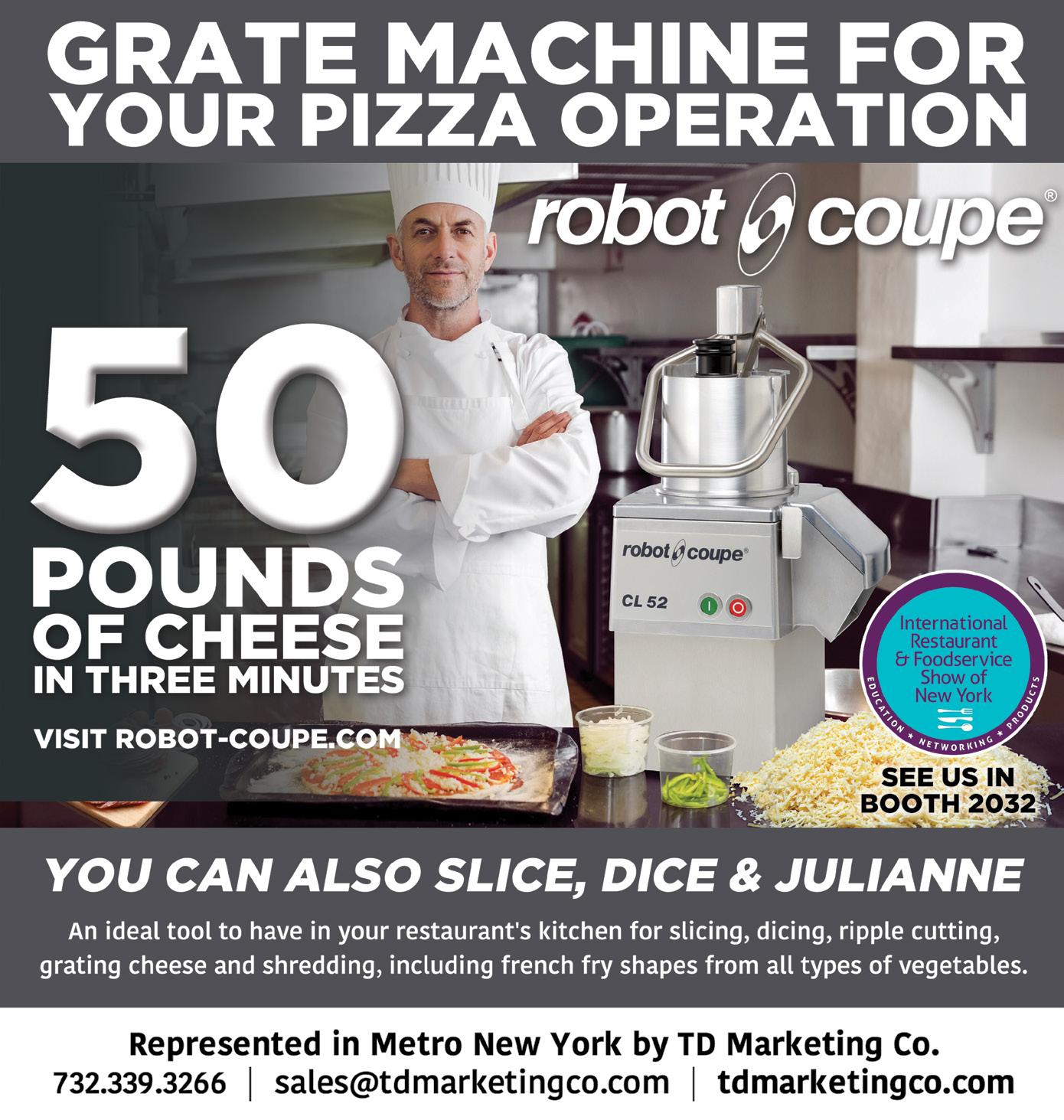
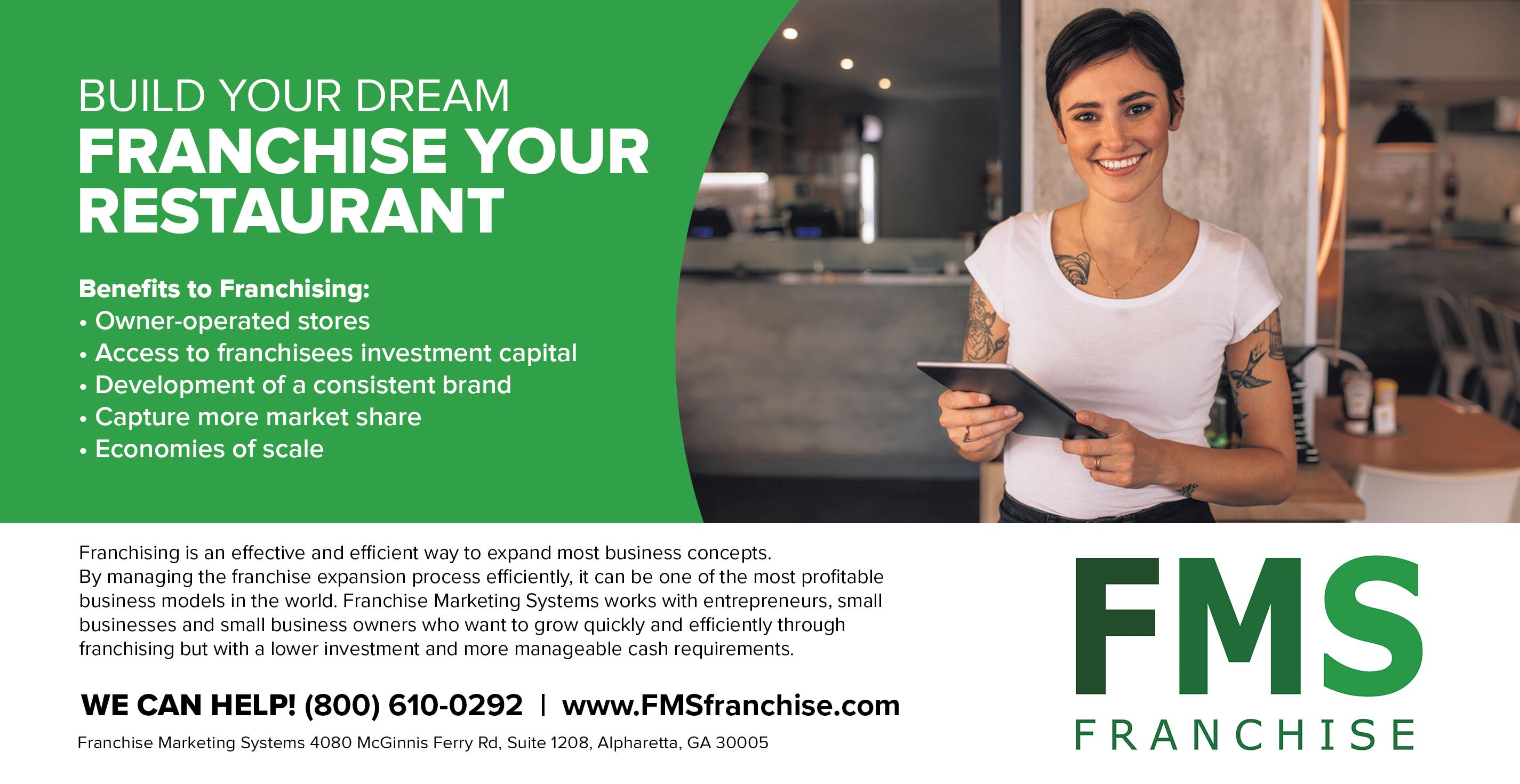


Are you looking for a packaging solution that can fit virtually every need in delis, bakeries, fresh and prepared foods, or all of the above?
Inno-Pak’s new, eye-catching To Go Fresh design can help streamline operations, elevate products, and build brands. It’s a matched packaging concept that seamlessly blends form and function.
To Go Fresh aims to connect products across the deli, bakery, and fresh and prepared foods, creating opportunities to enhance sales of products in all categories. When customers see how much care and thought went into their food’s packaging, they’ll know you put thought and care into the food as well.
Inno-Pak tested To Go Fresh with focus groups to find a look that resonated with real customers. The refined, elegant look reinforces your brand image and makes your products look more appetizing. Instead of seeing a variety of clashing designs or, worse, messy packaging, customers will see a unified family of products. As one focus group participant said, “They’re not just throwing food they found in the package in the back somewhere.”
With To Go Fresh and Inno-Pak, you can switch away from multiple packages and suppliers to one brand family from one manufacturer known for its customer service and innovative products.
Inno-Pak partnered with a market research company to create focus groups
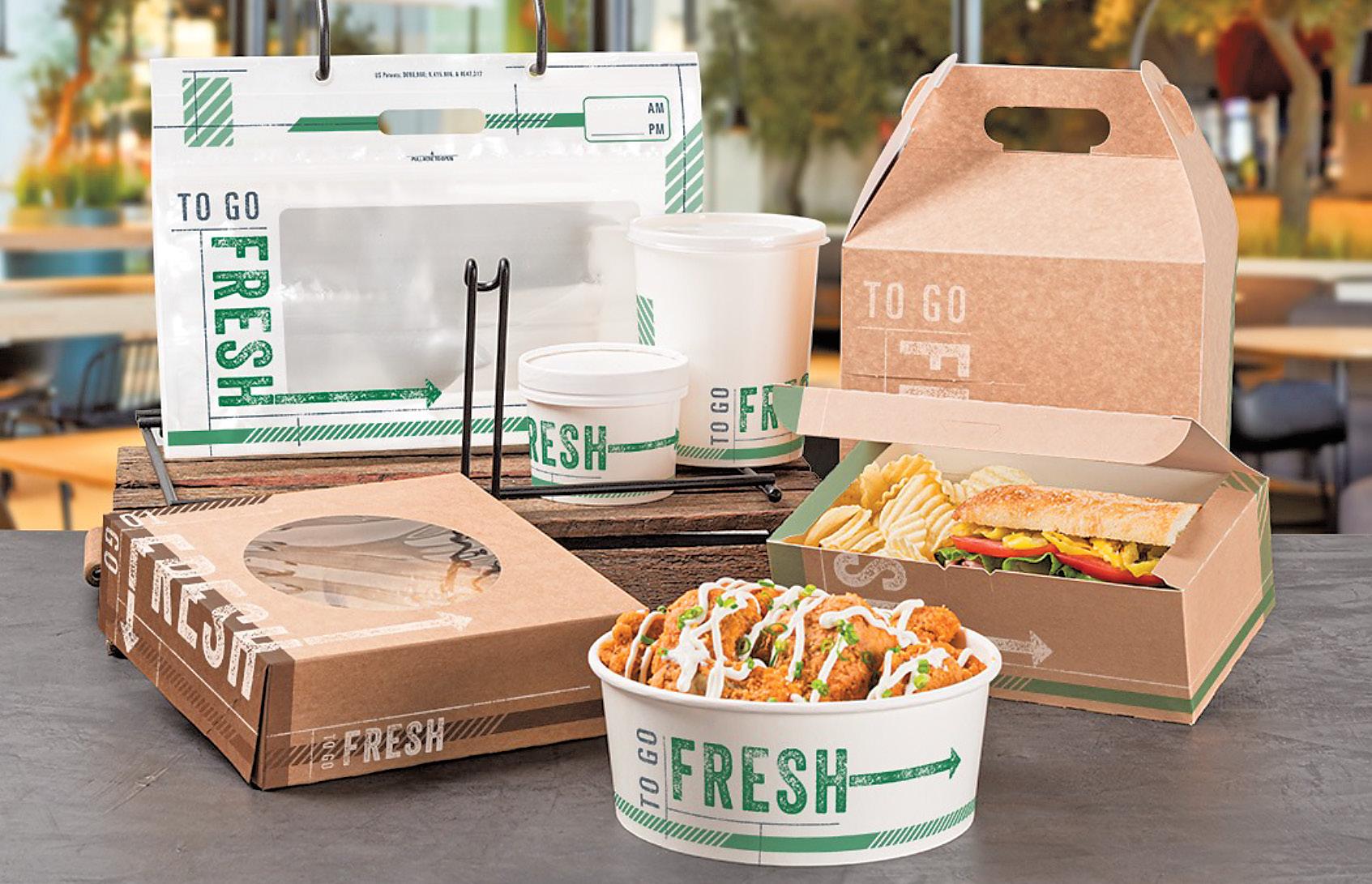
that consisted of frequent deli, bakery, and fresh and prepared foods customers. These focus groups provided feedback on what customers expected from packaging, the kind of substrates they liked, what kind of window configurations were preferred, the graphics and colors they wanted to see, and much more.
Overall, focus group participants wanted a refined look that encompasses the essence of bakeries and delis and can reinforce or enhance a brand’s image. Such a well thought out look could have a halo impact on the brand, creating good associations for the products inside the packaging and the brand that uses that packaging. In contrast, packaging that comes off as cheap or flimsy can harm the perception of your brand or products.
Here are more findings about what consumers wanted in packaging and how To Go Fresh delivers:
• Consumers wanted to see colors or something that “pops” off the shelf. To Go Fresh uses greens, browns, and whites that “pop” on the various sub-
strates.
• Consumers wanted appropriate graphics, colors, and wording. To Go Fresh uses bright but natural colors and the phrase “To Go Fresh” is to the point.
• Consumers don’t want to feel like they’re being sold to. To Go Fresh simply highlights freshness to the consumer.
• Consumers want something that looks nice at a gathering or party. To Go Fresh graphics are elegant, on-trend, and versatile.
• Consumers want packaging that looks and feels high-end. The brown kraft used in To Go Fresh’s cartons is viewed as high-end and natural.
• Consumers want sturdy packaging that ensures food will safely reach its destination. To Go Fresh meets InnoPak’s high performance and durability standards.
• Consumers wanted windows that make it easy to see the food provided but don’t compromise the durability of the packaging. To Go Fresh used window configurations that maximize protection, allow great visibility, and reinforce food associations with window shapes.
• Consumers wanted packaging that is easy to close, open, and use. Inno-Pak added its patent-pending “spine reliefs” for easy close cartons and utilized easyto-use tuck tops and gable tops on Fresh and Prepared Foods cartons.
To Go Fresh is a full line of bakery and deli packaging that fits virtually every need, including:
• Cake cartons
• Donut cartons (self-serve and prepacked)
• Pie cartons
• Wax bags, bakery/deli headered bags, and bread bags
• Soup cups and buckets
• Rotisserie and fried chicken bags
• Snack, dinner, and barn cartons
The focus groups also reviewed the To Go Fresh design. It was the clear favorite of several tested designs, and Inno-Pak used their notes and perceptions to refine the design.
Here’s what consumers said about To Go Fresh:
• “If I happen to go by the deli or bakery and I see something that’s packaged really well, I’m more likely to make an impulse purchase.”
• “It just looks nice all together.”
• “It looks like it tastes better.”
• “If I’m going home and I have people coming over, I would just leave this here because this looks good.”
• “That’s what we’re looking for…we’re looking for something fresh.”
• “It looks like you put thought into it.”
For more information, visit online at https://www.innopak.com/products/togo-fresh/
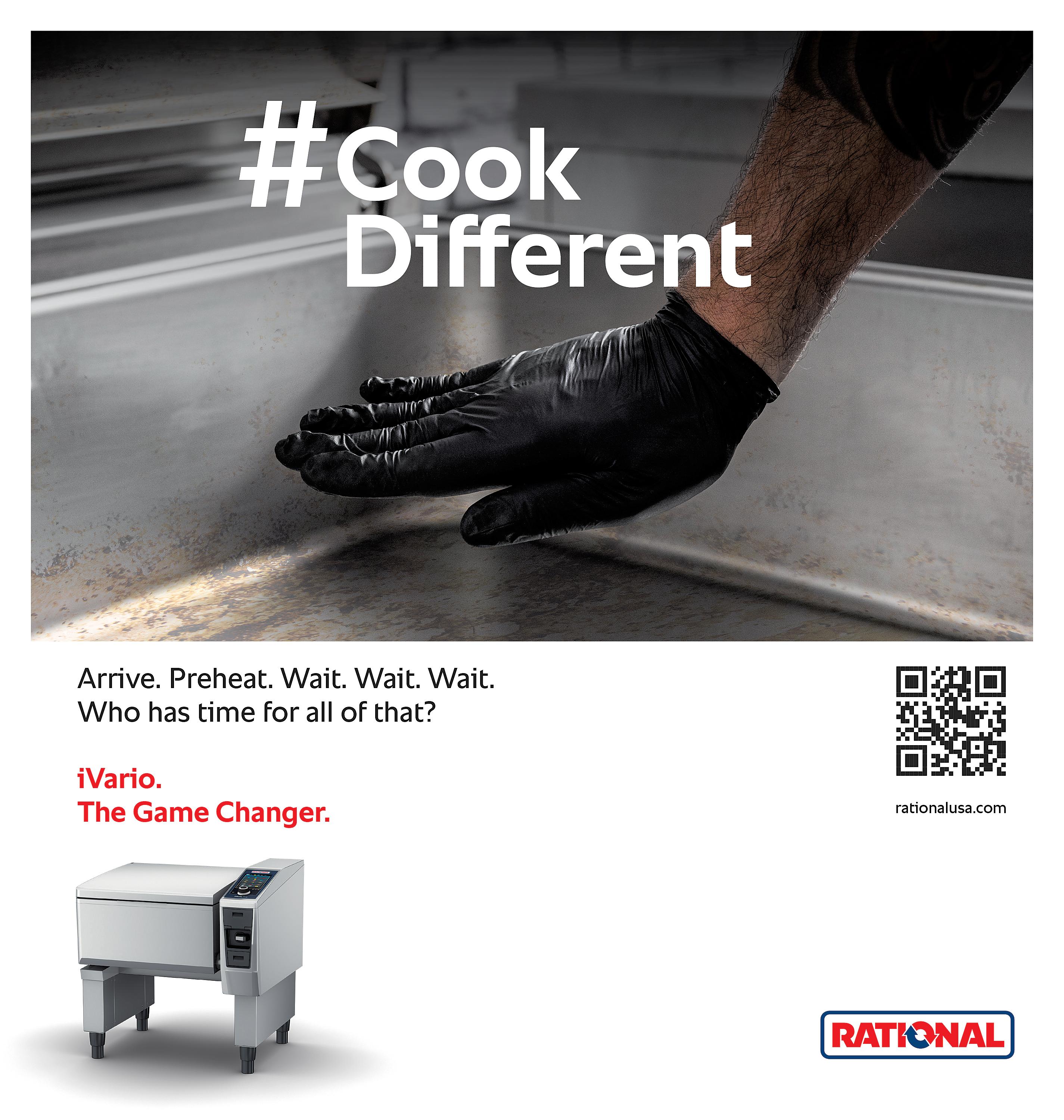
In the face of smaller staffs due to the increase in minimum wage, restaurants and food service operators must find a delicate balance between utilizing technology and maintaining hands-on customer service to maximize efficiency and continually develop creative new menus. At the same time, the vendor community led by nation’s food distributors need to find that same blend of high touch and high tech to adapt to the changing needs of their customer base.
Visionary food distributors in 2024 understand that their customers are seeking new ways to reduce labor costs and increase productivity, allowing staff to focus on delivering exceptional customer service. Those distributors also understand that a blend of personal touch to maximize the value of on-site visits with customers and technology are the key to a successful relationship. One in which distributors can offer valuable insights and culinary knowledge, helping establishments stay ahead of trends and continuously innovate their offerings.
The Chefs’ Warehouse has found that niche by blending both touch and tech to provide greater attention to detail and to customers’ needs. From specialty items to education for food service professionals, Chefs’ Warehouse has managed to expand nationally while still remaining customer centered.
“At the end of the day, the needs of today’s chef are very different than they were before the pandemic,” said Ari Pappas, Head of Product at Chef’s Warehouse. “The touch and feel and personality of our products is very important. We aren’t a one-size-fits-all company.” Rather than just building a product catalog, he said, they want to
“Chefs don’t have time. If they’re giving us that time by getting on our website, we want to make sure that what they’re seeing is relevant to them.” — Ari Pappas
resonate with customers. To do this, Pappas has lead Chefs’ Warehouse tech initiative to create an ecommerce platform that merges local influence with the regions they serve and the work of their field sales force.
Chef’s Warehouse’s primary focus has always been on serving its customers. “We have created an on-line platform that beautifully supplements the different ways that our customers like to shop,” Pappas added. “We understand that there are certain products that customers prefer to see and touch in person before purchasing, and we provide that for them. Our online component then enables that chef to selfserve. In many cases customers love simple access to products; they know what they want.”
Becoming close with the customer
and understanding their needs remains the focus of the Chefs’ Warehouse sales team. “So much of a restaurant’s inefficiency is missing things that you need,” Pappas said. “We have to know the customer better than they know themselves. We should be able to tell them, ‘Hey, it’s time to order mozzarella because you’re going to be out soon.’” This focus on providing an experience to the customer, rather than just a product, is what has allowed Chefs’ Warehouse to expand as well as it has.
Pappas and his e-comm team understand that their goal is to create a shopping experience that facilitates a chef to willingly adapt to changing technology. Providing a positive experience for the customer means offering them personalized recommendations
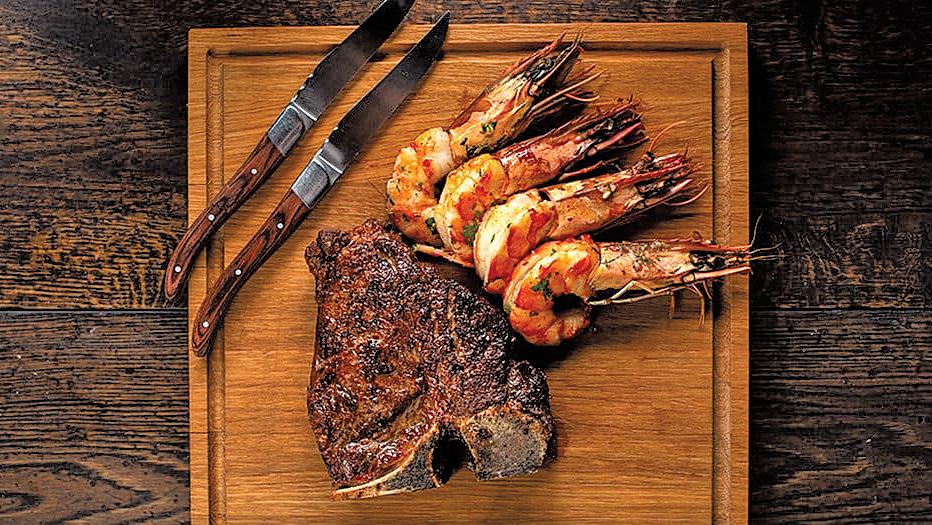
and content, and making sure that what they see is relevant to them. This means maximizing their attention. “Chefs don’t have time. If they’re giving us that time by getting on our website, we want to make sure that what they’re seeing is relevant to them.”
A huge part of this is making sure that information is accessible, as well as being transparent and actively sharing information. They aren’t shying away from evolving their technology, either. Pappas admitted that using AI will be a huge help in getting rid of menial tasks that slow down service, but it’s still necessary to keep the personal aspect to the business. This means salespeople who continue to visit in person and get to know a customer’s team, to build long-lasting relationships with customers, and providing product education.
Looking to the future, Chefs’ Warehouse is continuing to innovate, providing better exposure to products, offering more product education, and providing inspiration along with the products that people are explicitly looking for. Pappas notes that they want to make sure customers are using their technology to make their own businesses better. “I hope to get to a point where we’re not only able to be an ordering or distributing platform for them, but we’re also able to use this platform as a community, to leverage that network of great chefs to bring them together and provide them with information. We’re investing in technology that they may not have access to. It’s about being a successful partner and being aware of their pain points.”
To learn more and get in contact with Chef’s Warehouse, visit chefswarehouse.com


Many consider extra-virgin olive oil (EVOO), as the beall and end-all for the success of a professional chef’s menu. If used efficiently, a good quality EVOO can in fact, enhance flavors and adding depth to a dish that wouldn’t exist otherwise. In addition, with the rise of the Mediterranean diet, too, many modern consumers are more inclined to choose it due to its health benefits.
However, the reality is that if used excessively, EVOO can overpower a dish. It has a low smoke point, which means all of its health benefits disappear once it burns. At an extremely high price point — and in a market surrounded by scammers trying to pass fake products off as EVOO — it doesn’t always make sense for a restaurant to invest in such an expensive and limited product, especially if it’s not authentic.
Manhattan restaurateur Joe Calcagno just knew there had to be a better way. He was committed to finding consistency with his menus but utilizing EVOO simply didn’t make sense or cents.
“You want to serve the best possible product, but you don’t have the price point on that entrée or pizza to use 100% EVOO,” said Joe Calcagno, owner of the New Jersey-based Edesia Oil Company. “Your options are very limited and you’re vulnerable to scams. We wanted to do something that was transparent.”
With the help of his sons, Calcagno decided to take the taste and benefits of EVOO, and the efficiency of vegetable oil, and combine them to create a solution: BelEvo. “We created a blend that checked all of the boxes. When you taste it, you believe it is 100% EVOO. We mix them to get to a point where I can give people a product that functions in the kitchen, makes money, and that’s healthy,” Calcagno said. It’s hard to balance all those.
Calcagno, who owns the Manhattan pizza eatery Capizzi, has been in the restaurant business since he was a child. With a long line of restaurateurs in his family, and a strong connection to his Italian heritage, Calcagno opened his first restaurant when he was 19 and has
“We created a blend that checked all of the boxes. When you taste it, you believe it is 100% EVOO.” — Joe Calcagno
owned seven restaurants throughout his career. This gave him a great advantage when he decided to begin working with olive oil back in 2012.
“That advantage was knowing what the pizzeria guy is looking for at the end,” he said. With knowledge about what those in the industry were lacking in terms of oil, Calcagno began his research in Italy, learning how oil is made and becoming a certified olive oil sommelier. He began experimenting out of his restaurant, testing different blends of EVOO and vegetable oil imported from Italy. While experimenting, Calcagno realized that there was no “correct” percentage of the two for his product. “Olive oil is a natural product,” he said. “You can’t just use ‘x’ percent of that oil and ‘x’ percent of that oil. That might not do it.”

With that knowledge, Calcagno and his sons began blending BelEvo by hand — each oil individually, each oil taste-tested and with ensured consistency and quality.
Sometimes it contains 50% EVOO, and other times it might be more, but Calcagno views this as a chef’s approach versus a manufacturer’s approach. They began selling BelEvo to their family in food service, and eventually it caught on.
“There was a need for it,” he said.
“And nobody could believe it was a blend. Everybody thought it was an EVOO.”
BelEvo features a transparent flavor profile, but it still tastes just as good as EVOO, making it incredibly versatile. Restaurants can
serve it with bread for dipping or use it as a base of a salad dressing. Additionally, the presence of vegetable oil gives it a higher smoke point than raw EVOO, making it safer and more efficient for both frying and pan frying. The possibilities of BelEvo are endless, Calcagno continued. “If you had to use just one oil, it would be BelEvo.”
Edesia offers both BelEvo and 100% EVOO in a wide range of quantities, from trailer loads to 3-liter tins to 500 milliliter glass bottles. Restaurants who use BelEvo are also able to keep their private labels if they choose, and Edesia offers custom EVOO blends with different oils, such as soybean, sunflower, or canola.
But the innovation doesn’t end there: the company recently introduced a chefinspired squeeze bottle, another invention designed with the chef in mind. Oil sold in a squeeze bottle saves time that would have been spent filling up old squeeze bottles with a larger can, and it also allows the end user to use every last drop. “There’s no waste at the bottom of an oil can, and the end user can take the bottle it came in and use it again,” said Calcagno.
It would seem as though the possibilities are endless at Edesia, with a product line that offers everything from affordability to sustainability and versatility. At the core of each of them, though, is quality. “Our oils are a healthier choice,” said Calcagno. “That’s just the nature of our game.”
For more information about BelEvo or other products from Edesia Oil Company, visit their website at edesiaoil.com.
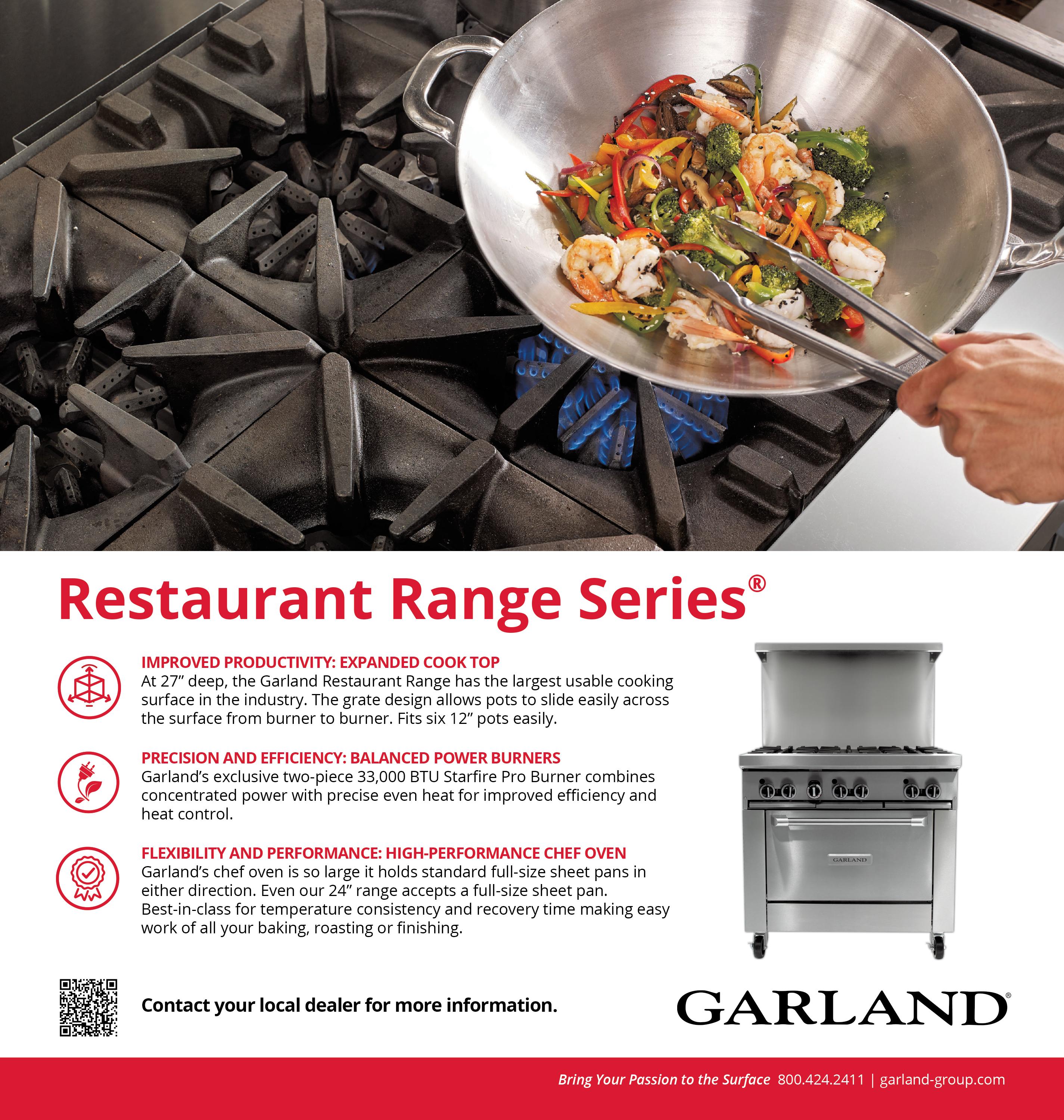
Ever wonder why guacamole, a traditional Mexican condiment, is so popular in the United States, where avocados are not native? Julio Garcia, Business Development & Marketing Director at tropical produce distributor Produce Experience, has the answers to every exotic question in his upcoming podcast series. Follow along as he shares his insights about organic certification, tropical produce use, and the fascinating history of the decisions shaping the contemporary American diet.
Buying organic, for both restaurants and individual consumers, has become the new norm when grocery shopping or sourcing menu items: “When Eleven Madison Park does strictly vegan and organic and maintained its three-Michelin-star status, it’s a huge risk but it sets a trend and precedent in the industry,” Garcia observed. Even aside from the prestigious New York restaurant’s move to an all-organic menu, dietary trends that promote plant-based eating have been significant drivers of upticks in organic eating. Garcia has noted significant increases in demand for organic produce from distributors like Baldor, and supermarket chains like Stew Leonard’s.
The process behind certifying produce items as being organic, Garcia explains, is complex and multi-faceted, and especially following the USDA’s recent guidelines update, can be tricky for distributors to navigate. “I can sell organic,” he explained, “so long as I have a designated location that I don’t mess with.” Cer-
tification also varies between companies and operations: “Our certification lets us handle produce as much as we need to, and we’re able to clear or break down boxes;” other companies, he added, have to dump product that arrives in damaged containers, because their certification is less extensive. Maintaining a certified-organic operation also requires the highest level of care and cleanliness, and many companies must forgo using conventional methods: “We have to have a separate organic garbage bin, we can’t use detergents that contain pesticides – everything is organic, and we don’t want to mess with the certification,” noted Garcia. Preventing contamination of organic products with conventional, unapproved materials is difficult, but necessary.
When it comes to tropical produce, the Bronx, NY based Marketing Director noted that Produce Experience supplies organic variants of the most common, high-demand items like avocados, bananas, mangoes, and pineapples. Interestingly, some of the fruit sold by the company, such as their plantains or Dominican and Haitian mangoes, is grown organically but sold conventionally. Since they’re not certified as organic, USDA guidelines mandate that the fruit be marketed and sold as conventional, or non-organic, despite their being such: “We’re working on getting our shippers certified so we can introduce more of the product into the market,” Garcia noted, citing high demand as a driving factor.

As demand for organic and tropical pro-
“People want hotter, and they want hot that has complexity and flavor. At the same time, they’re looking for all these niche tropical items like dragonfruit, passion fruit, lychee, and even rambutan.” — Julio Garcia
duce grows, as does frequency with which they appear on menus across the tri-state area. A sandwich shop named Sanguiche, for example, swaps bread for plantains on half of their Cuban sandwiches. Peppers and spice have also established a significant foothold in the marketplace. “We weren’t a spicy country before, but we’re venturing into the spicy pepper market,” Garcia explained about the American palette. “People want hotter, and they want hot that has complexity and flavor. At the same time, they’re looking for all these niche tropical items like dragonfruit, passion fruit, lychee, and even rambutan.”
As the American diet widens its horizons, exotic fruit companies like Produce Experience thrive. Suddenly, unlike ever before, demand for previously-unknown fruits, like mamey, jackfruit, or acerola, which grow in locations across the globe, is soaring. “People are done with meatloaf and macaroni and cheese,” Garcia remarked, “They want something different, something new.” Take epazote, a pungent Mexican herb with notes of citrus, oregano, and mint that you’ve probably never heard of: “It’s starting to be used in soups and stews now, and we’ve gone from shipping ten pounds a week to two hundred,” Garcia stated.
That being said, the history of produce that we may consider ‘conventional’ in our diets, such as carrots and spinach, is equally as intriguing as that of the new fruits flooding the hungry market.
“There’s always a reason why you’ve got an 80 year-old grandmother snacking on guacamole in the middle of Iowa,” quipped Garcia. The explanation? Lobbyists in the ‘90s, promoting the health benefits of the green fruit, placed an ad during the Super Bowl broadcast, and avocados became a sensation. The same can be said for carrots, inquired Garcia: “Think of Bugs Bunny – rabbits don’t actually eat carrots!” When the U.S. needed another crop citing overconsumption of less-nutritious potatoes, lobbyists, once again, got creative. “I hated spinach, but I ate it because I wanted to be strong like Popeye,” Garcia laughed, reminiscing on cans of spinach decorated with images of the cartoon character used to drive up vegetable consumption. “I think that’s something that people will be really interested in: why we’re eating what we’re eating,” the exec said of his podcast’s focus on diet history.
With his extensive knowledge of the exotic produce industry and passion for dietary history and politics, it’s clear that Julio Garcia’s upcoming podcast will be an engaging hit. With insights about the difficulties of organic certification, the trends in the tropical market – from hot peppers to exotic fruits, and the mechanisms driving our shopping and consumption, the exec’s knowledge is fascinating and practical.
For more information regarding Produce Experience and its tropical offerings and info on the upcoming podcast series, visit www.produceexperience.com.
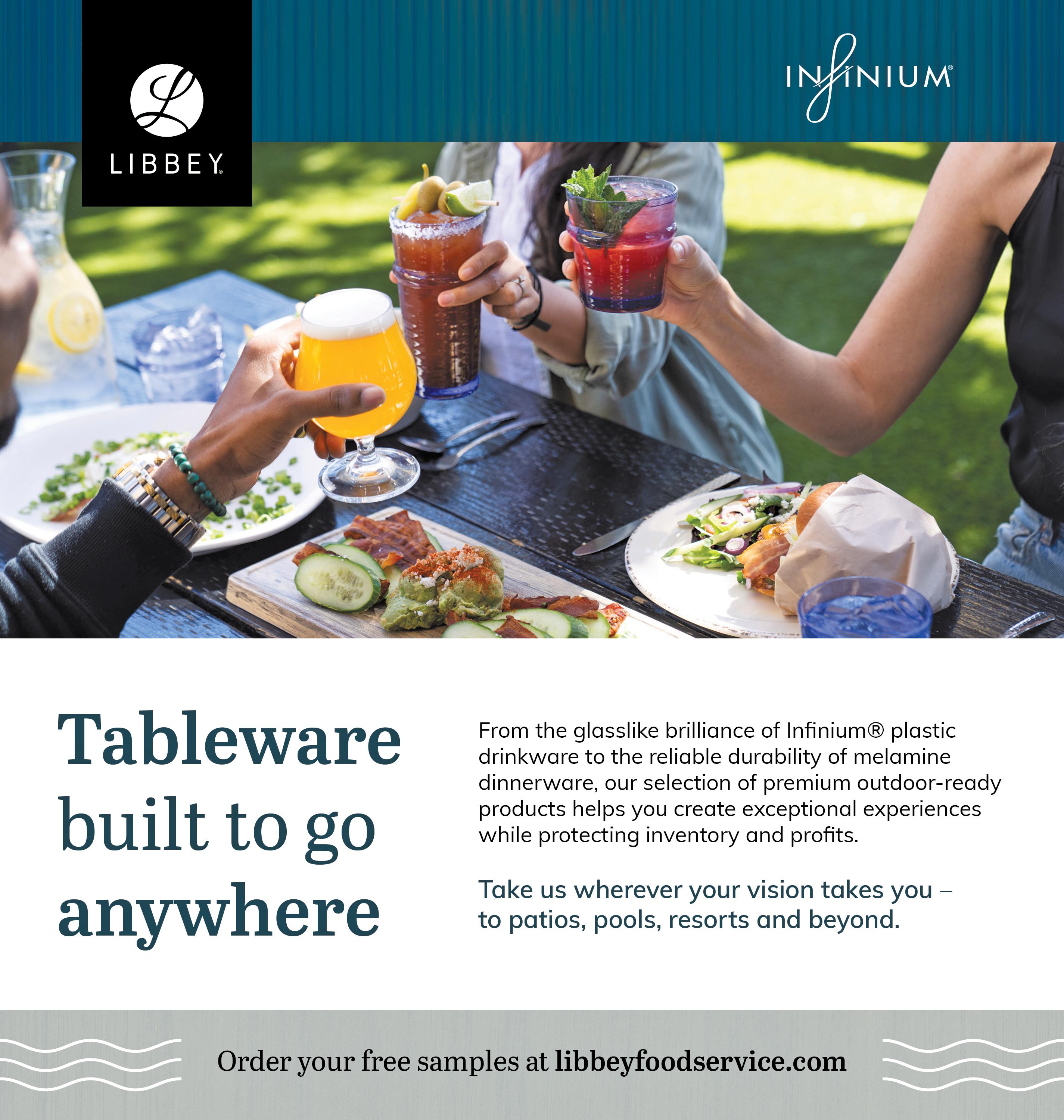
Iwant to draw your attention to a pressing issue that affects the safety of pedestrians and motorists on our streets and sidewalks. The rise of e-bikes as the preferred means of food delivery has introduced serious safety concerns that cannot be ignored. Inevitably, pedestrians and motorists will have to compete for our streets, bike lanes, and even sidewalks. This seismic change is creating
serious safety issues.
With all the discussion about the battery issues, I think we need to take a step back. One of the main problems with e-bikes is the lack of experience among the riders. These individuals are often inexperienced and unaware of the rules of the road. Riding at speeds of 18 mph or faster, they pose a significant danger to both pedestrians and themselves. It is not uncommon

for e-bike riders to disregard traffic signals and even ride on sidewalks, putting innocent lives at risk.
What troubles me is that often ebike riders disregard traffic signals and even ride on sidewalks in their haste to earn a living. As restaurant owners, it’s clearly time to incentivize safe riding.
Moreover, the issue of battery safety cannot be overlooked. E-bikes have been known to burst into flames, resulting in tragic accidents and loss of life. Despite these risks, e-bike riders are not required to have a license, even though their vehicles can be considered deadly weapons. This lack of regulation is alarming, and it is imperative that we take action.
We are calling for regulations in which manufacturers of the E-Bikes need to adhere to weight, horsepower and speed specifications. No different than what is required for cars, motorcycles and boats. If not, technology will continue to produce a new generation of even more dangerous E-Bikes.
The city of NYC has taken some initial steps by providing safe charging stations and rest areas for bike delivery providers. The initial efforts enlisting the use of vacant newspaper stands, is far short of what government can do. We need to hold these riders accountable for their actions by implementing licensing, registration, and inspection requirements, just like we do for drivers. At the same time, let’s set them up to succeed with proper rest areas to recharge not only the bike’s battery but their body as well. These measures will undoubtedly make our streets safer for everyone.
Finding a solution to this problem is still a topic of debate. However, one thing is clear - we need legislation from local authorities, state licensing

Sandy Plotkin is the President and CEO of CarryHot USA. He has built the Manhattan company into the world’s leading manufacturer of insulated food delivery bags. He built a highly successful career in the garment industry, when a cold pizza would change his life. Plotkin saw the opportunity to save the world from cold pizza and soggy fries and with that CarryHot USA was born. The company’s bags are the industry standard for many of the nation’s leading pizza and quick serve chains. They have also become a staple in school systems across the country. He authored “Delivery Master USA™” in 1997. It remains the industry standard for operators seeking to create or update their delivery strategy. He can be contacted via email at sandy@carryhot.com
agencies, and ultimately federal laws from organizations like OSHA and FDA. We cannot afford to take shortcuts or rely on silver bullets. It is essential that we address this issue with comprehensive measures that prioritize the safety of our communities.
The road ahead may have its challenges and detours, but we must remain determined. Just like we have licensed and insured delivery providers for other vehicles, we need to ensure the same for e-bike riders. The question of when this will happen remains uncertain, but what matters is that we take action sooner rather than later.
Let us come together and demand the necessary changes to protect ourselves and our loved ones. Safety should be our top priority, and it is up to us to make a difference. From my view there are no silver bullets or short cuts. The road will have its share of obstacles and detours. Our delivery industry is bigger and more profitable than ever. We need licensed and insured delivery providers. Let’s call on our local trade associations and City Councils to make safe EBikes a priority.
Happy to discuss how we can make this happen. Any questions, we are here to help and talk: sandy@carryhot.com
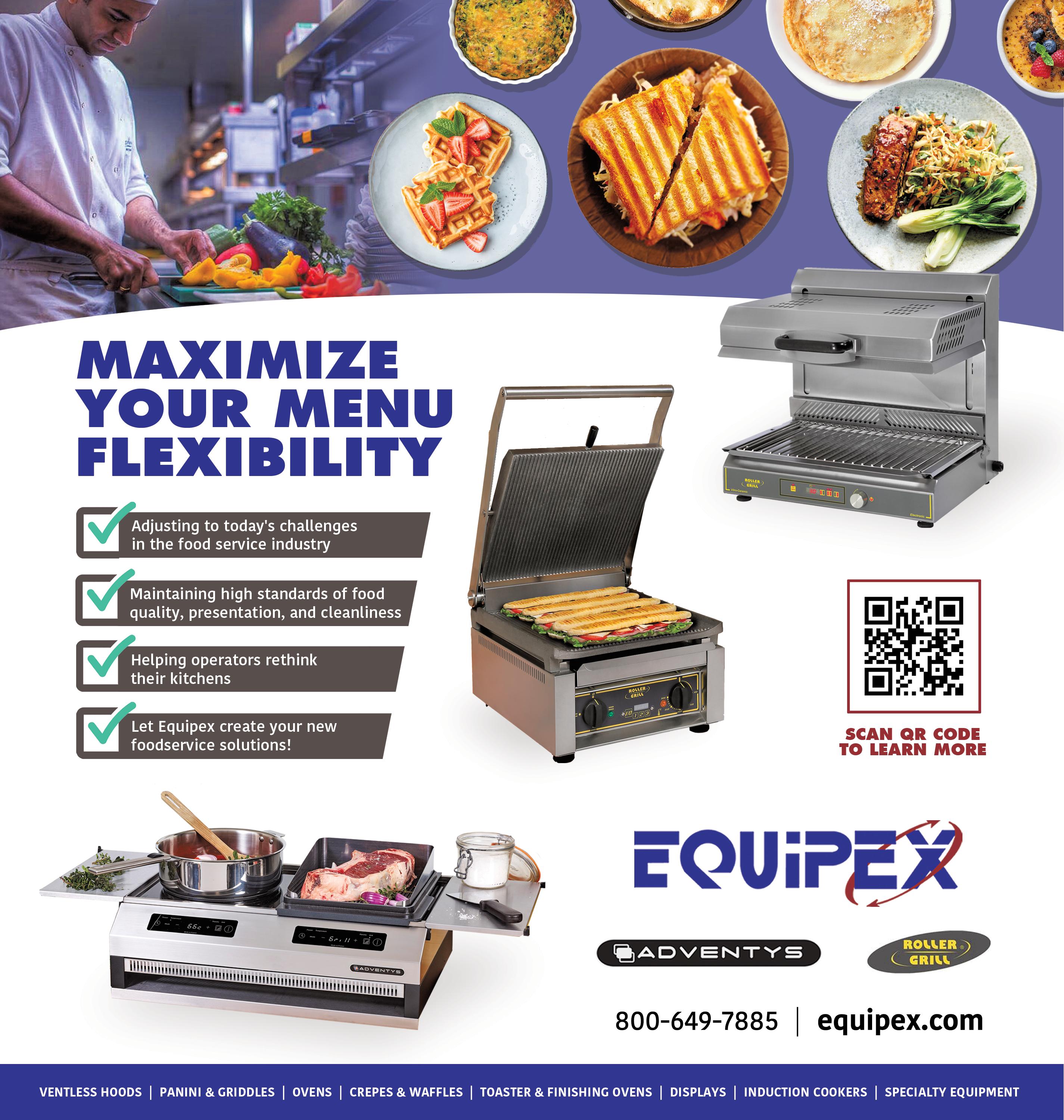
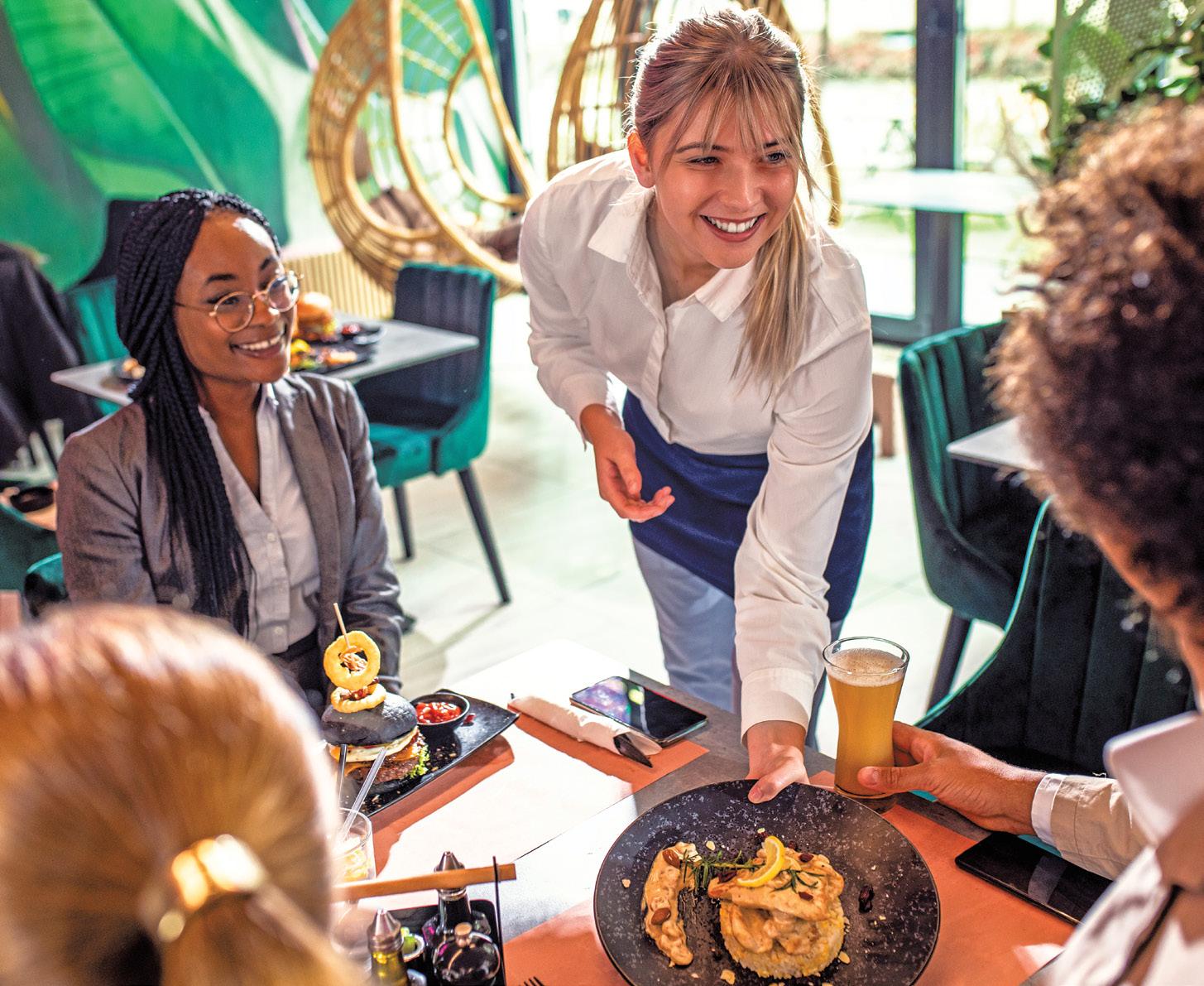
Alot has changed for restaurants over the last few years, including both how operators run their businesses and what customers expect when they dine out. The pandemic set in motion unprecedented staffing challenges and created a greater need for automation and technology in restaurants. And while some of these lockdown-era changes are here to stay, new habits and expectations are also emerging.
To find out what trends will define the year ahead, TouchBistro recently surveyed more than 600 restaurant owners and operators for its 2024 State of Restaurants Report. The annual report reveals just how much changed in the past year, how restaurants are adapting to an uncertain economic situation, and the top trends restaurateurs need to watch in 2024.
Embrace these current restaurant trends to stay ahead of your competitors and keep up with guest expectations in 2024:
• Automation and AI
• Comprehensive guest engagement
• Menu innovations
• Prioritizing staff retention
• Future-proof POS systems
An example of automation is inventory management software, which can now be done from mobile devices such as iPads.
In 2024, automation and artificial intelligence (AI) will be critical to running a modern restaurant. The majority of restaurants are already using automation to make day-to-day operations more efficient, and this will only continue in the year ahead.

However, leaning into automation doesn’t have to mean completely overhauling operations. Instead of robot servers, start with software that takes over important but tedious tasks in your business, like staff scheduling or order taking. You’ll be in good company, as 65% of restaurant operators have already automated inventory management and 70% have automated payroll, according to the State of Restaurants Report (SORR).
AI will also become mainstream in the restaurant industry in the new year. TouchBistro’s data shows that 89% of restaurateurs already use some form of AI in their business. An easy way to experiment with AI is adding a chat bot to your website or leveraging AI tools built-into the software you already use, like DoorDash’s new AI-voice ordering solution. You could even leverage ChatGPT to help write email marketing copy or social media posts.
Recent restaurant industry statistics reveal that there are nearly 750,000 restaurants in the U.S. alone. With so much competition, it takes more than word-of-mouth marketing to stand out. In 2024, operators will need to take an omni-channel approach to guest engagement to ensure they’re top of mind from the moment customers discover your restaurant (which often begins online) until well after their meals.
Many restaurants are already taking a 360-degree approach to guest engagement. In fact, 72% of food-service venues have a website, the majority maintain an active social media presence, and 67% offer loyalty programs, according to the SORR. Future-proof your restaurant and increase discover-
continued on page 126



Effective March 12, 2024, it will be unlawful for New York State employers to request, require or coerce any employee or applicant for employment to disclose any username, password, or other means for accessing a personal account through specified electronic communications devices. All employers will need to ensure that supervisors and managers are made aware of this legal development and that policies are updated to comply with this amendment to the New York labor law.
The amended law will specifically prohibit employers from asking applicants or employees to: 1) disclose any username, password, or other authentication (login) information for accessing a personal account through an electronic communication device; (2) access their personal account in the presence of the employer; or (3) reproduce in any manner photographs, videos, or other information contained within a personal account. A “Personal Account” means an account or profile on an electronic medium where users may create, share, and view user-generated content, including uploading or downloading videos or still photographs, blogs, video blogs, podcasts, instant messages, or an internet website profile or location that is used by an employee or an applicant exclusively for personal purposes.
The law does contain cer-
tain carveouts. First, it does not apply to “nonpersonal accounts” that provide access to employers’ internal computer or information systems. Second, it permits employers to access employee’s personal accounts under limited circumstances. Specifically, employers are permitted to request or require an employee do any of the following:
• To disclose access information to an account provided by the employer where such account is used for business purposes and the employee was provided prior notice of the employer’s right to request or require such access information;
• To disclose access information to an account, “known to an employer to be used for business purposes”;
• Provide access to an electronic communications device paid for in whole or in part by the employer where the provision of or payment for such device was
conditioned on the employer’s right to access such device and the employee was provided prior notice of and explicitly agreed to such conditions (but this still does not permit access to personal accounts on such device).
A key consideration for these exceptions is providing prior notice to the employee of the employer’s right to request or require access. Best practice is for such notice to be in writing and acknowledged by the employee.
The law provides an exception in the context of investigating or obtaining reports of misconduct where an employee or client voluntarily shares photographs, video, messages, or other information that the employee subject to such report or investigation has voluntarily given access to contained within such employee’s personal account. As would be expected, the law does permit employers to access a personal account if such access is required to comply with a court order. Finally, it is an affirmative defense to any action under this law that an employer acted to comply with requirements of a federal, state or local law. Additionally, employers may still restrict employees from accessing certain websites while using an employer’s network or while using a device paid for by the employer.

Employers may not discharge, discipline, or otherwise penalize an employee or applicant because of their refusal to disclose or provide access

Jennifer M. Schmalz is a Partner at Ellenoff Grossman & Schole LLP in New York City in the in the Labor & Employment practice group. She counsels employers in all facets of labor, employment and employee benefits law, with broad experience in preventing and resolving workplace disputes, compliance with the variety of laws governing the workplace, and the labor and employment aspects of mergers and acquisitions and other corporate transactions. Ms. Schmalz has successfully litigated matters involving employment discrimination, Title III of the ADA, wrongful termination, violations of restrictive covenants, breach of contract and wage and hour violations. She works with clients in a wide variety of industries including hospitality, real estate, transportation, retail, financial services, health care, manufacturing, technology and not-for-profit corporations. Jennifer M. Schmalz can be reached at jschmalz@egsllp.com or via phone at 212-370-1300.
to personal account information. New York employers should consult with their labor and employment counsel to update policies and notices to employees related to monitoring of electronic communication systems, accounts and devices in the workplace, to ensure their practices are in compliance on or before the effective date.


Utilizing recyclable PET products is crucial for restaurant and food service operators in aligning with their green and sustainable agenda. PET is an acronym for polyethylene terephthalate, a type of plastic made from recycled plastic. By choosing properly produced recyclable packaging items, operators demonstrate their commitment to reducing waste and minimizing their environmental impact.
This not only resonates with environmentally conscious customers but also sets a positive example for the communities they serve. Additionally, using recyclable PET products can help restaurants and food service operators save costs in the long run by reducing waste disposal fees and potentially attracting more environmentally conscious customers.
CT based Inline Plastics set a goal in 2020 to provide the restaurant and food-

service professional those packaging solutions. To accomplish that mission, Inline Plastics launched their reborn PET material which utilizes post-consumer content made from the latest recycling technology, Advanced Recycling. Currently, all their PET products contain 10% reborn post-consumer material.
With sustainability awareness on the rise and a whirlwind of unsubstantiated claims in the industry, Inline believes it is important to have this claim verified by an independent source. SCS Global Services (SCS), a global leader in sustainability standards and third-party verifications, recently certified the company’s claim that all their PET products are ‘Made with 10% Post-Consumer Recycled PET’.
“We believe that integrity and transparency are an important part of doing business and this is why we retained SCS Global Services, to certify our post-consumer recycled material claim,” noted
“The lack of standardized definitions and criteria for terms like “sustainable”, “recyclable”, and “compostable” are often confusing to consumers making it difficult to discern which products are genuinely environmentally friendly, leading to skepticism, undermining trust in sustainability initiatives.” — Carrie Cline
Tom Orkisz, Chairman and CEO of Inline Plastics.
To achieve certification, SCS conducts an independent third-party audit of the organization and the product(s) with recycled content. The audit checks for manufacturing data, processes, chain of custody procedures, material quantification and mass-balance calculations to determine conformance to the SCS Recycled Content Standard*. “By releasing all of our data for an objective and impartial analysis, customers can be confident and trust that we’re a brand who delivers on our claims,” Orkisz concluded.


SCS Global Services (SCS), has been providing global leadership in third-party quality, environmental and sustainability verification, certification, auditing, testing, and standards development for three decades. Its programs span a cross-section of industries, recognizing achievements in green building, product manufacturing, food and agriculture, forestry, power generation, retail, and more. Consistent with its mission, SCS is a chartered benefit corporation, reflecting its commitment to socially and environmentally responsible business practices.
As part of this certification, Inline Plastic’s Essentials® and Safe-T-Fresh® product lines are now included in the SCS Green Products Guide, an online directory for SCS certified green products.
“Achieving this certification means that Inline Plastics is verifiably creating products that incorporate recycled material, which reduces waste to landfills and allows consumers more product choices that are environmentally responsible,” said Nicole Munoz, VP of Environmental Certification Services at
continued on page 136



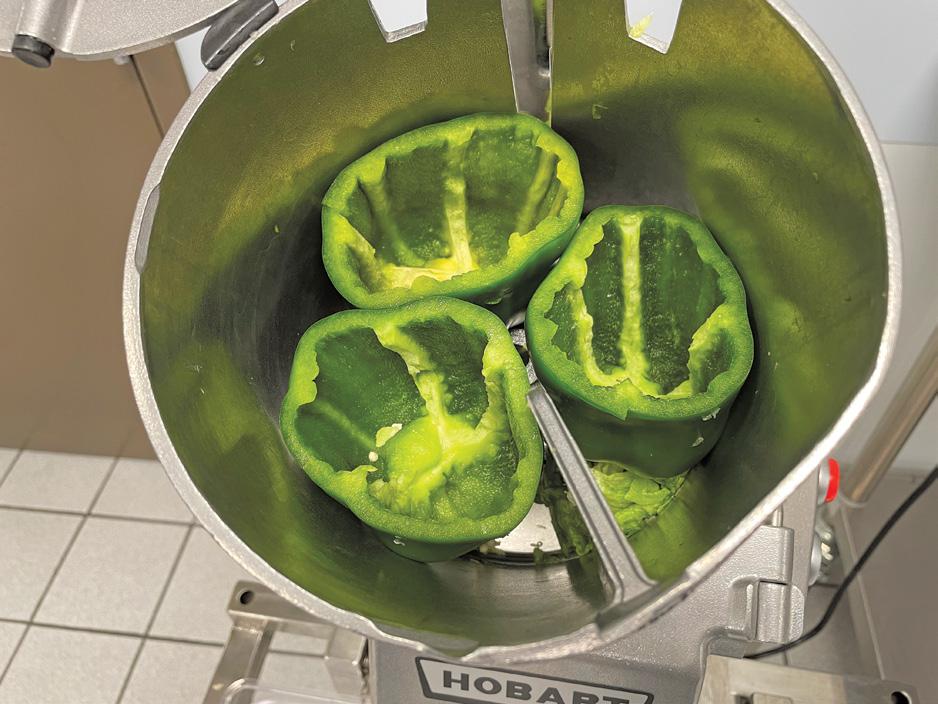
As restaurants continue to be challenged by labor shortages, finding ways to gain efficiency in the kitchen is increasingly important. Having the right equipment can help. A continuous-feed food processor can be invaluable for minimizing prep time — in most cases, reducing it by half compared to manually cutting fruits and vegetables or grating cheeses. These machines offer the versatility to slice, dice, shred, crimp and more. To get consistency and quality, however, it is necessary that employees know how to operate the food processor correctly and avoid common mistakes.
The way the operator loads a commercial food processor is the most important part of the process. Loading the machine incorrectly can reduce productivity and can result in inferior quality and inconsistent cuts.
When loading the food processor, follow the inner wall of the hopper. Stack ingredients vertically against the inner wall, moving counterclockwise until the hopper is full. Cut the tips and tails off
produce and fill the hopper completely to create consistent cuts. Leaving excess room in the hopper can cause products to move around, tip on their side or tilt, which can create an inconsistent cut.
Using the wrong size machine
Having a continuous-feed food processor that meets the volume of product a kitchen needs prepped is key. If a kitchen has a commercial food processor, but finds that staff repeatedly need to load batches, a larger model may be the better choice. There are several continuous-feed models (countertop and floor) available in the marketplace, all with varying capacity. Some provide throughput as small as 11 pounds a minute with options ranging up to 132 pounds a minute, and several capacities in between. There are also options for food processors with a half hopper or a full-size hopper. A food processor with a half hopper requires more prep and can hold less product at a time. A full hopper can hold larger products, like whole heads of lettuce or cabbage, and can handle more volume.
Skipping out on prep
The way chefs and their staff prep products determines the outcome. While it may be tempting to try to let the food processor do all the work, poorly prepared fruits and vegetables can result in poorly processed items. Some tips to consider are cutting just the tops off peppers and adding them to the hopper whole. This creates pepper rings. Cutting the peppers into panels makes strips of peppers that are perfect for fajita veggies. Kitchens should experiment with different prep methods to find what works best for the menu items.
How a product is prepped also affects how much can fit into the hopper at once. Whole peppers take up more space than peppers cut in panels. To maximize space and efficiency, it may be worth taking a little bit of extra time prepping products.
If processing ingredients yields a too large or too small of cuts or an undesired style for a given recipe, it is time to choose a different cutting tool. There are several types and sizes of cutting tools available. A slicer is good for both firm and soft products, such as onions, root
vegetables, tomatoes and mushrooms, and can also be used to shred cabbage and lettuce. Combined with a properly sized dicing grid, it can also dice. For example, if the desired cut of potato is a 3/8-inch cube, use a 3/8-inch dicing grid and a 3/8-inch slicing tool.
Tools are also available for crimping to make rippled cucumbers and carrots and for julienne cutting, which are perfect for processing potatoes for French fries. Grating tools grate carrots and cabbage but are also useful for hard cheeses. Refer to a cutting tool chart to decide what tool is best for the recipe at hand.
When processing large amounts of produce at a time or bulkier product like cheese, it can be tempting to apply more pressure on the handle. Most of the time, however, excess pressure can lead to a poor-quality cut or worse, damage to the food processor and the expense of a service call.
Many continuous-feed food processors are gravity-fed. That means gravity and the weight of the handle itself will
continued on page 118

The National Restaurant Association Restaurant, HotelMotel Show®, the epicenter of foodservice innovation and a showcase of emerging industry trends, is pleased to announce the 25 recipients of the 2024 Kitchen Innovations (KI) Awards. Since 2005, the KI Awards program has been renowned for its role
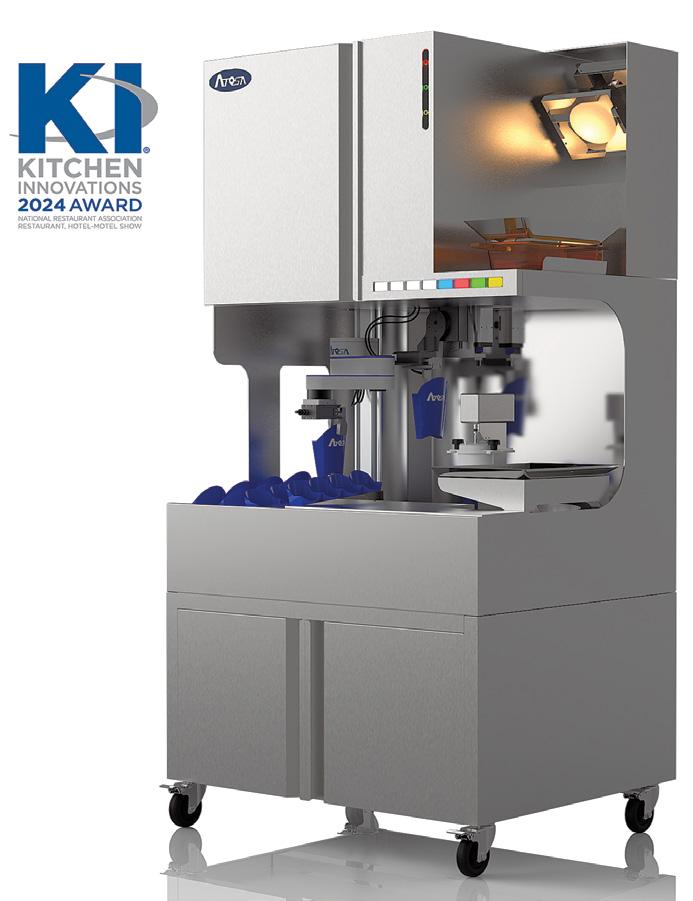
This new Robotic Auto Seasoning and Auto Packaging Station from Atosa USA, Inc. replaces a standard dump station and includes a dumping port for French fries, as well as optional additional storage for up to two other items. The kitchen staff or robotic arm dumps the fries, then robotics seasons the fries according to programmed salt weights, portions the fries by size (L/M/S/K) of carton according to orders, and delivers the filled French fry cartons to the pickup area, ensuring first in, first out.
in defining the gold standard of foodservice equipment innovations. These 25 KI Awards recipients reflect the current priorities of foodservice operators, showcasing advancements in automation, efficiency, safety enhancements and sustainability. This year’s recipients will be showcased at the 2024 National Restaurant Association Show, taking place

Automated combi cleaning systems can be overcomplicated. Staff may not clean equipment often or properly; they could use too much or not enough cleaning chemicals, risking equipment damage. Tab doses may not be optimal for the cleaning required. RATIONAL’s new system, automatic or fully automated, uses solid cleaner and solid de-liming cartridges that are recyclable and housed within the combi itself. The software determines exact dosages as conditions warrant.
May 18–21, 2024, at McCormick Place in Chicago.
Tom Cindric, President of the National Restaurant Association Show, remarked, “The KI Awards have been instrumental in defining excellence and driving innovation within the foodservice industry for two decades. The evolving landscape of technology—including developments
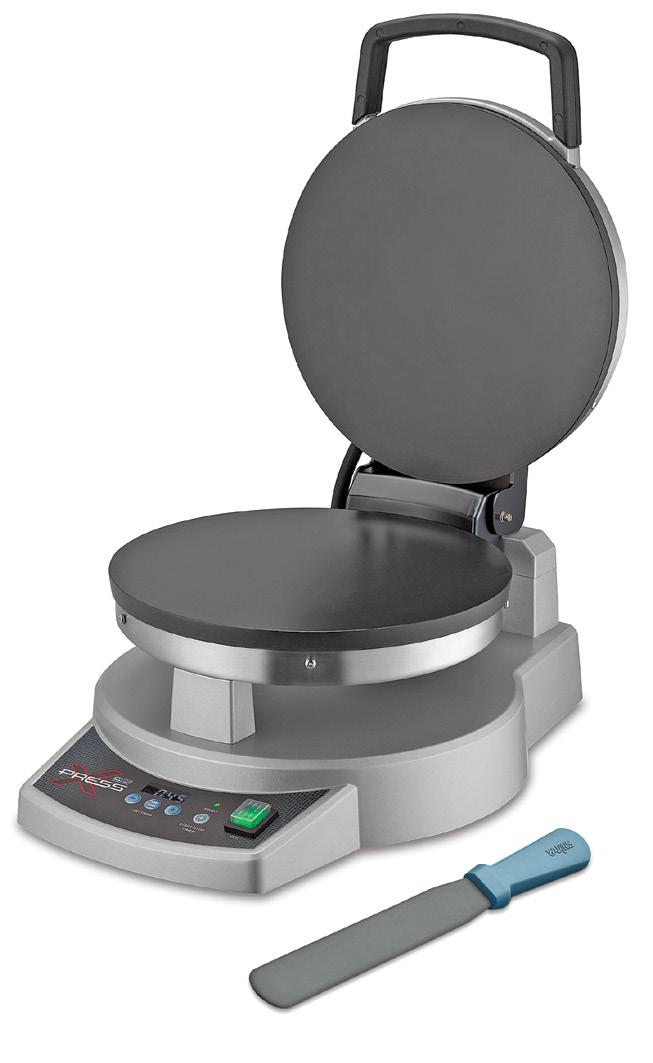
Crêpe making, simplified and perfected. Want perfectly formed, virtually handsoff crêpes in 30 seconds, start to finish? Waring’s XPress™ Multipurpose Cooktop’s dual-heated, nonstick, 13.5-inch aluminum cooking surfaces evenly cook both sides of the crêpe simultaneously, minimizing prep time and maximizing output. Great for warming/cooking tortillas, quesadillas, omelets, pancakes, pizza dough and more.
in AI, robotic solutions, autonomous ordering and customer service—has elevated the KI Awards to expand beyond back-of-house operations to also recognize innovations that offer labor, waste, and energy savings. As we celebrate this milestone, we are proud to honor the impact of the KI Awards in recognizing groundbreaking solutions that address the ever-evolving needs of foodservice operators.”
The KI Award recipients were selected by an independent panel of judges comprised of industry leaders representing international brands across foodservice, including Aramark, Cracker Barrel, Walt Disney World Resort and the U.S. Air Force. The esteemed panel carefully reviews each nominee and has chosen to recognize these 25 recipients as the year’s most forward-thinking and cutting-edge kitchen and product innovations, which not only elevate foodservice operations but also significantly contribute to industry progress.
Jim Thorpe, Senior Food Service Designer at Aramark and a long-standing KI judge, highlighted the significant role of the KI Awards in shaping industry trends: “The KI Awards have played a pivotal role in shaping the future of our industry. We’ve adapted our own go-tomarket strategies due to the significant impact and influence of these special innovations. Year after year, KI awardees bring forth fresh ideas and new approaches that elevate the foodservice
continued on page 118

Chef Matt Fresinski, a native of upstate New York, was inspired to become a chef at a young age. He spent his childhood fishing with his grandfather, sparking a love for food and the joy of sharing meals with loved ones.
After attending the Culinary Institute of America and gaining experience at various restaurants. His passion for creating delicious dishes shines through in Vida & Estilo portfolio of Las Vegas, NV restaurants. The restaurants’ menus include both indulgent treats and healthier options.
One of the largest privately owned restaurant groups in the state of Florida, Vida & Estilo is a culinary industry pioneer behind recognizable restaurant concepts such as News Café, Havana 1957, Café Americano, PaperFish, Barsecco, Oh! Mexico and Marabu. The company is led by CEO, owner Matias Pesce.
Chef Matt joined the company after stints at the Wynn and Riviera Hotels in Las Vegas. Vida & Estilo Restaurant Group portfolio restaurants across Las Vegas, in The Venetian and Caesar’s Palace hotels.These include Cafe Americano, Mercato della Pescheria and Terraza.
Chef Matt has found a great part-
nership with Chefs Warehouse in Las Vegas to create signature dishes that wow customers. One of the first products that inspired a dish on his menu was the white truffle Shoyu. This led to the creation of a Blackened Tuna and Radish Carpaccio with Wakame Aioli, topped off with the flavorful white truffle Shoyu.
When asked why he chose Chefs’ Warehouse as his foodservice distributor, Chef Matt credits the excellent representation from Sonny Beck. “I appreciate the wide variety of highquality products that Chefs’ Warehouse carries, making it easy to find the ingredients that make our dishes stand out. We always look forward to trying new items brought in by Chefs’ Warehouse and incorporating them into our menus to keep customers coming back for more.”
Chef Matt and Vida & Estilo, a national restaurant and hotel group based in Miami have always been about giving back to the communities they serve. During the pandemic, Chef Matt and his wife worked tirelessly to provide meals for their neighbors in need, embodying the true spirit of a chef’s dedication to feed -
“I appreciate the wide variety of high-quality products that Chefs’ Warehouse carries, making it easy to find the ingredients that make our dishes stand out.”
— Chef Matt Fresinski
ing others. His journey from a young aspiring chef to a successful culinary professional is a testament to his talent and passion for cooking.
Most recently Vida & Estilo, have established two new funds to support student success and educational programming at the Chaplin School of Hospitality & Tourism Management at Florida International University (FIU). The Vida & Estilo Hospitality Program Fund will help create and build out training and programming to elevate the skill level of both executive leadership teams and emerging leaders in the hospitality industry. Complementing this fund, the
Vida & Estilo Student Support Fund will foster student enrichment and experiences that include scholarships, stipends and student programming.
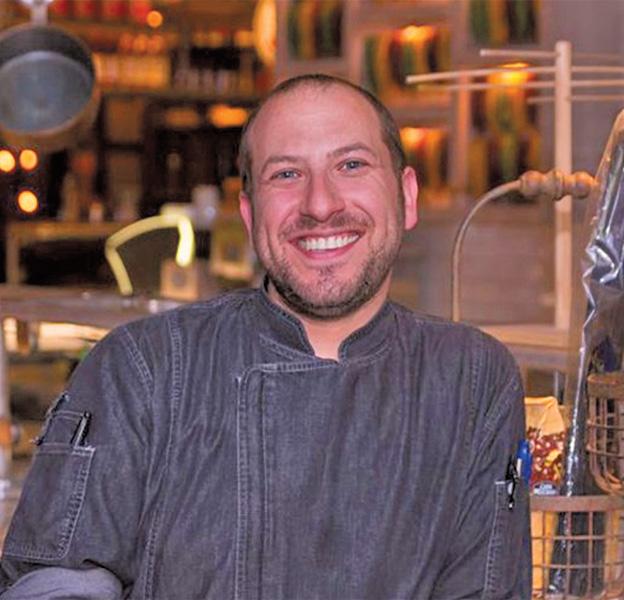
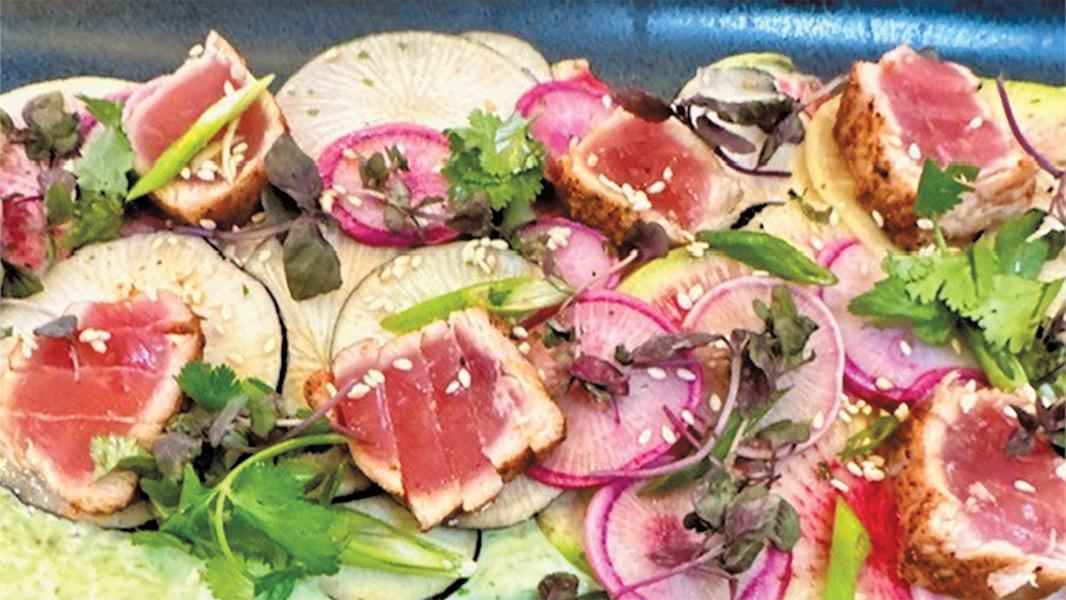


The New York City hospitality industry is facing a potential threat with the proposed elimination of the tip credit for restaurant waiters and bartenders. It’s a complex issue no doubt. Our New York City Hospitality Alliance membership have expressed concerns about the impact this change would have on both restaurant owners and their employees.
The concept of a subminiumum wage is simply a lie. Every restaurant worker in the state of New York is required by law to be paid the full minimum wage. The restaurant industry in New York City is pushing back against the proposed state law that would raise the minimum wage for waiters and bartenders, as it is believed that the increased costs would lead to higher prices for customers and possible layoffs in the industry. Currently, the city has a $16 per hour minimum wage, but subminimum wage restaurant workers who rely on tips make less than $11 per hour.
A poll conducted by NY1 News found that less than 62% of people support a higher base pay for service workers, while under 75% support a higher base pay for servers. The concerns raised by the hospitality industry highlight the potential negative consequences of eliminating the tip credit and the importance of finding a balanced solution that benefits both employees and restaurant owners.
The issue of the tip credit in the restaurant industry is a complex one, with valid arguments on both sides. While some argue for its elim-
Ultimately, the debate over the tip credit in the restaurant industry is not just about wages, but also about the broader issue of tipping itself.
ination in order to ensure fair wages for all workers, others point to the potential negative consequences, such as job losses and higher prices for customers.
In states like New York, where restaurant workers are required to be paid the full minimum wage, tips can often significantly boost their earnings. The reality is that many waiters are currently making $25-$30 per hour with tips included. The fear of losing this additional income is a real concern for many in the
industry. In Washington, DC, where the tip credit was recently eliminated, there have already been reports of 100 plus job losses in the restaurant sector.
It’s important to consider the impact on both workers and businesses before making any changes to the tip credit system. In some cases, attempts to eliminate the tip credit have actually resulted in lower earnings for workers and higher prices for customers. This raises the question of whether the potential bene-

fits of eliminating the tip credit outweigh the potential drawbacks.
Ultimately, the debate over the tip credit in the restaurant industry is not just about wages, but also about the broader issue of tipping itself. Different demographics have different tipping habits, and getting rid of tipping altogether would be a major shift in the industry. It’s important to consider all aspects of the issue before making any changes that could have far-reaching consequences.
The debate over the tip credit in the restaurant industry is a complex one that requires careful consideration of all the potential impacts. While the goal of ensuring fair wages for all workers is an important one, it’s crucial to weigh this against the potential negative consequences, such as job losses and higher prices for customers.

Keep in mind a couple of years ago there were several restaurants that had attempted to stop taking the tip credit. They had to bring it back because their workers were making less money. Customers didn’t like the higher prices. Restaurateurs were asking themselves why am I jumping through hoops like this, hurting my own business, forcing customers to pay higher prices for their meals for some greater good when clearly there doesn’t appear to be a greater good?
Ultimately, finding a balance that works for both workers and businesses is key to addressing this issue effectively.


In 2018, a viral video featuring a turtle with a plastic straw stuck in its nose took the world by storm, prompting outcries against nonbiodegradable products and plastic pollution, and inciting activists to call for outright bans. For Michael Winters, President of food service manufacturing giant WinCup, something clearly needed to be done.
The veteran executive saw the video as a challenge, and it became the inspiration behind phade®, the world’s first polyhydroxyalkanoate (PHAs) disposable and fully biodegradable straw. Today, the phade® straw is a hit with consumers because of its ingenuity and eye-catching blue color.
The process of researching and developing an appropriate plastic alternative proved to be a long, global challenge for Winters and his team: “We literally searched the world and
“We’re making plastic-like products from cooking oil which, once exposed to bacteria, degrades in a matter of months.”
— Michael Winters
met with tons of companies producing these new biopolymers, looking for something that would biodegrade in a matter of months.”
Eventually, the Atlanta, GA based visionary was struck by a company promoting a novel product called polyhydroxyalkanoate, which, because they’ve existed in nature, are broken down very quickly when returned to nature. “We quickly came to an arrangement with the company to become their R&D partner and bring the new substrate to life,” he said.
But developing a new material from
which to manufacture straws is not, by any criteria, an easy feat. Once the PHA material was perfected, Winters had to confront another problem: WinCup’s manufacturing equipment. “The company warned us that the product might not be compatible with our equipment, like extruders and injection-molders, that were designed to function with plastics.”
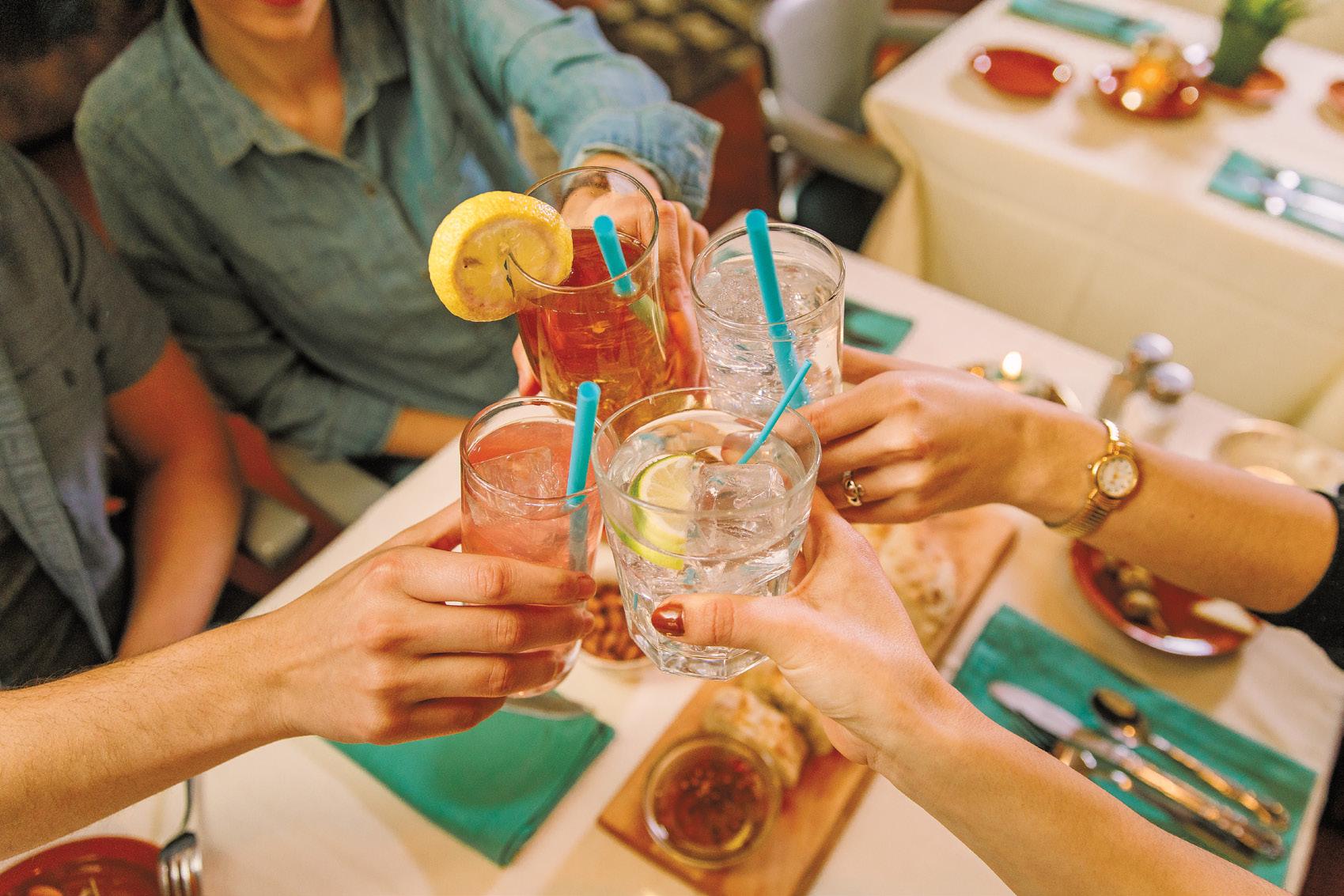
Nevertheless, he pushed forward: “We took that as a challenge - we’ve got a lot of really smart engineers on our team, so I was optimistic.” Winters secured PHA material and sent it to a large WinCup straw-manufacturing plant, where it was run through their machines. He received the report from WinCup CEO Brad Laporte, who was on-site for the testing. “It didn’t turn out too well,” Winters laughed. “We just about burnt down the plant and had to evacuate all of our team members from the building.” If there’s one thing to learn about the WinCup President, however, it’s that he’s a man of determination; sure enough, 28 trials later, the PHAs
product was running through their machines at production speed.
Now, one challenge remained: testing whether the product could biodegrade [in the promised time frame] fast enough. WinCup sent sample straws to Normec Organic Waste Systems in Belgium, a leader in determining biodegradability and compostability of novel materials. Remarkably, after two to three months, Normec confirmed that the phade straw had completely biodegraded in home and industrial compost. In a mind-boggling development, Winters and his WinCup team had succeeded in developing the world’s first marine biodegradable and compostable PHAs straw.
You may be wondering what exactly polyhydroxyalkanoate is. Simply put, its fermented canola oil, the nearly ubiquitous oil used in restaurant fryers to make all kinds of delicious foods. “It’s a total closed-loop idea,” Winters noted. “We’re making plasticlike products from cooking oil which, once exposed to bacteria, is digested in two months.” The product even benefits American farmers. Canola oil is derived from the rapeseed plant, which is typically harvested in late-fall to early-winter. For farmers, this means continued sustenance and profit after the blockbuster corn, wheat, and soybean harvests of the late summer. “Everywhere you turn, this product is a win,” Winters added, himself astonished. “As we kept peeling the onion back, the story just got better and better.”
The phade® straw’s many ecological benefits have drawn massive support from consumers, especially younger generations for whom “environmen -
continued on page 122

Do you have the SCOOP on any foodservice and hospitality news?
Send items to SCOOP Editor Joyce Appelman at tfs@totalfood.com
SCOOP learned that The Hoshizaki Alliance, a group of leading companies in the foodservice industry in the Americas, has announced the strategic partnership with Fogel Company, Inc., a renowned provider of commercial refrigeration solutions. This synergistic move marks a significant milestone in the Hoshizaki Alliance’s expansion efforts, further solidifying its presence in the market.
By partnering with Fogel, the Hoshizaki Alliance will enhance its product offerings and strengthen its foothold in the commercial refrigeration segment. With Fogel’s extensive expertise and innovative solutions in refrigeration technology, the Hoshizaki Alliance is poised to deliver even greater value to its customers across the
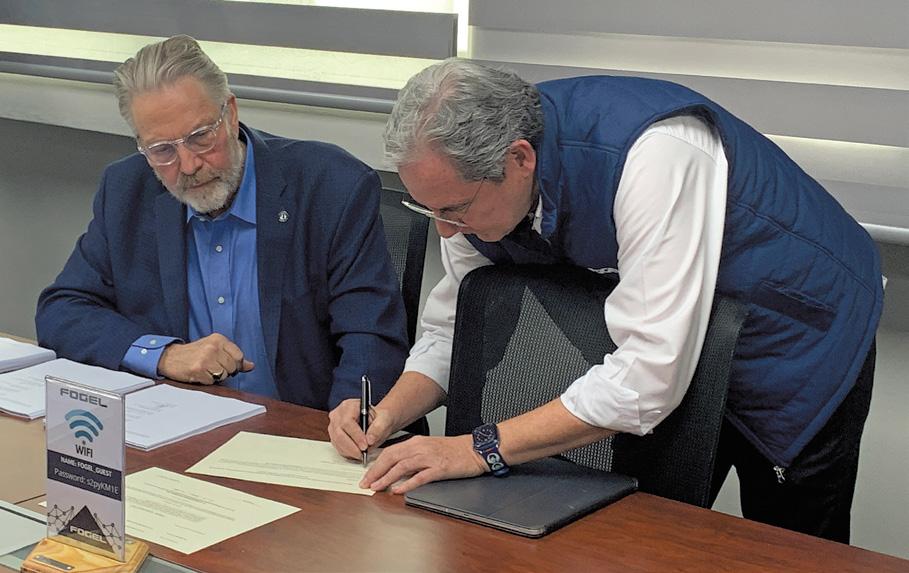
Americas region.
“We are thrilled to welcome Fogel into the Hoshizaki Alliance family,” said Chris Karssiens, President of the Hoshizaki Americas Region. “This partnership emphasizes our mission of providing best-in-class solutions to our customers through synergies between our companies. We are merging our strengths in technology, but the real synergies are the people. It’s the people that
really matter.”
“The Hoshizaki Alliance has a proven track record of excellence and a strong reputation for delivering superior quality products,” said Jacobo Gustavo Bernardo Tefel Farrer, President of Fogel. “We are excited to join forces with the Hoshizaki Alliance and leverage our combined capabilities to drive growth and innovation in the commercial refrigeration market.”
The integration of Fogel into the Hoshizaki Alliance will enable the group to offer an even more comprehensive portfolio of products and solutions to its customers. This expanded product lineup will empower customers to streamline their operations and enhance their overall efficiency.
About Fogel Company, Inc.: With more than 55 years of experience in Latin America, Fogel is one of the world’s pioneer companies in the design and production of commercial refrigeration equipment. In Guatemala, they manufacture and supply commercial refrig-
continued on page 112

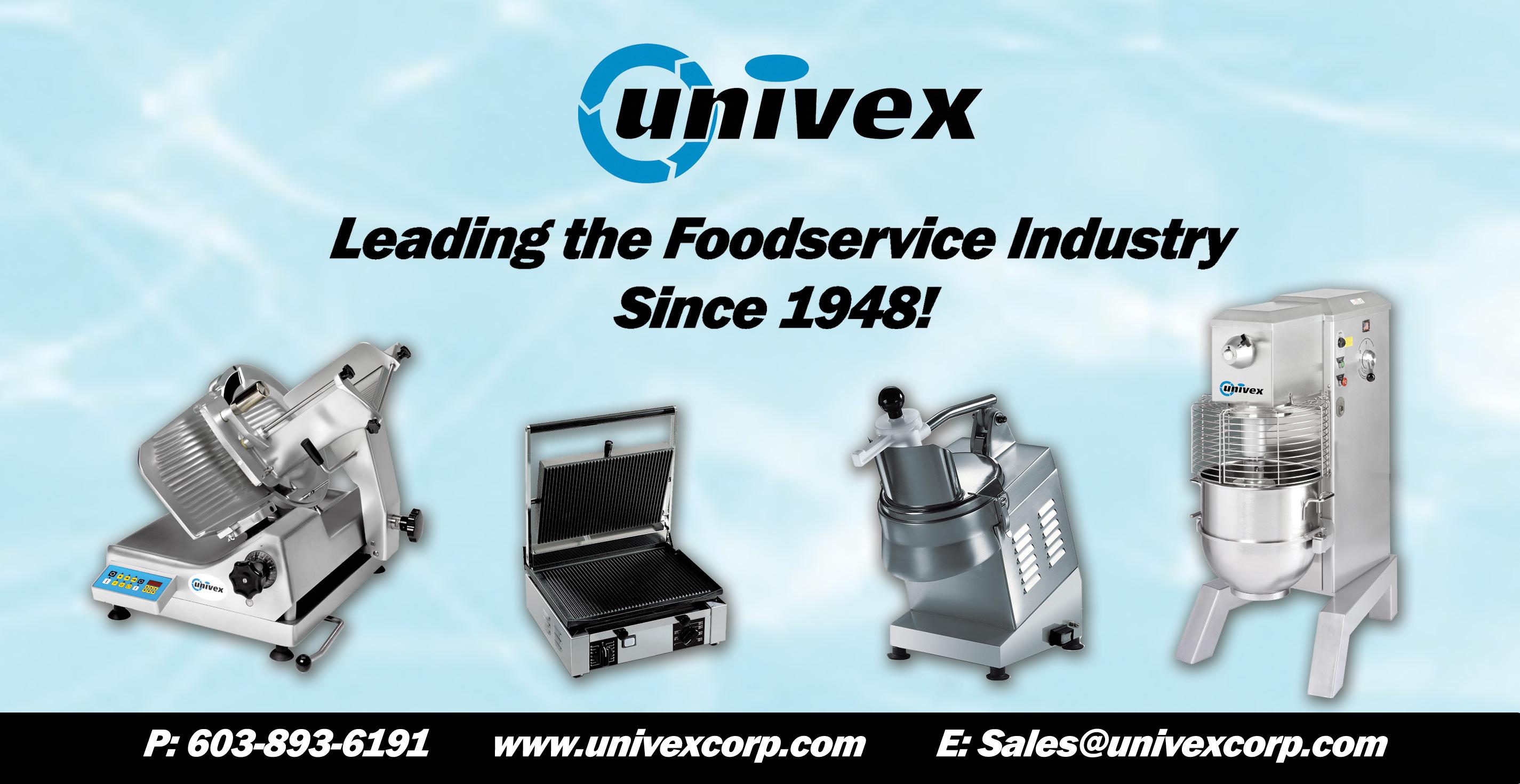
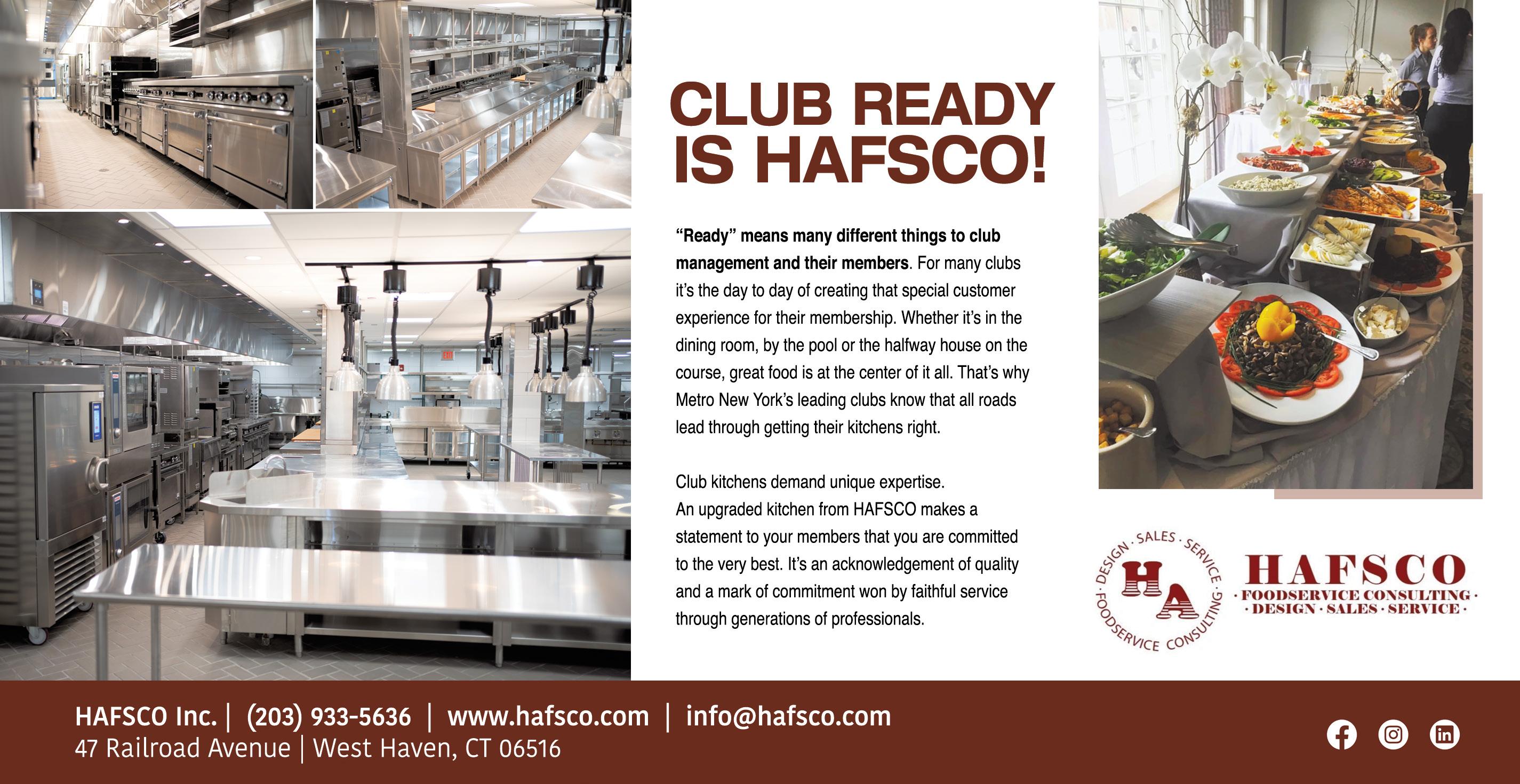
erators to meet the requirements of customers in more than 50 countries around the world. As part of Fogel’s commitment to the planet, the company has implemented a policy to care for the environment throughout all processes, including design, manufacturing, as well as materials and parts sourcing.
About the Hoshizaki Alliance: The Hoshizaki Alliance of the Americas Region is a group of independent companies united by the common goal of meeting the needs and demands of its customers through original products with exceptional quality. Multiple companies united by shared geography and mission—creating trusted high-quality innovations for evolving customer needs.
Hoshizaki America is a leader in the design, manufacturing, and marketing of a wide range of products for the foodservice industry including ice machines, refrigerators, freezers, prep tables, display cases and dispensers. Jackson WWS, Inc. is a full-line supplier of high-quality commercial dishmachines including flights, conveyors, door-types, glasswashers and undercounters. Lancer Worldwide leads in innovation and is committed to delivering a beverage dispensing experience that exceeds customer expectations. Macom is recognized for their innovation, permanent technical evolution, high quality equipment and systems for professional kitchens in Latin America. The Hoshizaki Alliance is diverse in origin— each company having its own unique story, culture, and services—yet all contribute to the evolution of Hoshizaki as a whole with products and services that enhance the lives of its customers.
For more information about the Hoshizaki Alliance and its comprehensive range of solutions, visit hoshizakialliance.com.
SCOOP knows that in the world of foodservice, time and labor efficiency are paramount to achieving profitability. Businesses are under constant pressure to maintain high standards of cleanliness in their establishments. Electric Glass Washers like Bar Maid (pictured at top) offer several benefits, particularly in commercial settings such as restaurants, bars, and cafes.
Efficiency: Electric glass washer’s clean glasses quickly and efficiently, saving time for staff members when compared to hand washing.
Consistency: These machines ensure consistent cleaning results. This consistency helps maintain high standards of cleanliness and hygiene.
Labor Savings: Reduces the need for manual labor dedicated to washing glasses. This allows staff to focus on other tasks, improving overall operational efficiency.
Versatility: Many manual glasswashers are designed
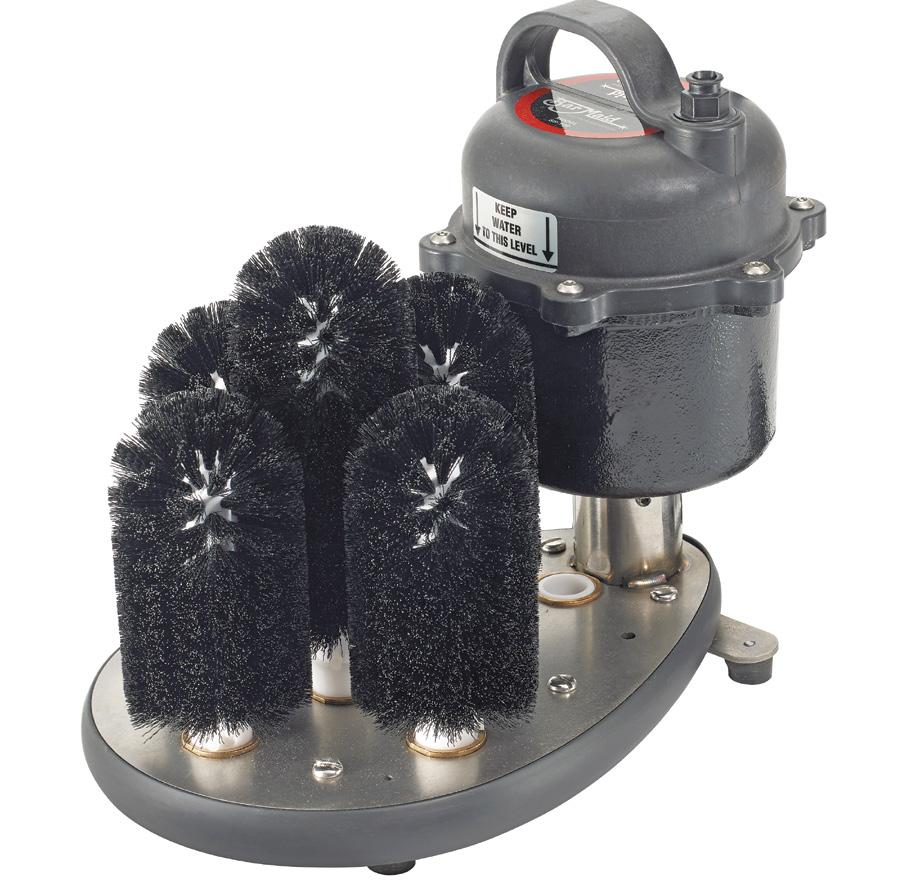
to accommodate various brush styles, making them suitable for different glass types, establishments and beverage serving needs.
User-Friendly: Manual electric glasswashers are typically easy to operate, requiring minimal training for staff to use effectively.
Customer Satisfaction: Clean glassware enhances the overall customer experience by ensuring beverages are served in sparkling, sanitary glasses, which can lead to higher customer satisfaction and repeat business.
Learn more about electric glass washers at www.wincous.com or watch an instructional video at https:// youtu.be/s2_pUxDeerA
SCOOP knows that the equipment and supply marketplace has continued to evolve with continuing consolidation. Tri-State Marketing has announced expansion into New England. As of last month, the Westchester, NY based “rep” firm will represent Rational USA in New England. RATIONAL ovens have revolutionized the culinary world with their
state-of-the-art technology, exceptional efficiency, and unparalleled cooking results for baking, roasting, steaming, or grilling.
Tri-State Marketing has added Alexandra “Alex” Hamilton as a new Sales Associate to support growth in New England. Alex brings over 8 years of experience in the food service industry and holds an MBA and culinary degree from Johnson & Wales University in Providence, RI. Her expertise and passion for the industry make her a valuable addition to our team as we continue to grow and expand our presence in New England. Hamilton comes from very special pedigree. Her late Grandfather Ira Kaplan was a legendary figure both local and nationally for decades in the E&S industry.
NY based Culinary Depot announced that Marcus Czapnik has joined them as the Director of Outside Sales. Marcus will be overseeing the existing outside sales team and will be expanding the team to new territories across the U.S. in order to serve the growing demand of its customers with a local sales presence. Max Foster who has been filling this seat until now has been promoted to CSO. Czapnik will be reporting to him.


Culinary Depot is in the top 20 foodservice equipment dealers with salespeople across the country.
SCOOP is sharing that the 2024 James Beard Foundation Scholarship applications are open. If you or someone you know is looking for financial assistance to get an education in the culinary industry, take a look at this year’s offerings. Whether you’re an aspiring restaurateur, beverage professional, or food advocate, you have the opportunity to secure funding before the next school year. For more info, go to jamesbeard.org/scholarships continued on page 114

Kroger Sets Goal to Protect Pollinators, Biodiversity and Whole Foods Market Implements New Pollinator Policy
SCOOP learned that The Kroger Co. is the latest retailer to announce a new goal to advance sustainability in its fresh produce supply chain that will further protect pollinators and biodiversity. Whole Foods Market implemented a new pollinator policy.
Kroger will require all of its fresh produce suppliers to use Integrated Pest Management practices for all products supplied to Kroger by 2028 or 2030, based on the grower’s size. Medium- to large-sized growers will be expected to meet the goal by the end of 2028, and small-sized growers by 2030.
“We depend on a healthy and resilient agriculture supply chain to keep bringing fresh, affordable food to more of America,” said Lisa Zwack, head of sustainability for Kroger. “This new goal reflects Kroger’s evolving approach to sustainability and resource conservation, including setting clear expectations with growers to support the transition to more sustainable fresh food production.”
Protecting biodiversity is an important part of Kroger’s community impact strategy, called Thriving Together. By encouraging growers to use less pesti -
cides, the company is taking steps to improve pollinator health outcomes. This work builds on Kroger’s existing focus on conserving natural resources in its supply chain, including through its seafood sustainability and no-deforestation commitments.Kroger worked with the Sustainable Food Group, a branch of IPM Institute of North America, to develop the goal and roadmap to compliance. The company also consulted current best practices and interviewed suppliers to ensure the goal was both impactful and achievable.
“We are incredibly proud to have supported Kroger in the development of this policy, which will drive positive outcomes for biodiversity, including pollinator and broader agroecosystem health through adoption of robust Integrated Pest Management and other sustainable agriculture practices across fresh produce supply chains,” said Ariel Larson, senior project manager at Sustainable Food Group.
Suppliers can comply by achieving one of the following certifications: Bee Better; Biodynamic; Certified Sustainably Grown; Equitable Food Initiative; Fair Trade International; Fair Trade USA; GLOBAL G.A.P.; LEAF MARQUE; MPS-ABC; Rainforest Alliance; and Regenerative Organic
SCOOP heard that Chef Richard Sandoval, global pioneer in contemporary Latin cuisine with 60+ restaurant locations worldwide, announced the launch of the third iteration of his Viva Abejas (“long live bees”) campaign, focusing on the significance of bees in the food cycle –and teaching children about it!
The 360-degree campaign, inclusive of philanthropy, F+B and retail elements, provides participating restaurants with a limited-time honey-focused menu and the opportunity to install an on-site beehive system. For the first time this year, Viva Abejas also includes an educational component in which Richard Sandoval Hospitality aims to teach 60,000 early learners about the importance of bees through a signature in-school lesson plan in partnership with Title-1 elementary schools and through Chef’s children’s book on food sustainability.
As one in every three bites of food depends on bees for pollination, the global decline in the bee population is of the essence. The cultural sustainability of Mexican cui-
continued on page 116

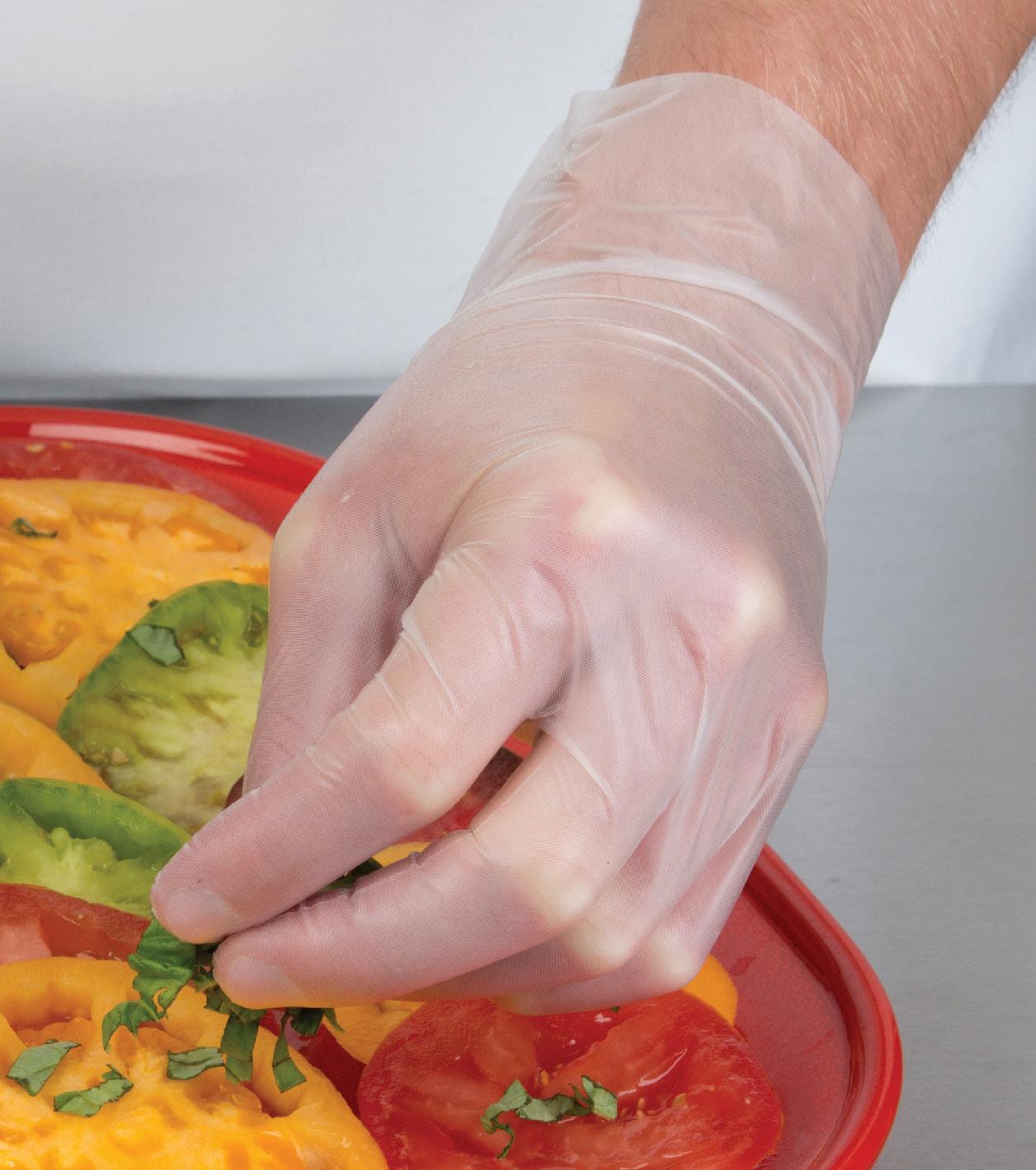


sine in particular is susceptible to bee decline as indigenous ingredients like tomatoes, vanilla, squash, cacao, chiles, and avocados all require pollinators to thrive.
SCOOP heard that Firehouse Subs, founded by two former firefighter brothers, is embracing its roots and launching the 2024 Veteran and First Responder Development Incentive Program (“The First Responders Program”) to attract current or former first responders or veterans to become franchisees in the fast-growing restaurant brand.
The First Responders Program offers $100,000 cash to open a new Firehouse Subs restaurant and will offer the same for a second and third restaurant. Unlike most incentive programs in the restaurant industry, this is not a credit against future payments; it is up-front cash to help first responders or veterans build an exciting business in their local community.
To learn more about owning a Firehouse Subs franchise visit: https://www.firehousesubs.com/own-afranchise.
SCOOP heard that premier quick service restaurant group Captain D’s has announced a new partnership with supply chain solution specialists Foods Connected.
The leading seafood chain has a 50-year history in the industry, and has grown in size in recent years, today operating 535 restaurants across 23 states. The business is overhauling its supply chain management processes to reaffirm its commitment to the highest levels of quality, sustainability and compliance.
The Foods Connected software solutions will enable Captain D’s to:
• have complete visibility of their suppliers’ compliancy journey towards FSMA 204
• generate centralized supplier approval data and set up automated accreditation processes
• deliver real-time incident and risk management
Foods Connected are an industry leader, providing cloud-based software solutions that simplify the food
industry supply chain. Their tools are designed to ensure food service providers, food and drink manufacturers, retailers, and other food businesses can manage and report on traceability, compliance, product lifecycle management, procurement, quality control and sustainability.
Sandestin Golf and Beach Resort announced the appointment of Juan Bochenski as executive chef of Hotel Effie. Bochenski is helming the kitchen at the hotel’s signature restaurant, Ovide, and overseeing all aspects of food and beverage operations across the hotel’s four restaurant outlets and in-room dining. In his new role, he supervises the culinary team, manages budgets and maintains the overall guest experience. Bochenski also works closely with local farmers and vendors to ensure the hotel restaurants continue to serve farm-fresh and sustainable ingredients whenever possible.
Born in Buenos Aires, Argentina, Bochenski has had an impressive career, working at luxury resorts across the globe, including Arcis Golf in Dallas; Baker’s Bay Golf & Ocean Club on Great Guana Cay, Abaco, Bahamas; Resorts & Residences by Cuisinart on Anguilla; Jade Mountain and Anse Chastanet resorts on St. Lucia; and Rosewood Hotels & Resorts’ Inn of the Anasazi in Santa Fe, NM.
THesis Hotel, a lifestyle hotel in Coral Gables known for its chef-driven culinary concepts and experiential activations, has appointed Chef Nicolas Mazier as its new executive chef. Mazier is an accomplished chef with more than two decades of industry experience and a fervent passion for authentic global cuisine. Mazier will introduce new menus at Mamey, the hotel’s signature restaurant, which will continue to serve a global fusion of island cuisine under his leadership. Mazier will also introduce new food and beverage concepts on the hotel’s ground floor and rooftop.
Mazier’s gastronomic journey began at Lycée Régional Hôtelier Jean Paul Passedat in Marseille in 2001, where he dedicated six years to earning various degrees in advanced cooking, creations, decorating & catering, restaurant & kitchen management and cooking, baking & catering. Simultaneously, he sought real-life experience by working as a station chef under Chef Dominique Frerard at Le Trois Forts at Sofitel Marseille Vieux Port. After graduating, he ventured to Miami. Mazier embraced a role as an executive sous chef at Nobu Miami from 20102016, steering the Nobu name to new heights by overseeing a global brand expansion. In 2016, he ventured into authentic Spanish cuisine, launching Tatel at The
Ritz-Carlton, South Beach. In 2018, he joined MILA, a “MediterrAsian” concept, collaborating with Michelinstarred French chef Thierry Marx. Most recently, he lent his expertise to Kuro, the fine dining Japanese restaurant at Seminole Hard Rock Hotel & Casino Hollywood, revamping the menu with bold flavors and innovative techniques.
--The Balfour Hotel is elevating the food and beverage offerings for hotel guests and locals alike with the addition of Chef Antony Awak as Chef de Cuisine and Alberto Montesino as Lead Mixologist.
Graton Resort & Casino debuted Bistro 101, a new restaurant with a wine country inspired menu by Chef John Trunk. Trunk is a second-generation chef originally from Poughkeepsie, NY. He graduated with honors from The Culinary Institute of America in Hyde Park, NY. After graduating, he worked in New York City as a sous chef, private chef and caterer. Trunk moved to Sonoma County, where he was the opening sous chef of The West County Grill in Sebastopol, headed up by Chef Jonathan Waxman. He then worked as a restaurant chef for Chef Cindy Pawlcyn in Napa Valley and was also the chef of the Pullman Kitchen in Santa Rosa, before joining the Graton food & beverage team in 2019.
Don Antonio, a Manhattan institution specializing in Neapolitan pizza fritta is now helmed by decorated pizzaiola Giorgia Caporuscio. Having recently taken over the business from her father Robert Caporuscio, Giorgia is one of the few recognized women pizza makers in both her native Italy and adopted home of New York.
1920 Bar & Bistro has transformed an iconic brick structure into 1920 Bar & Bistro.The kitchen is spearheaded by Chef Lazaro Alvarado, who draws inspiration from his Mexican roots and his passion for Italian cuisine. Chef Lazaro’s culinary cred includes such local favorites as Pane E Benne in Westport, Paci in Southport, and Bridge Market in Westport. Beverage Director Gordon Abraham brings over 20 years of mixology experience to the spirited “Bar” element of 1920 Bar & Bistro. Abraham was most notably shakin’ and stirrin’ up cocktails locally at Shore and County Club in Norwalk and Posa Ristorante & Vineria and Bernard’s in Ridgefield prior to creating the beverage program for 1920.

from page 100
do most of the work. Employees may need to apply slight pressure but should be careful not to hang on the handle or press too hard.
It is easy to make the mistake of not cleaning effectively, but taking on the task correctly doesn’t have to be difficult. Food processors with removable parts make the job especially easy. Kitchen staff can remove the hopper and cutting tools and wash them in a threecompartment sink or the dishwasher. They should always refer to the operator manual to see which parts can go into the dishwasher. Allow removable parts to air dry before reassembling. Always
hang up cutting tools on a wall rack after cleaning to avoid damaging the tool.
To clean the base of the food processor, use a sanitizing solution and cloth to wipe away excess debris.
When used properly, a continuousfeed food processor can contribute to efficiency in the kitchen and help restaurants make the most of their available labor. With less time spent prepping produce, nuts and cheeses for recipes, chefs and their staff can spend more time focused on recipe development and streamlining operations to better serve their customers. experience.”
from page 102
AWARD RECIPIENTS ARE:
• Alpha Cloud – Patty Quality Assistant by Aniai
• OrderHQ™ Exterior Smart Food Locker Solution by Apex Order Pickup Solutions
• Auto Seasoning & Auto Packaging Station by Atosa USA, Inc.
• ImVection IMV-4E by Blodgett Ovens
• E-Series 24G by Broaster Company
• Nexa™ Concentrates 2.0 Hand Hygiene System by Ecolab
• Rapid Multi Surface Disinfectant Cleaner by Ecolab
• Evo EVent® Open Canopy Hood by Evo America, LLC
• Mytico Due by Franke Coffee Systems
• AURA by Henkelman
• CL Rack Conveyor Dishmachine by Hobart
• TRI-TEMP Kold Pak Pizza Prep Tabletop by Kwick Cool
• PizzaBot™ by Lab2Fab
• Discrete CFV by Newton CFV
• Everpure EZ-RO Reverse Osmosis System by Everpure from Pentair Water Solutions
• Torq Fryer by PITCO FRIALATOR
• iCareSystem AutoDose by RATIONAL USA
• Y-Valve by T&S Brass and Bronze Works
• I-robo by TechMagic Inc
• True Ice machine by True Manufacturing Co. Inc
• CHEFTOP-X™ Digital.ID™ by UNOX INC.
• ERGO Series by Varimixer
• XPress™ Multipurpose Cooktop by Waring Commercial Products
• Cervizi by Wild Goose Filling
• The M5 Bargun By Wunder-Bar
The 2024 KI Award recipients will be featured in a dedicated Kitchen Innovations Showroom in the South Hall and highlighted in a special session, titled “The Kitchen of the Future: Kitchen Innovations Awardees Paving the Way for What’s Next” on Saturday, May 18 at 3:30 p.m. For more information about the National Restaurant Association Show and to register, visit nationalrestaurantshow.com.
the toll meat consumption takes on the environment. It takes substantially more water to produce one pound of beef than it does a pound of wheat. Raising animals for consumption produces excessive amounts of carbon dioxide, methane, and nitrous oxide. Livestock contributes to water pollution and the reduction of wildlife habitats. According to some studies the single most impactful action an individual can take to fight global warming is to adopt a vegetarian or vegan diet.
While that may be true on paper, to get the full environmental benefit of cutting meat out of their diet, an individual would need to limit their food consumption to locally sourced items. While they may experience cost savings with the change, they’d need to ensure those saved dollars were not reallocated to consumer goods that have their own carbon footprint. At the end of the day, even if there are flaws in some of the reasoning, these concerns are what is driving people to change their diets.
There’s little downside to offering plant-based protein options. The general population is becoming more open to those options, and individuals who follow a plant-based diet will patronize places with stronger options than a salad for dinner. If you are looking to add this to your menu, restaurant owners should keep the following in mind.
Transparency and Clarity
Everyone wants to know what they are eating, but plant-based options can easily become confusing. This happens both because people are less familiar with them and because it’s easy for consumers to make assumptions based on how alternative options are named or described. Burger King was met with trouble with their Impossible options - though the “Impossible” was a plantbased alternative to the burger patty, they were still cooked on the same broilers as meat products, which made consumers feel misled.
Appropriately label whether your food items meet vegetarian or vegan definitions, since the presence of plant-based protein may lead to consumers making assumptions about the entire dish. This
from page 8
also entails information about any sauces or accoutrement included with the dish. Just because some consumers are not strictly practicing, you must assume some are.
If you serve homestyle fare, a new menu item featuring grains and vegetables your customers have never heard of might not be the right move. Instead, strategically integrate these options within your existing menu to make the option less daunting to your regular guests. For example, offer a plant-based burger alongside your traditional ones, or incorporate tofu or tempeh as protein alternatives in popular dishes like salads, stir-fries, or wraps.
Similarly, you don’t need an entire new menu section. Incorporate plantbased protein options with the rest of your menu. By presenting these options alongside familiar choices, you make it easier for customers to explore plantbased alternatives without feeling overwhelmed by a separate section dedicated to them.
Plant-based diets are nothing new, but the increase in plant-based and alternative protein options reflects a combination of current consumer preferences and a willingness to try new things. While plant-based protein may never surpass meat, it’s not a fad that is going to fade any time soon.
Business owners don’t need to redesign their full menus to accommodate this trend, and the effort is likely to be well worth it. By incorporating plantbased options within existing menus, the food service industry can not only meet the evolving demands of consumers but also contribute to a sustainable and inclusive culinary landscape.
Joy Pouros works as the authority writer in the Training department at Culinary Software Services, where she writes on topics as diverse as human resource issues to increasing profits. Joy entered the industry working as a Nutritional Aide in the Chicagoland area before moving into writing and consulting. Joy now specializes in marketing and public relations and writes for a variety of industries.

from page 12
ers and foodservice equipment dealers only profit from selling you equipment, so the sooner you must replace your ice machine, the sooner they profit again. For your service company, there’s some money to be made through performing routine maintenance, but pricey repairs are far more lucrative for them.
The only one who has your business’ best interests at heart is you. Instead of making the most common decision when it comes to your ice equipment, ask yourself what the wisest decision is.
Does buying and owning ice equipment make sense for your business financially? Is it your best option?
The Alternative: Renting
If your answer is no, the next question is how else can you provide ice to your customers?
The answer is simple—rent your ice machine instead of buying it. Let’s look at the advantages of renting your ice equipment:
• Little capital required upfront
• No interest payments
• All ice machine bills become taxdeductible Operational Expenses
• No need to care about machine depreciation
• Easier, cheaper ice machine replacement
• Minimal or no out-of-pocket maintenance and repair costs
• No need to look for an ice machine service company
Overall, renting your ice equipment is more affordable and more convenient than ownership. Most, if not all, ice machine stresses are the rental company’s responsibility, not yours.
If you’re going to consider a rental, here are some important questions to ask:
What does it cover besides the equipment?
• Maintenance?
• Repairs?
• Backup ice?
Often, not all of these are included for free.
How long is the estimated delivery time?
• Several weeks or months is now common with smaller rental compa-
nies, due to supply chain delays. How long can your business wait for ice?
What ice machine brands, models, and ice types are available?
• Local and regional rental companies are likely to have a more limited selection
What is the company’s customer service like?
• Do they only take calls Monday –Friday during bank hours? Do they work holidays?
Ask your accountant or business advisor how ice machine rental can benefit you. If you’ve been running your business for a while, consider asking your accountant how much money you’ve spent on ice machine-related expenses since opening. The answer may surprise you!
John Mahlmeister is the chief operating officer and co-founder of Easy Ice. Co-headquartered in Phoenix, AZ and Marquette, MI, Easy Ice is the only national provider of all-inclusive commercial ice machine subscriptions. Since its founding in 2009, Easy Ice has rapidly grown their number of ice machines under management to over 30,000 units across 47 states and partners with dozens of foodservice equipment dealers to offer ice machine rental solutions to their customers.
For more information, please visit EasyIce.com.
automatically appearing in the shopping cart, making them easy to miss by consumers. The complaint further alleges that Grubhub does not deliver search results based solely on consumers’ queries or delivery distance, but factors in “undisclosed, paid marketing arrangements.”
Delivery drivers are an essential, and indispensable part, of the Grubhub ecosystem. One of Grubhub’s mandatory fees included with each delivery order is a “Driver Benefits Fee” that the company says “helps guarantee minimum wage and healthcare benefits for our drivers so they don’t have to depend on tips.” Grubhub uses this fee to fund its Proposition 22 obligation, which requires rideshare and delivery companies to provide benefits to drivers including minimum compensation and health care subsidies. The lawsuit filed last month alleges that most drivers are not eligible for this health care subsidy due to Grubhub’s requirement for a minimum of 15 hours of “engaged time” each week. Most drivers don’t meet this mark every week since time is only considered “engaged” between choosing to accept an order and dropping it off.
The complaint alleges that Grubhub misleads consumers in its language, implying that all California drivers are guaranteed health benefits through the fee. Additionally, the suit alleges that Grubhub’s language deceptively implies to consumers that drivers are no longer dependent on tips.

Counsel’s office to explain our business and look forward to continuing to support Los Angeles restaurants, diners, and drivers.”
Restaurants have come to rely on app-based delivery services for an additional income stream, especially during the COVID-19 pandemic. For years, online delivery platforms like Grubhub and UberEats have offered convenient ways for diners to discover and order food from restaurants but have also seemingly contributed to an imbalanced relationship between the consumer, the independent contractors delivering food, and the restaurants that often experience high rates of requests for refunds. The county’s lawsuit alleges that Grubhub has charged restaurants for refunds without vetting the accuracy of the complaint with the restaurant. Restaurants are not informed until after the refund has been issued and have no opportunity to refute the chargeback.
The suit alleges that this practice has caused financial harm to California restaurants, with one owner in Los Angeles County quoted as saying that the refunds cut into “as much as a quarter of the revenue his restaurant earned on Grubhub’s platform” in the complaint.
In a statement a Grubhub spokesperson said: “Grubhub is disappointed Los Angeles County has moved forward with this lawsuit and plans to aggressively defend our business in court. Our practices have always complied with applicable law, and in any event, many of the allegations are incorrect or have been discontinued. We’ve sought to engage in a constructive dialogue with the County
But for now, Los Angeles County counsel Dawyn R. Harrison noted that the “lawsuit seeks to hold Grubhub accountable for their unfair and deceptive business practices that deceive and overcharge consumers, exploit drivers, and unfairly short-change restaurants on order refunds,” and that her office “is committed to protecting County workers and residents and holding businesses accountable for violations of consumer and workers.”
This lawsuit, and the similar ones that preceded it, raises questions about the sustainability of the delivery app operating model in Los Angeles. In the past few years, fee caps and delivery and service worker benefits have become a recurring flashpoint for discussion and litigation in cities across the country. Come July 1, a new California law will ban unadvertised service fees and surcharges on restaurant menus, and fastfood workers have recently formed a new minority union with the SEIU.

from
tally friendly solutions are not just a want, they’re a must,” Winters observed. Today, phade® provides straws for countless well-known brands, including Dunkin Donuts and the New York Yankees, resulting in an expected production yield of nearly 4.5 billion straws by the end of 2024; “A billion straws, stacked end-on-end reaches halfway to the moon – when you think about how many biodegradable, marine-safe straws we’ve made, it’s huge,” Winters noted.
phade® straws have also proven to be a hit with consumers for their unique blue coloring. Citing the many red, white, and translucent straws already on the market as inspiration behind his choice, Winters settled on a bright, ocean-like blue: “It’s simply a feel-good color, and it pays homage to the fact the product is marine biodegradable – hopefully people will see the product and understand our difference.”
Despite phade®’s relatively recent inception, Winters remains optimistic about the manufacturing capabilities of PHAs and their integration into future products. On the horizon
for the WinCup brand are cups. “Paper cups are so misleading,” Winters explained. “They’re fiber or cellulose on the outside but are actually lined with polyethylene plastic.” As a result, paper cups are not biodegradable, recyclable, or compostable because of these sneaky plastic additions. WinCup hopes to launch an eco-friendly alternative this year featuring the same distinctive phade® Blue color in the cup lining as in their straws.
In a world increasingly concerned about the environmental impacts of plastic pollution and production, phade® provides an effective alternative, and most importantly, hope for a plastic-free world. The remarkable story of the straw’s development and the equally groundbreaking results of biodegradability testing prove that phade® is an industry-leading innovator. Next time you look out onto your restaurant’s dining area and see a sea of phade® straws, know that you’re part of a plastic-free revolution.

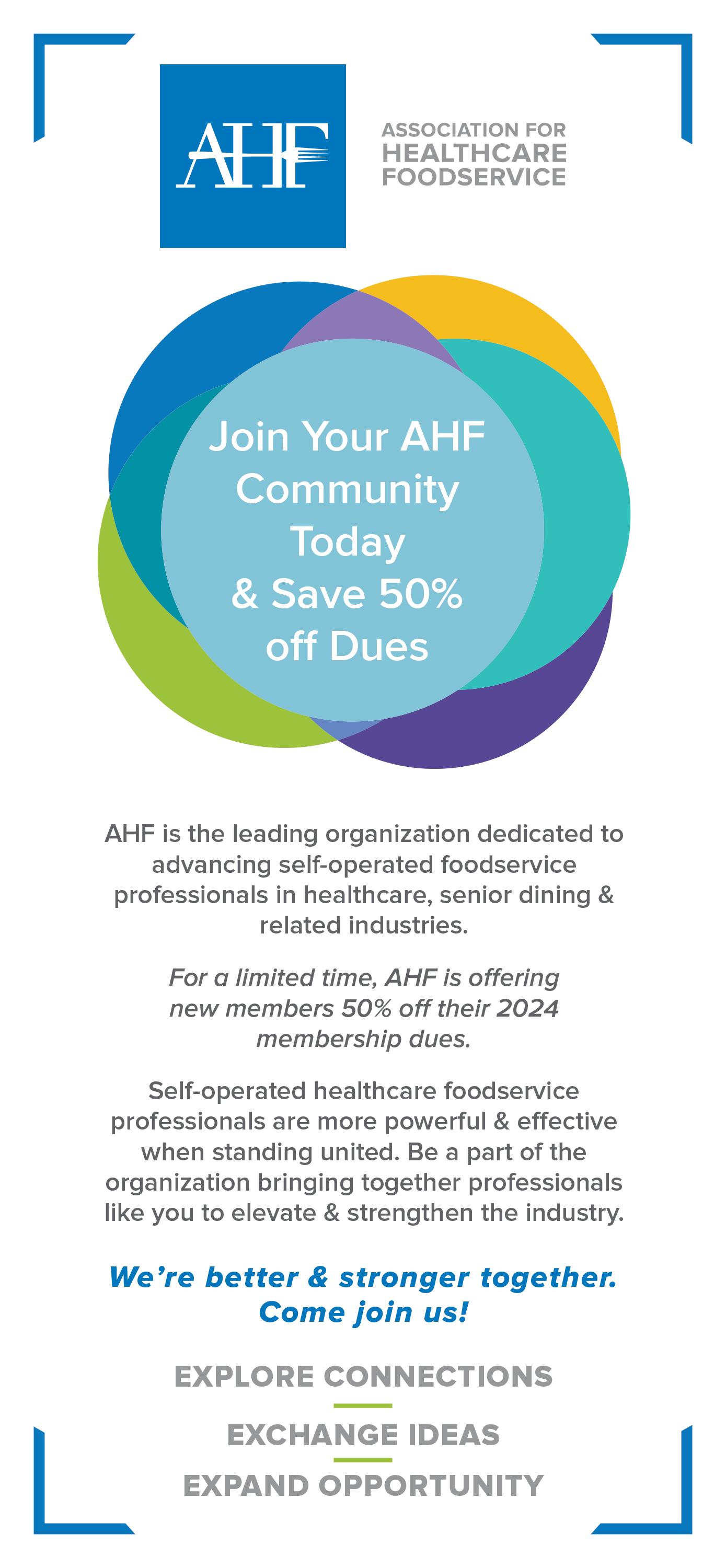

from
here it is a center island – almost as an open kitchen. The bartenders are in own bubble and have to go just one and a half steps to reach everything they need – bottles, glass, ice, etc.”
Grajewski has had plenty of interviewees come look behind the bar and scratch their heads as it’s a whole new look and way of bartending for American bartenders. He comments, “Like with anything that’s new it takes a minute to get used to. The first things most bartenders see is confusing; it doesn’t look normal. But soon they understand the concept. It’s so comfortable to work with.”
Comfort was top of mind for EuroBar designer Livio Lauro. The pandemic left him plenty of time to contemplate how much he missed those European-style bars where he first got his start. So, he set out to make something he knew other bartenders would appreciate and created a layout that reduces the bending a lot. He points out, “With traditional bars you have to make things on top of the bar, at the scupper rail. EuroBar is different in that it does not assume you can only make the drinks on the bar top. It hosts its own area to make drinks with all the bar tools and garnishes; it gives the bartender their own little chef’s prep area and it does so by scooting the ice to the right of the bartender rather than front and center.”
He continues, “It also puts the speed rail to the right hand, which means there’s no bottles poking them, there’s no banging their knees – they can bend forward a little more comfortably. And with more range of motion.” Both Lauro and Ellis undertook a lot of motion studies, considered OSHA standards, and applied all they learned to creating bars that function smoothly and as comfortably for as many bartender body types as possible, enabling them to pour liquid with their wrist, rather than their arm and shoulders. Lauro remarks, “Bottles weigh 6 pounds each. So, when you’re picking up two bottles, and then add the weight of your arm and you’re doing this all night long, the impact on your back is something to consider.”
Lauro also considered production speed and functionality when designing EuroBar, just as Ellis always does with his commissions. Both of them have been advocating for bartenders to have a seat
at the design table, and Grajewski, de Soto and Negri agree that it’s about time this happened. It is better for all involved; bartender; operator; and guest. Ellis comments on why bartender input is crucial to successful design and what kind of thinking a working bartender brings to the table that another designer may not, “It’s understanding exactly how drinks are made and produced and how that differs from bar to bar. You have to know ‘how do I optimize from the simplest beverage programs to the most complex?’ I am always thinking about how I can give an operator the best chance for a profitable bar, and happy bartenders for longest amount of time.”
Things are pretty complex in Andrew Pollard’s world. He is the Director of Mixology, The Venetian Resort Las Vegas, in charge over 60 places on property where one can find a drink between all their pools, bars, restaurants, lounges, and banquet/meeting space. He recently installed the EuroBar in the resort’s newest restaurant, Sala. The bar’s sleek European efficiency and charm aligned with the resort’s ethos; Pollard points out. He adds, “It’s a beautiful aesthetic meeting volume cocktail bar. It’s clean and sexy, it has its own mood. But it is also functional and has everything you’d want it to have in a cocktail bar.”
He continues to explain the attraction to both bartenders and guests, “I think the charm of it is to introduce – as we lean into our Italian DNA – the feel and look of delivering on how we are always talking about experiences and destination. Sala which translates to living room is a feel of home. There’s a feel of home for our bar staff. We’re giving them an elevated offering of a place to work from. It is organized, clean, things are hidden. It’s about working down, more organized for functionality and capabilities. While it propels them to think differently, once they become more acclimated to that they can appreciate the model of the European bar.”
With everything right at hand, and post-shift nights no longer spent in a desperate search for aspirin, working on a well-designed and functional bar enables bartenders to be happier. And provide better, and faster, service. Pollard already installed EuroBar at Sala and intends to put it in when more new con-

Tobin/Perlick – Photo courtesy of Bosa.
cepts open to make sure he can serve the volume of people flooding through the resort. He says, “There are thousands of people coming through here each day, to every bar we have. We have to be looking at operational efficiencies to be efficient at scale.”
To do that at the level Pollard is operating, or even on a busy night at one of de Soto or Negri or Grajewski’s bars rethinking what bar design is – just like rethinking what country music can be – is important. And it really only works well when you have the right people on the team. Frankie Stavrianopoulos, the beverage director at Bosa, Haverhill, Massachusetts’ newest Italian spot, loves the team behind the bar they just installed and knows his new beverage team will love it too. He notes that it is Ellis’ Perlick line, and they chose it because, “Part of what we consider is safety and ergonomic correctness. You have people standing on their feet all day. With this bar everything is placed properly; we have glass washers at our disposal, wells are put in the right position. Of course, at first glance it might look the same – it’s the same stainless. But here there’s an inlet where the well is, versus most bars I’ve witnessed which have an overhang on which you’d knock your knees. You’re actually closer to your customer sitting at the bar than a 6-9” extension you can’t work into. The layout is well done, and it means you’re not swinging around the back bar. If you’re talking about volume for busy nights, you want quick access. It’ll speed things up.
We’re in a numbers game. No matter the concept – you want to put out as good a product as quickly as possible.”
De Soto considers his bartenders and guests as he looks to the reality of the past and shares hope for the future. He concludes, “When you come to a bar most of it is horribly designed. They don’t think about the bartenders in the bar. Maybe now they will.”
Spring is a time for new beginnings, and the upcoming holidays are the perfect time to explore some new wine options for your menu.
While we realize that not everyone needs a kosher wine, it is impossible to ignore that the demand for kosher wine is growing in the US.
So, to keep up with the trends, and satisfy the palates of kosher and non-kosher wine drinkers alike, not to mention opening your doors to more potential guests, check out some of these new options and you’ll surely make everyone’s holiday season happy.

The world famous Rocca delle Macie is producing a kosher Chianti Classico for the first time. Exclusively for Royal Wine Corp. (with more to come); SRP $25
Presenting, Lovatelli - a new line of fine and affordable Italian wines.

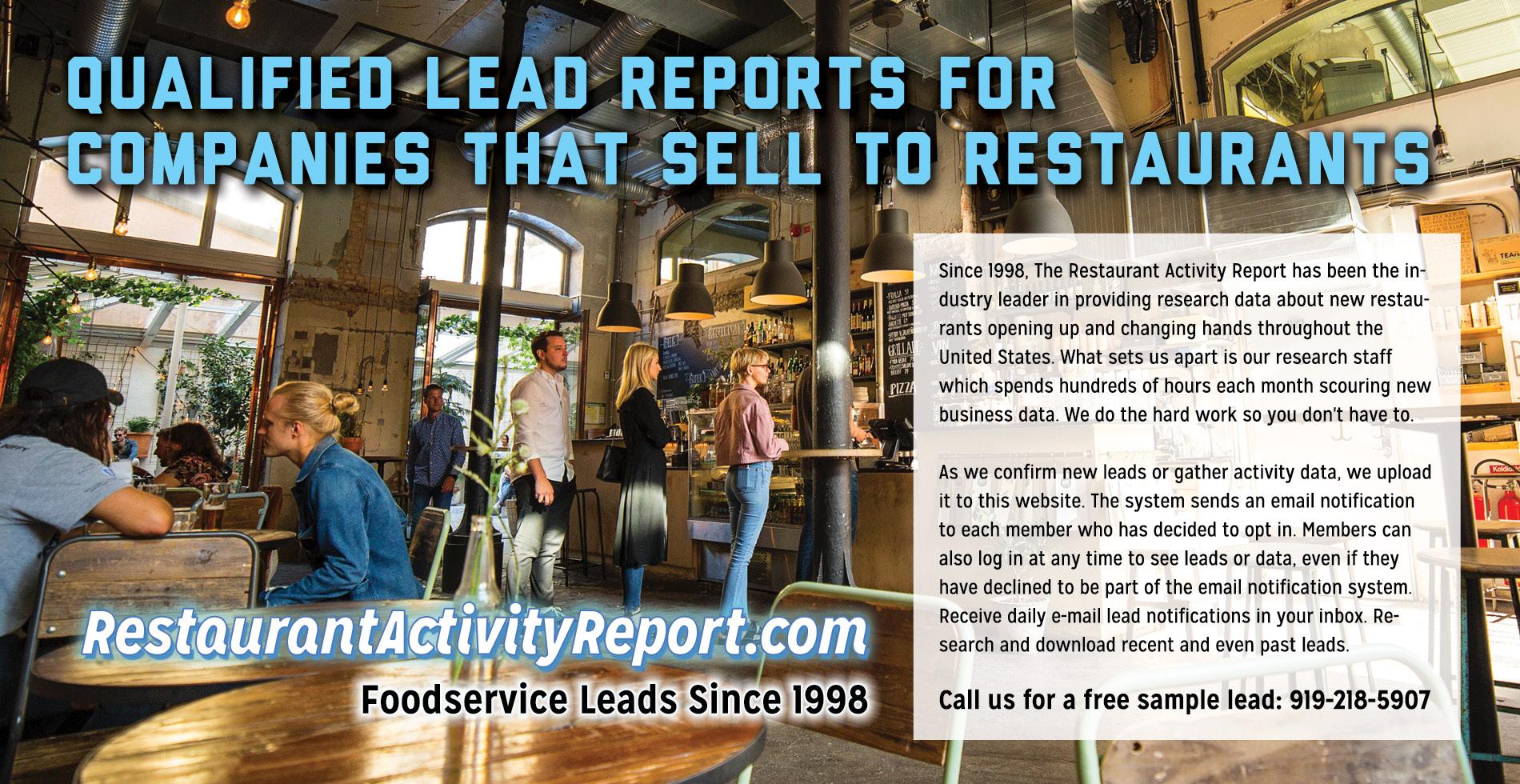
ability by leveraging as many guest engagement platforms as possible.
Not sure where to start with this restaurant industry trend? Take inspiration from Dunkin’. Despite being a

An example of current restaurant trends: Dunkin’s email outreach to Dunkin’ Rewards members. Photo courtesy of Dunkin’.
from
household name, the coffee chain has developed a robust guest engagement strategy that includes fun social media posts on multiple channels, branded merchandise, compelling email offers, and a gamified loyalty program to keep customers engaged and coming back for more.
In 2021 and 2022, many restaurants played it safe and welcomed diners back with familiar favorites. But as time has gone on, consumers have been craving innovation and restaurants have been delivering with out-of-thebox (and off-menu) ideas. Now creative menu offerings are one of the most prominent trends in the restaurant industry, with nearly half of operators currently selling prepared foods to go, 42% offering grocery items, and 39% selling merch, according to research from TouchBistro.
If you’re not doing so already, expand on your menu by selling merchandise and packaged goods to make more revenue onpremises and online, reach new customers, and grow your brand. Look to Olive Garden for inspiration. The Italian restaurant chain sells its viral cheese graters at its restaurants and grater-inspired holiday-themed merchandise online. The holiday gear was so popular that it sold out.

It may be easier to find staff now than in the past few years, but keeping staff is still a challenge – just consider the wave of unionization that characterized most of 2023. With the average staff turnover rate unchanged from 2022 at 28%, one of the biggest priorities for 2024 will be operators investing in staff retention to lower this figure. And make no mistake: staff retention isn’t simply a restaurant business trend, it’s a necessity for treating workers well.
With many U.S. Starbucks workers fighting to unionize last summer, the coffee giant has made some attempts to retain staff, such as increasing wages and making it easier to accrue PTO. Other staff retention strategies can include expanding benefits and offering more opportunities for professional advancement.
Though it can feel tough to invest in new technology when the economy is
unstable and inflation is still high, investing in a modern, cloud-based POS system can deliver gains for years to come. Efficiency will be key to success in 2024 and cloud POS systems offer that efficiency.
Data from TouchBistro shows that the top three features restaurant operators look for in a POS system are ease of use, system reliability, and customer support – which are all things cloud systems and cloud providers offer. If you’re stuck in the past with a legacy POS system, invest in your future by switching to a cloud POS. By embracing this trend in the restaurant industry and switching to a cloud-based system, Hale & Hearty Soups saw a 60100% reduction in POS issues.

stores can cater to a wide range of tastes, ensuring there’s something for everyone on the menu.
One of the key advantages of ventless kitchen equipment is its ability to deliver consistent, high-quality results with minimal supervision. Whether it’s frying up a batch of golden-brown fries or grilling a perfectly juicy burger, AutoFry and MultiChef excel at producing delicious meals with every order. This level of quality and consistency is essential for building trust and loyalty among customers, who can rely on their favorite convenience store for a satisfying dinner experience time and time again.
In the fast-paced world of convenience dining, speed is of the essence. With ventless kitchen equipment, convenience stores can streamline their cooking processes and serve up dinner orders in record time. AutoFry’s automatic frying capabilities and MultiChef’s lightning-fast cooking times ensure that customers never have to wait long for their meals, making it the perfect solution for busy individuals looking for a quick and convenient dinner option.
The safety features of AutoFry and MultiChef present significant benefits
for convenience stores. By minimizing the risks associated with traditional cooking methods, such as burns, fires, and accidents, these ventless kitchen appliances ensure a safer working environment for kitchen staff. With automated cooking processes and enclosed cooking chambers, the likelihood of accidents is greatly reduced, allowing employees to focus on delivering quality meals without compromising their well-being. Additionally, the elimination of external ventilation systems reduces the risk of air pollutants, contributing to a healthier indoor environment for both employees and customers. Overall, the safety features of AutoFry and MultiChef enhance operational efficiency and promote a culture of safety within the convenience store setting.
Once the dinner menu is in place, convenience stores must effectively market and promote their new offerings to attract customers. Social media platforms, digital signage, and in-store promotions are all effective ways to generate buzz and drive traffic to the store. By highlighting the convenience, quality, and variety of their dinner menu, convenience stores can position themselves as the ultimate dinner destination for busy individuals and families.
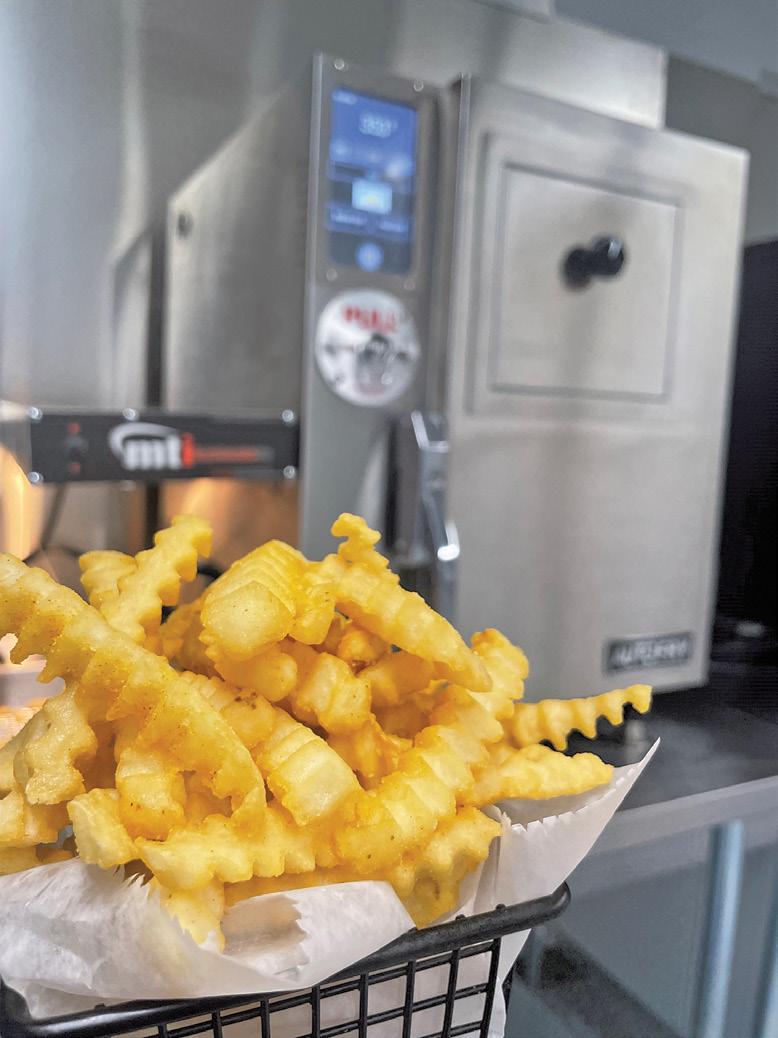
Convenience stores have a significant opportunity to capitalize on the growing demand for convenient dinner solutions. By investing in ventless kitchen equipment like the AutoFry and MultiChef, convenience stores can expand their dinner menus, deliver high-quality meals with speed and efficiency, and attract a new wave of customers seeking convenient dining options. With the right equipment, menu offerings, and marketing strategies in place, convenience stores can become go-to destinations for delicious dinners on the go.
To learn more about how ventless kitchen equipment can benefit your business, visit mtiproducts.com today!

from page 68
work independently. A digital learning initiative in the program helps to make this possible. In collaboration with the CIA, the program includes videos that offer benchmark technical skills that associates can return to if they don’t feel competent at a certain technique.
Being part of the culinary team at Delaware North isn’t just about mastering skills in the kitchen—it means all-around customer service and developing competency and capabilities around leadership on all levels. “Basing the structure around mentorship and on-the-job training means that we’re building a culture where it’s natural to learn while working,” Piuggi noted. This makes it easy to teach and learn foundational skills in real time, but the program isn’t limited to learning kitchen skills; it’s really about developing careers. “You’re not going to retain everybody,” Piuggi said. “But if they’re better off for having come to work with us, they’re going to be stronger culinarians and they’ll be out in the field. We’re not only strengthening our program, we’re strengthening the industry.”
This is the kind of return they’re looking for on the program—the elevation of food across the board, from restaurants to events to concession
parties is trained and understands employment practice risks so they don’t cause a liability that could lead to an employment practices claim .
4) Know your recourse as an employer. Employees aren’t the only ones that have legal recourse to file a claim. Employers (especially when they hold workers’ compensation policies through private insurers) have recourse as well. Employers have rights and shouldn’t be afraid to speak up if there’s a fraudulent claim and more.
5) Retain a comprehensive Employment Practices Liability (EPL) insurance policy. An employer is more likely to have an employment
stands. While of course there is always a desire to attract and retain employees, the real return comes from further interest in the program. “More and more we have associates reaching out asking to be part of the program and chefs asking to be mentors,” Piuggi said. “People who have been part of the program are interested in staying on to mentor others.” Associates get CIA certification at the end of the program, which jumpstarts their careers in all areas of food service and hospitality.
Piuggi said that Delaware North plans to expand the program within the company, and hopes to put all of their management employees through the program. Once they finish the program, they will then stay on to do peer mentoring and continue with their higher education.
Delaware North’s commitment to the training of its chefs will enable the on-going development and retention of their chefs. In addition, the program will maintain high standards of quality and continue to delight customers with delicious and safe food offerings over a diverse portfolio of venues.
Interested applicants can learn more at delawarenorth.com
from page 18
practices liability insurance claim than a general liability or property loss, according to studies conducted by the Professional Liability Underwriting Society. A good broker will determine which EPL policy is right for your business and, in the event of a claim, help you amend your policies and procedures for successful renewal.
Any business can be the target of a potentially devastating lawsuit. Safeguard your business against any employment-related risks through the best practices describes and comprehensive EPL insurance protection.
Learn more at https://www.hubinternational.com/industries/hospitality-insurance/restaurant-insurance/

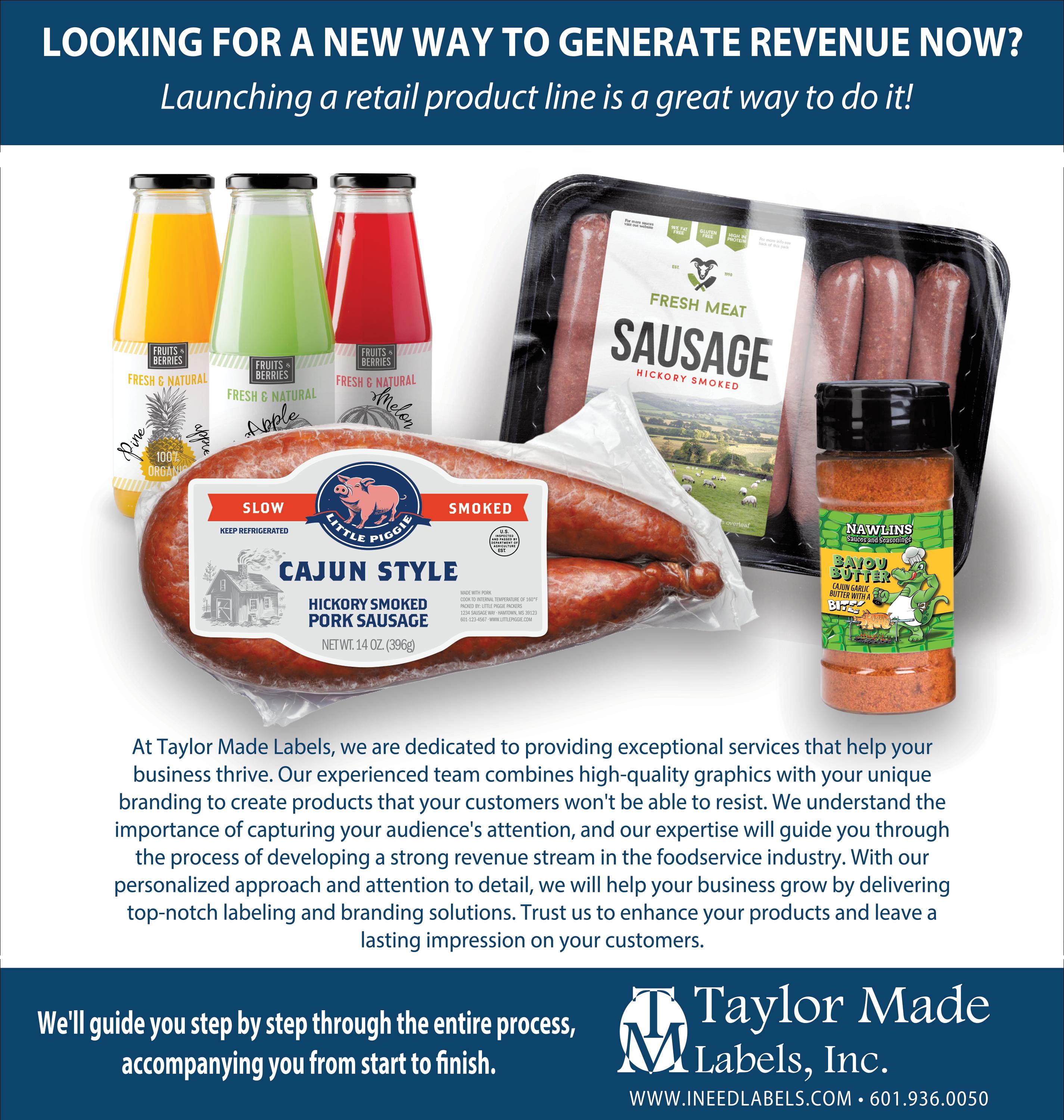
perfectly tender-crisp. If you choose to go the simple route, rubbing the head with olive oil and seasoning liberally with salt, pepper, oregano, and lemon the surface with brown perfectly with each tiny bud bursting with that beautiful, roasted flavor.
How about a luscious, creamy vegan cauliflower and leek soup, with hints of roasted garlic and the gentle perk of lemon zest? Or a decadent cauliflower mash with milk and yogurt, infused with fresh herbs to accompany a gorgeous roasted spatchcock chicken with pan jus?
Have you considered stewing or steeping cauliflower in a rich, hearty sauce? Think of something in the Southeast Asian style, like a Thai-style cauliflower curry, with rich coconut milk, sweet peppery heat, and a bright lime kick; or a deeply flavored Indianstyle curry, perhaps with garam masala to bring out the sweetness of the cauliflower itself, alongside the warming spices.
Let’s not forget the simple roasted cauliflower, tossed in olive oil, seasoned with salt and pepper – of course
you can add an array of spices like turmeric, za’atar, mustard, or a curry mix, but it’s unnecessary – the surface caramelization of the florets when roasted at high heat brings the modest seasoning to new heights, sure to delight diners every time.
Riced cauliflower can substitute for rice on a plate, but have you considered roasting the cauli-rice for a healthy, crunchy-textured garnish for dishes…like that cauliflower soup mentioned before…
Cauliflower is also an amazing alternative for gluten-free diners – though much more crisp than a traditional pizza or flatbread, there’s something about the softness that the cauliflower offers that makes it so much more satisfying than traditional gluten-free bread alternatives.
Oh, and don’t forget about eating it raw! The crunchy texture and haphazard surface area of the florets make it the perfect vehicle for serving with your favorite dips – both hot and cold. It also makes a wonderful addition to salads, adding a similar textural crunch to cucumber or raw bell pep -
CHERRY DUMAUALfrom page 30
I initially embraced a vegan lifestyle for health reasons. My daughter was experiencing persistent skin issues while following a vegetarian diet. Curious about potential connections, I removed dairy from her diet for a week. To my surprise, all her rashes vanished within that timeframe. This led me to delve into online resources, discovering numerous articles linking dairy to skin problems. As I continued my research and stumbled upon documentaries about the meat and dairy industry, I made the decision to go vegan that very night in 2016. Since then, I haven’t looked back.
The transformation has been remarkable, and at my current age, my doctor describes me as the epitome of perfect health. It’s not just a business for me – I live by the principles I advocate. Every aspect of my life aligns with my belief system, and I genuinely feel amazing.
What made you decide to close your
per, but reflecting the other flavors in the salad like a delectable epicurean mirror.
Kounoupidi in the [Greek] Kouzina (Cauliflower in the Greek Kitchen)
While I’ve talked a lot about the different things you can do with cauliflower in the kitchen, in Greece, we like to keep things simple – and delicious!
Taking note from my grandmother’s wisdom, I find tomato paste to be the perfect complement to cauliflower, like my favorite Kyknos. The unctuous, umami quality of tomato paste pairs perfectly with the subtle earthiness of cauliflower, and when cooked together - whether sauteed, roasted, braised, steeped, baked, or stewed – brings out this slightly sweet, comforting flavor that nothing else can achieve.
As we Greeks cannot live with olive oil, lemon, and oregano, these are the ideal complement for this cruciferous flower as well, and bring out the best
no matter the preparation.
Bright, briny flavors like olives and capers shine with cauliflower as the canvas, and the sharpness of Feta is always welcome alongside any – and every meal. Of course, we turn that on its heels, and pickle cauliflower for toursi (pickles) – an amazing Lenten snack (alongside other pickled vegetables).
I could go on and on about cauliflower, like so many of us have for so many years, but the truth is, there’s no need to! Cauliflower is the quintessential vegetable, and perfect ingredient for any kitchen – it’s tasty, healthy, and easy to prepare – what’s not to love about this magical mutant?!
All photo credits are Chef Loi
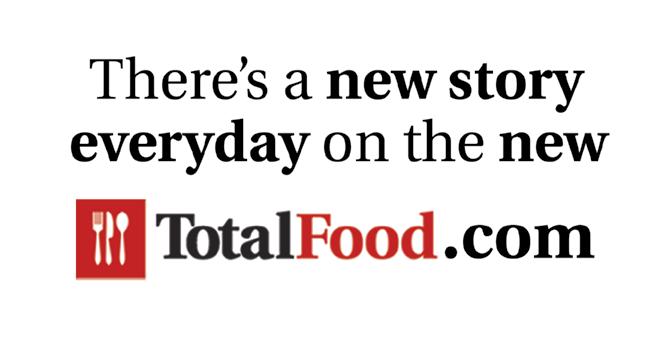
restaurants and open Chef Reina’s storefront and studio space in Brisbane, CA? Describe your concept for the storefront and studio.
I had a tough time with those restaurants because they didn’t truly reflect who I am. The restaurants’ name came from the previous owner, and I was sort of hiding behind the scenes, creating all the dishes and concepts. When the pandemic hit, it gave me a chance to start fresh and step into the spotlight as myself. I was also dealing with personal issues that made it clear I had a chance for a new beginning. So, I left the old life behind, opened a restaurant with my own name, and finally broke out of my shell. It was a really freeing moment in my life.
First, congratulations on your partnership with Mama Go’s and getting your vegan Filipino creations in one of San Francisco International airport’s best restaurants. Please share insight-
ful details on the strategic efforts that paved the way for this remarkable collaboration.
I appreciate it, but I have to give all the credit to Iva Chen, the genius behind this partnership. She’s dedicated to supporting local women in business, like herself, and giving them a chance to shine. Iva, I love you!
Could you share specifics on how you transform meat-rich traditional Filipino favorites, such as Lumpia Shanghai, Chicken and Pork adobo, and Sisig into delectable vegan versions?
Earlier, I discovered that mimicking taste is pretty straightforward, but replicating texture is the real challenge. Take Sisig, for instance – I use tofu and mushrooms and manipulate them to recreate the texture of pork snout and ears. We go through a process of cooking the tofu three times (fry, grill, sauté) and mincing it, along with the mushrooms, to make it
taste just like the authentic dish.
Looking ahead, what’s your vision for Chef Reina? What significant milestones do you hope to achieve in the next five years?
I envision giving talks worldwide about the restaurant industry and vegan cooking. I also dream of writing a book that shares my journey as an immigrant, a single mother, and an entrepreneur. I have an abundance of experiences to share. If someone like me had entered my life 20 years ago and offered guidance, I might not have faced the struggles I did. Nevertheless, my life has been wonderful, and I have no regrets. I am grateful for everything – it’s truly beautiful.
Discover more about Chef Reina at https://www.chefreina.com.

to becoming a Sommelier. He would start by telling me all about the wines we would drink with dinner and slowly over time, I started to get enamored with the idea of wine being so much deeper than anything I had ever thought before. Now I love talking about wine tableside and bringing my own unique take on being a restaurant Somm.
How did the concept for Sip N Spin at Vinyl Steakhouse come together?
The Sip N Spin evolved after the concept was created and operating when we realized that our diverse and vast array of musical choices being played could be paired with so many things around us. We curated the music to the guests in the restaurant, to the volume and vibes of the night, to the weather outside and so many other things to try to enhance the experience for our guests, that it only seemed natural that we could start pairing the music with the wine as well. So now when a guest chooses the Sip N Spin experience, we utilize our in-house Sommeliers to pick wines that pair best with one of our 2,700 Vinyl Records.
You’re dedicated to dining and music; how does that work?
Our founding vision is a concept we call our ‘Center Lane’ that we stay within. Having the best prime steak around with a bold glass of Napa Cabernet or an exquisite Bordeaux while the sounds of Can’t You Hear Me Knocking by The Rolling Stones is playing off the Sticky Fingers Album. This was the song we modeled the music of the concept around because it is full of energy, bravado and astoundingly good Rock & Roll. In general, we work around that original motif to now keep our center lane to 1960’s and 1970’s Rock & Roll. I grew up In Akron/Cleveland, Ohio, near the Rock & Roll Hall of Fame and have always felt this music is the greatest genre and full of energy, excitement and perfect for a steakhouse environment.
We have over a thousand of our best selections from our collection recorded into Discogs, an app which we give out to our guests on iPads if it’s a special occasion for them or if they really love music and request to get in on the
fun. We do our very best to honor their requests and the guests then become part of the experience and love it! Our collection includes many Jazz, Funk, Disco, Motown, Country, Hip Hop , Rap and R&B selections.
Tell us about the innovative Hospitality/Beverage programming.
We try to take Hospitality to new levels by first of all, providing genuine hospitality that is real and authentic, our staff isn’t doing this only for a paycheck, they are bought in on the concept and experience and want to genuinely take care of guests. How do we achieve that? They love and appreciate that we are making a steakhouse approachable to everyone. But really it starts by hiring for attitude over experience. We want nice people working for us that treat each other well. Our first motto of our mission statement is that ‘We value each other’ which puts this golden rule at the forefront of everything we do every day is to value one another and then our guests.
The second thing we do to enhance the hospitality is tell our associates to ‘think like an owner.’ Our associates are empowered to make very big decisions without having to find a manager or owner. We have had employees decide to buy a round of drinks for a table or send out an array of desserts because they know it’s the right decision. We have had employees decide to run out to the local store to get a guest a beverage they wanted that we didn’t carry. The list goes on in the ways our associates know that they are welcome to make decisions, even if they are ones that financially don’t benefit the company, to ensure every guest leaves extraordinarily happy. The third part of our hospitality program is that we ‘strive tirelessly for 5-star reviews’ which is proven in our ratings as one of the only Steakhouses in NYC to be rated 4.8 on google with over 300 reviews and constantly being in the top 1-3 in highest rated on Yelp. As of right now we sit at #1 highest rated on Yelp.
Who makes the selection of the music, the chef-driven menu, the wines?
The music is a nightly setlist picked out based around our center lane, but
we are always adding new music to the collection and never play the same records any two days in a row. We do allow our guests to pick out selections as well, especially if it’s a birthday/anniversary or special occasion. We read the room as well, if it’s filled with Business / Corporate men & women, we produce a setlist that will cater to that crowd being able to have some muchneeded conversation, nothing too overbearing or loud. If the place is packed with couples on dates, we will choose a setlist that matches that ambiance better with good present volume and more Funk, Disco or date night hits.
The food menu showcases beef and classics that have a small twist to them. Our cocktails are more aligned with a speakeasy, as we utilize unique ingredients and glassware. The wines from France, Italy and the Americas are on our two-page wine list - with prices you can afford.
Which POS system do you use?
Aloha by NCR
Kitchen equipment you couldn’t live without?
Hands down 100% it is our Montague Legend RADIGLO Steakhouse Broiler. This $20,000+ piece of equipment is a beast and it generates heat upwards of 1,800 degrees with its ceramic plate
from page 80 NYRS 2024
even though there’s lots of resistance, especially with the old-school operators,” the exec noticed. “These guys need to learn and understand that it’s not going anywhere.” Social media, especially since the launching of key platforms like Yelp and Instagram, has become a vital vehicle restaurateurs use to promote business and source reviews. With increasing digitalization amongst younger generations, social media is a massive driver of sourcing new business, and potential long-term customers, for restaurants of all kinds.
While the International Restaurant and Foodservice Show of New York has been a staple of tri-state area in -
heating technique. This allows us to create an incredible sear and crust on the steak while protecting its perfectly cooked interior to the desired temperatures. It also allows us to stay in business by cooking steaks at a temperature that doesn’t take our giant 38-ounce Porterhouse an hour to cook so we can get it out to the tables on time and perfectly made.
Share an example of a Sip N Spin curated experience.
Sample pairing with Champagne:
Prince’s 1999 album paired with an M. Haslinger Champagne from FranceI explained all the complex ways that champagne is made- the secondary fermentation, the dosage, the bubbles and how many different small details and nuances are needed to create a Champagne which has a small symphony of activity going on in the bottle. Much like this, so did Prince’s album 1999, his first with his band The Revolution. The Revolution brought along the use of synthesizers and drum kits and nuances complexity rarely yet seen in music and propelled Prince’s career to stardom.
The amount of activity in the glass surely matches with the amount of nuanced talent creating music in the band.
dustry programming for many decades, it’s clear that Celentano’s direction is helping push the show into new frontiers. With a renewed focus on education reinforced by pertinent programming and face-to-face interaction, the show establishes itself as a truly immersive experience.
For more information regarding the show, its programming, and registration, visit https://www.internationalrestaurantny.com/, or download the mobile app for access to venue maps, schedules, and event updates.

which offer a variety of snack options such as, snack cakes, granola, granola bars, and fig bars.
In terms of healthcare, Olmstead has seen many providers, in recent years, switch to McKee Foodservice products due to their quality. Each of the McKee Foodservice brands can provide visitors and healthcare patients with enjoyable snacks. The Fieldstone Bakery snack cakes and Sunbelt Bakery chewy granola bars also answer a key need for the healthcare operator.
Olmstead continued “Because of the softness of the Oatmeal Creme Pie and the chewiness of the Sunbelt Bakery granola bars, offered in both chocolate chip and oat and honey flavors, folks are able to enjoy a product that tastes good.”
In addition, the Sunbelt Bakery Chewy Granola Bars are made with quality ingredients and have at least six grams of whole grain per serving, making them a more attractive choice for healthcare operations. “Would you rather see your grandparent or older relative enjoying a snack from their childhood, or a liquid supplement that just ends up sitting?” said Olmstead.
Each of the McKee Foods brands, except for Drake’s® Cakes, can be ordered through broad lines, including Sysco and US Foods. The manufacturer offers competitive pricing, but, perhaps most importantly, McKee Foods is commitment to providing quality bakery snacks.
In terms of marketing, McKee Foodservice provides its customers with quality marketing materials for both vending and foodservice facilities to coincide with its programs. Their vending products can be purchased with corresponding display materials to attract customers and boost sales in any setting, from healthcare providers to other food service operators. Marketing products are also customizable and can be altered to fit the context of the operation. “We work as a team to build [your] business,” Olmstead said.
McKee Foods and its success may be credited to its success as a FamilyOwned bakery, even lending to con -
tinued operations through the COVID-19 pandemic. “It was all hands-on deck. Anyone who could work was working,” Olmstead said. Their brands’ pre-existing customer base and strength also helped the company flourish during the pandemic, as many were still wanting to enjoy their products. “It’s a team effort here,” Olmstead continued. “We’re family-oriented. The whole team wants to put out the best-tasting products.” With a long history of success and impact
on the snack market, McKee Foods is surely a brand to look out for as they continue to grow and expand into new markets across the country.
To learn more about McKee Foodservice healthcare and vending programs and offerings, or to get in contact with a regional sales representative, visit their website at https://mckeefoodservice.com/



SCS. “SCS applauds their organization in achieving third-party certification to ensure credibility of their product claims.”
Inline has begun incorporating the SCS certification mark on its website, marketing and sales materials, and packaging to increase customer and consumer awareness. The official certification reads, “SCS RECYCLED MATERIAL CERTIFIED. Conforms to SCS Recycled Content Standard V7-0 for a Made with 10% Post-Consumer Recycled PET based on a dry weight basis.”
With that level of commitment to providing the restaurant and foodservice community with green and sustainable solutions, Total Food Service sought to take a deeper dive to focus on what’s next in packaging. TFS visited with Carrie Cline, Inline Plastics’ Senior Brand Manager to get her thoughts on what lies ahead as takeout and delivery continues to grow in all segments of the industry.
Can you share your background prior to joining the Inline Plastics team? What attracted you to the opportunity at Inline Plastics?
My background includes managing core product lines for large fortune 500, B2B companies, as well as directing product development for web based B2C companies. With Inline, I entered the manufacturing space as a Senior Product Manager. What I have enjoyed the most is the innovation and nimbleness of the company in developing solutions. Inline is a private, family run company with a high paced environment and a blue ocean mentality that provides exciting challenges. I am now leading the Branding team as Senior Brand Manager and loving every minute of it!
Can you tell us more about reborn PET material that Inline Plastics launched in 2020? What are its key features and benefits?
In 2020 we launched our reborn initiative, adding 10% post-consumer (PCR) to all our products. What makes this different is how the PCR is recycled. The PCR flake is broken down to the molecular level - and then polymerized with virgin ones - also known as - Chemical recycling. Using a proprietary process,
called ‘Direct to Sheet’, a high performing material is generated, called rDPET™ (recycled Direct to Sheet PET). This process eliminates several energy intensive steps, significantly reducing the carbon footprint and making rDPET™ the greenest recycled PET material in the market.
Using chemical recycling, coupled with the patented sheet process creates the highest clarity material, free from tints, dyes, and inclusions like other recycled material options. The material remains pliable, allowing thermoforming to be more exact and efficient with less waste. The result – high quality products with well-formed seals, which extends shelf life, further contributing to sustainability.
How does the use of post-consumer content in your PET products contribute to sustainability efforts?
Utilizing post-consumer content reduces the need for virgin materials and diverts materials from landfills. By using materials that have already been used and recycled, it helps to close the loop in the recycling process, minimizing the environmental impact.
What motivated Inline Plastics to seek third-party verification for the claim that all your PET products are made with 10%-consumer recycled PET?
We see a lot of sustainability claims in the market that are unsubstantiated. Some companies make exaggerated claims as part of their marketing tactics that are misleading, called greenwashing. The lack of standardized definitions and criteria for terms like “sustainable”, “recyclable”, and “compostable” are often confusing to consumers making it difficult to discern which products are genuinely environmentally friendly, leading to skepticism, undermining trust in sustainability initiatives. Integrity and transparency are an important part of the way we do business. There are very few companies in the industry who share the data necessary to acquire a third-party certification. We felt it was important to verify our post-consumer content so our customers, consumers, and the industry can be confident and trust that we are a sustainability partner who delivers on our claims.
Could you explain the process of certification by SCS Global Services? What criteria did Inline Plastics have to meet to achieve this certification?
To receive a certification, our teams worked closely with SCS, providing details of our supply chain and operations by location. Data provided and reviewed was extensive. To avoid misrepresenting the operations of SCS, it is best to follow the link to their website https://www.scsglobalservices.com/services/recycledcontent-certification, and review information listed under ‘Process’ section of their page.
How does the SCS certification mark on your website, marketing materials, and packaging help increase customer and consumer awareness?
The SCS Global certification mark is an easily identifiable ecolabel consumers and customers recognize as a validation of outstanding achievement in environmental stewardship, social responsibility, and quality. It’s a quick, visual reminder of our commitment to sustainability.
What role does integrity and transparency play in Inline Plastics’ business philosophy? How does this commitment benefit your customers?
With over half-a-century in business, our longevity is directly connected to our integrity and transparency as a business partner our customers trust. We deliver innovative, high-quality products, along with effective solutions that meet emerging market demands. Our products are exactly what we claim they are. Our customers always come first, and this is just one more way our teams are proving it, day in and day out.
Can you share any insights into the manufacturing data, processes, and chain of custody procedures that were evaluated during the SCS audit?
We will let SCS Global speak to their audit process to make sure we do not misrepresent their procedures. If interested, we can arrange an introduction to SCS Global and they can review their programs in detail.
How important is it for Inline Plastics to help combat unsubstantiated claims in the industry and provide verifiable proof of your sustainability efforts?
As an industry leader, it is important for Inline to set the standard for acceptable sustainability business practices and be on record as willing to allow third-party auditors to verify our claims and processes. We lead by example.
In what ways will the inclusion of Inline Plastics’ Essentials® and Safe-TFresh® product lines in the SCS Green Products Guide benefit your customers and the industry as a whole?
The entire packaging industry benefits by expanding awareness that sustainable product options are not only available, but are some of the highest quality, best performing products in the marketplace. There is no need to sacrifice. Our customers can have both.
Looking ahead, what are Inline Plastics’ future plans for sustainability and incorporating more recycled materials in your products?
This is only the beginning. Inline’s Innovation Center and team of R&D experts are already hard at work on creating new packaging that combine creative solutions with the latest technologies to meet marketplace demands. We foresee post-consumer content only growing as a part of our already extensive portfolio of product families.
Cline and the Inline Plastics team continue to design and manufacture packaging solutions that keep food products safe, fresh, and enhance shelf merchandising. Their Safe-T-Fresh® line, a tamperresistant and tamper-evident product is an industry leader that utilizes their patented tear-strip technology, providing retailers and consumers with greater product protection. The company also offers the most complete line of automated equipment to close, lock and label their containers. Headquartered in Shelton, CT, Inline Plastics celebrated its 50th Anniversary in 2018. For more information on their vast line of award-winning products, visit inlineplastics.com.

ter each wash to ensure your machine is functioning within the recommended limits.
Of equal importance to pressure calibration is temperature calibration, since washing your dishes at the right heat setting is important to making sure they are thoroughly sanitized. The proper setting depends on the type of machine your operation uses: most commercial dishwashers are heat-sanitizing, and require high water temperatures, or chemical-sanitizing, and require lower water temperatures. For the former, ensure your rinse temperature is at a minimum of 180F, and your wash temperature is at a minimum of 150-160F, depending on the make and model. For the latter, ensure a minimum temperature of 120F for both cycles.
Despite being automatic, dishwashers also need routine cleaning to ensure proper functionality with every load. It’s the most important component in your warewashing program, so it’s crucial to clean it every day. Here are a few tips to consider implementing into your dishwasher cleaning routine: first, drain and clear the water tank after every shift. Letting dirty water build up in the tank permits the growth of harmful bacteria and nasty odors. Second, thoroughly clean the wash arms, rinse arms, and pump screen. Remove each element at the end of every shift and deep clean them to prevent internal components from clogging over time. Finally, let the dishwasher dry at the end of each workday by propping the door open, even slightly. Damp environments are
breeding grounds for the kinds of bacteria and mold that can compromise your operation and re-soil dishes.
The final common warewashing mistake is failing to routinely delime your dishwasher. Over time, water deposits limescale and mineral buildup on the walls and cleaning elements of your machine, reducing both wash effectiveness and machine lifespan with increased wear-and-tear. When limescale builds up on heating elements, they wear out faster and cannot heat the machine to the proper temperatures to ensure thorough cleaning and sanitizing of dishware. Rewashing dishes constantly and replacing machine parts are both costly and interrupt your cleaning operation. To prevent mineral build-up, use delimer on your machine bi-weekly to monthly, depending on the hardness of the water in your area. Deliming can also dramatically reduce water and energy expenditures by improving machine performance.
Warewashing is the backbone of every commercial foodservice operation. Correcting these six common mistakes can ensure that your operation runs smoothly, efficiently, and properly, by cleaning dishes completely and protecting your machine. Following these tips saves you valuable time, resources, and money by preventing re-washing, machine component failure, and extending the lifespan of your dishwasher.
Our Imperial Dade warewashing professionals are here to help. Visit us at imperialdade.com.




from
page
each tap also allows businesses to look at insights that calculate how well each beverage is performing, and which beverages customers tend to go back to after trying samples. Each time a customer wants a new beverage, they’re free to refill it themselves with no waiting necessary.
The ever-changing options in the self-serve taps also make it particularly exciting for the customer. “People want to go back to the same bar, but they don’t want to see the same products every time they go back,” Goodman said. In PourMyBeer’s industry report, they found that many customers returned each day from Thursday through Saturday, because they knew that the same product wouldn’t be available come Sunday.
This constant rotation of beers is especially beneficial in places where there are loyal craft beer followers. “They’re going to go places based on where it will be on tap,” Goodman said. But PourMyBeer isn’t just limited to craft beer; many businesses are also utilizing its technology to serve cocktails. To guarantee quality and freshness, the taps feature a technology that keeps the drinks mixing from first pour to last.
PourMyBeer’s growth is a true testament to the number of issues they have solved in just one simple solution, one of which is the large carbon footprint many food service businesses emit each year. “We’re preventing millions of cans and bottles from going to waste with our technology,” Goodman said. In addition, the selfserve dispensers have a high return on investment. Goodman said that most of their businesses make a return on their investment after just six and a half months of implementation. “And with hotels,” he continued, “we have some that have had a two-month return on investment.”
Another data point collected was the percentage revenue of staffing. In food service operations, that percentage is generally in the 30% range. However, in operations featuring PourMyBeer’s technology, the percentage is just 10%. “We’re not trying to displace workers, we’re trying
to repurpose them,” Goodman said, emphasizing the company’s priority to make things as efficient as possible.
During the pandemic, PourMyBeer faced many of the same struggles as others in the food industry. However, its business model was surprisingly resilient through it all. “In a traditional tap room, you may have seven or eight people touching that glass before the last customer is touching that glass,” said Goodman. “With selfpour, the only person touching it is the customer.” Because of its safe and minimal-contact design, PourMyBeer lost very little time in the building of its brand.
According to their report, PourMyBeer has generated 60 million additional dollars in revenue for its restaurant and bar portfolio of clients at a variety of venues across the country. And yet, while the company has proved to have great success, Goodman says that it is still in its early stage of awareness and belief.
With both the literal and figurative bars being raised, PourMyBeer is at the center of a revolution in which hospitality is still defined by a restaurants staff while being supplemented by the very latest technology.
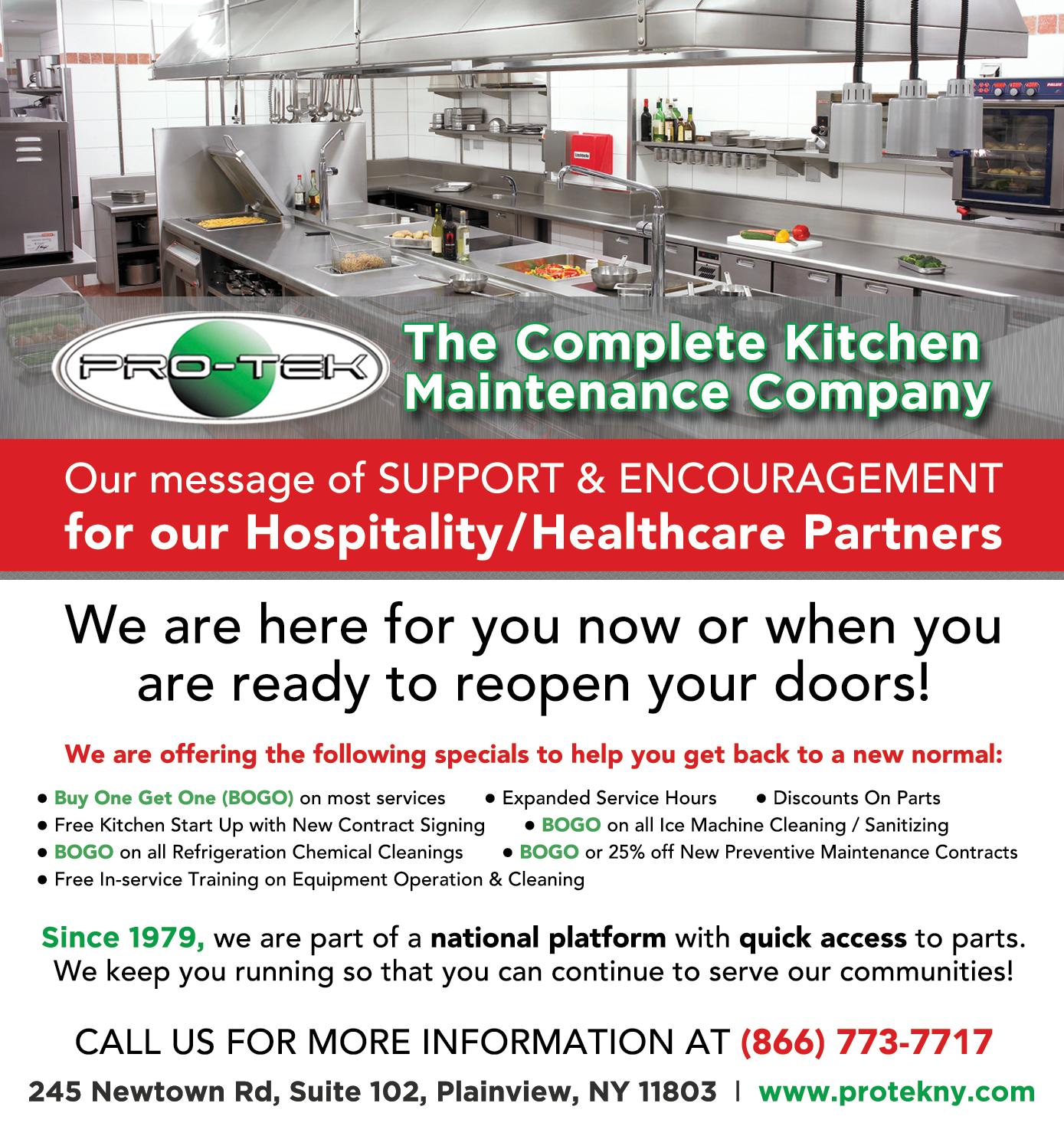



six years ago, and with the company’s vision, has extensively expanded the breadth of offering. Ward explained, Atosa’s factories are a manufacturing powerhouse: “Most do not know that Atosa’s factories produce a significant amount of smallware equipment and metal pans in the industry still to this day and Atosa products have been in the US market since the early 2000’s through OEM and private labels. In 2013 Michael Shao, CEO and President of Atosa USA, Inc. brought the Atosa brand of products to the U.S. market.”
As Atosa continues to raise the bar, Ward finds herself at the forefront of a fundamental change in the foodservice industry. The Atosa team is on the cutting edge of kitchen automation and robotic solutions where they’ve won 2 Kitchen Innovation Awards (KI Awards) from NRA with their Intelligent french fry robotic solution and their auto seasoning and auto packaging solution, which is only the beginning as they are devel -
from page 14
oping prep robotics to chop and slice vegetables, a convenience store autoreplenishing robot to restock walk-in fridges, pizza robotics, and all with the goal of providing solutions for a completely automated kitchen.
For Atosa, the experience with automation and robotics began in its own factories. It has perfected automated manufacturing to produce most of its products. “Nearly 85% of the manufacturing process is performed by automation and robotics,” Ward noted, “As a result, we can mass produce large quantities which gives us the efficiency in production to produce large volumes of equipment, produce a consistent product, reduce labor costs, and eliminate human error. Despite the significant
role automation and robotics play in the company’s day-to-day operations, Atosa still employs several thousand people globally, with over 200 employees in the USA.
Moreover, Atosa strategically oper-

ates through a network of 12 distribution points across North America. This strategic positioning allows them to consistently stock an average of 70-90 million dollars’ worth of inventory, ensuring a comprehensive range of products. With such an extensive inventory nationally, the company can offer prompt service, with an average nationwide delivery time of two days.
Ward’s career set her apart as a champion in the workplace, both in terms of the success of Atosa, but also in her quest to support multi-generational brickand-mortar dealers and the careers of young women in the food service industry.
For more information regarding Atosa and its line of equipment and supply solutions and automation, visit https://atosausa.com/.


